We took an early train to Verona, which is just under an hour north of Bologna by train. We were blown away by Verona! It’s such a charming city, with a rushing river providing a soothing background noise in many parts of the old town. Verona is second only to Rome in the number of visible ruins from the 1st century BC to the 4th century AD. It even has a Roman colosseum (arena) and an amphitheatre! It was a full day, taking the last train back to Bologna, but we were able to see a lot since Verona a relatively small city.
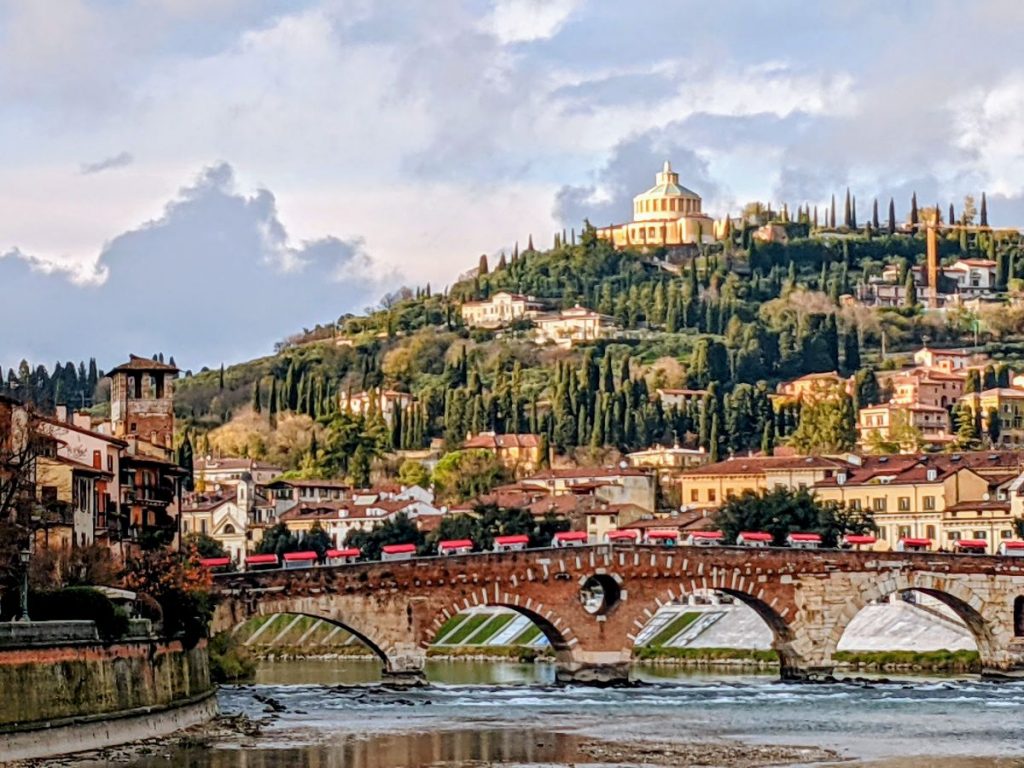
Casa di Giulietta (Juliet’s House)
Shakespeare’s Romeo and Juliet weren’t real, but were inspired by earlier works of Italian poets, some of which may have been inspired by actual events (feuding families and starcrossed lovers). So, Juliet’s House in Verona (where Shakespeare’s story is set) is a representation.
Because Teresa has taught Romeo and Juliet for the past 18 years, it was a must visit.
“Two households, both alike in dignity,
In fair Verona, where we lay our scene….” – William Shakespeare Romeo and Juliet – Prologue
Legend has it that if you touch Juliet’s right breast, you will have good luck. (This is a replica of the statue that’s inside the house. The right breast is polished clean from all the good luck!)
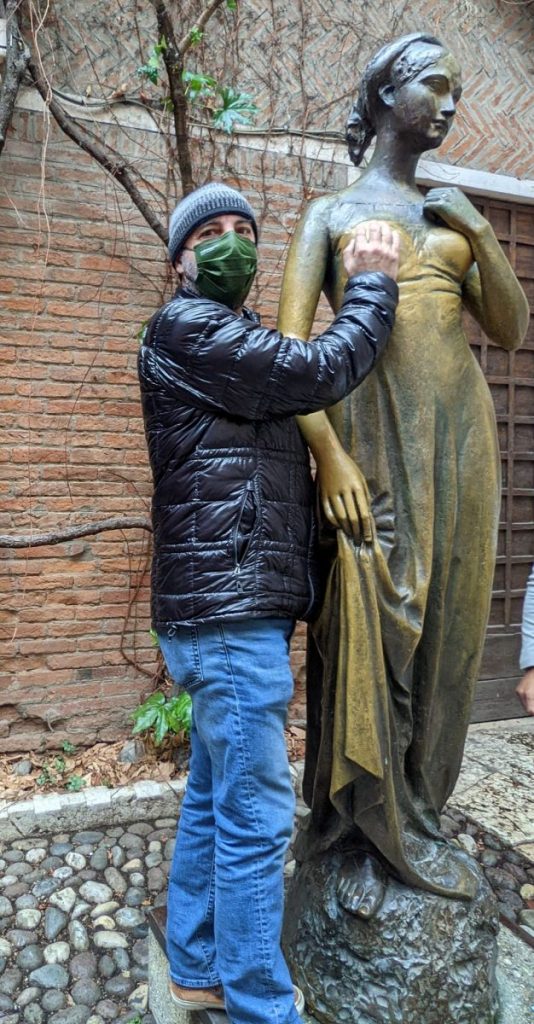
Teatro Romano (Roman Theater) and Archeological Museum
After Juliet’s House, we headed across the river to see the ruins of a Roman amphitheatre (Teatro Romano) and visit the adjoining museum. We crossed the River Adige on the Ponte Pietra, an historic restored Roman arch bridge. The views from the Teatro were stunning, and the sound of the rushing river was relaxing. We explored the ruins then visited the Museo Archeologico (Archeological Museum), which is housed in an old church built at the top of the ruins. The view was even better from the church. Panoramic views of Verona, where you can see every bell tower, clock tower, and spire throughout the city. Here’s some info on the Theater:
The theatre was built in the late 1st century BC. Before its construction, two walls were built alongside the Adige River, between the Ponte di Pietra and the Ponte Postumio, to protect it against floods.
Today only remains of the edifice are visible, recovered starting from around 1830. They include the cavea and the steps, several arcades of the loggias and remains of the stage. Part of the cavea was occupied by the church of S. Siro, built in the 10th century and restored in the 14th century. The church now houses the Archeological Museum.
At the top of the hill there was an ancient temple, built on a series of terraces.
You can still see 25 stone seats from the lower grandstand in the theatre. Besides a small loggia, unfortunately nothing remains of the multi-storey, figure-decorated front wall and the upper stand. Today the Teatro Romano is once again used for events. The Verona Summer Theatre Festival attracts thousands of visitors to the theatre performances and concerts.
The Verona Arena (Colosseum)
The Verona Arena, often referred to as the “Verona Colosseum,” is a well-preserved Roman amphitheater, dating back to the 1st century AD. It was constructed around 30 AD, making it older than the Colosseum in Rome, which was completed in 80 AD. It is still in use today and is internationally famous for the large-scale opera performances given there. It is one of the best preserved ancient structures of its kind. In ancient times, the arena’s capacity was nearly 30,000 people. The stage for concerts and opera performances decreases the available places to a maximum of 15,000. It will be used as the closing ceremony venue for the 2026 Winter Olympics and two weeks later will be used for the Opening Ceremony for the 2026 Winter Paralympics in Milan and Cortina d’Ampezzo.
The Comet (Christmas Decoration)
The Verona Arena’s iconic Christmas decoration, a large steel comet star, has been a fixture in Piazza Bra since 1984, designed by architect Rinaldo Olivieri. The structure is 70 meters high and 82 meters long, with its tail traditionally resting inside the Arena, as you can see in the photo below. However, during the dismantling process in January 2023, part of the star’s base fell, causing irreparable damage to several steps in the arena’s cavea. As a result, the full structure was not reinstalled for the 2023 and 2024 Christmas seasons. Starting with Christmas 2024, only the star’s “head” is installed, with its traditional tail replaced by light beams to maintain the festive atmosphere.
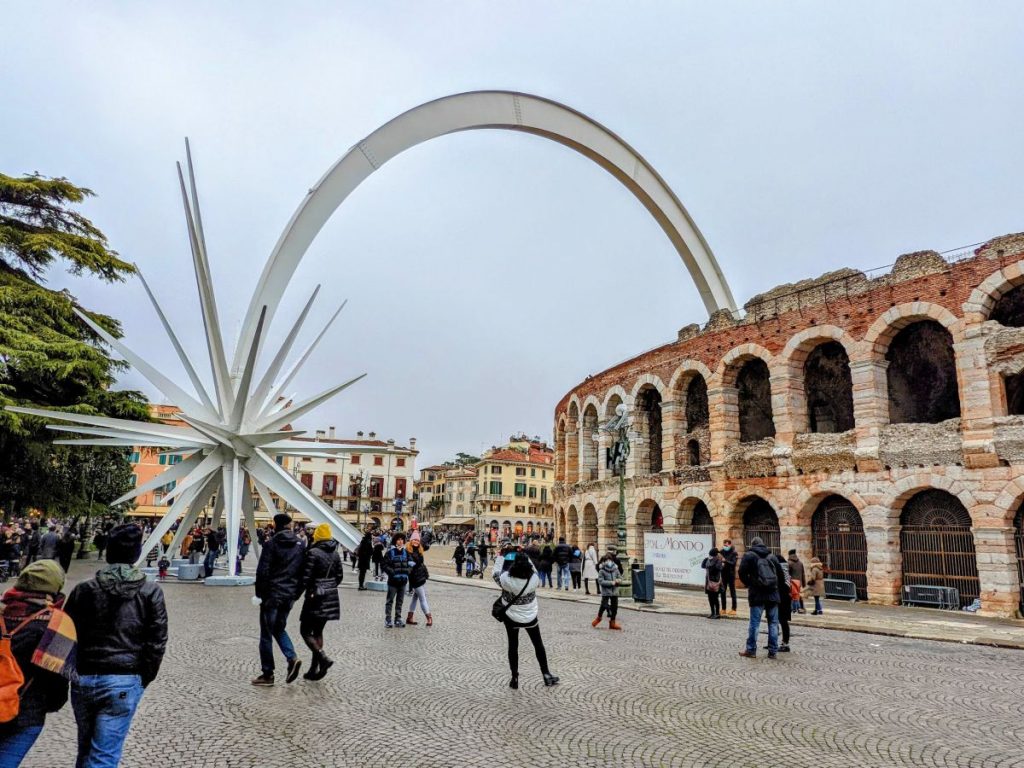
Castelvecchio (Old Castle)
We had some time to kill before our train, so we visited Castelvecchio. (Pro tip: if you want to return earlier than the last train, don’t get a round-trip ticket. Instead, buy individual tickets so you can leave whenever you’re ready.)
Castlevecchio is the most important military construction of the Scaliger dynasty that ruled the city in the Middle Ages.
The castle is powerful and compact in its size with very little decoration – one square compound built in red bricks, one of the most prominent examples of Gothic architecture of the age, with imposing M-shaped merlons running along the castle and bridge walls. It has seven towers, a superelevated keep (maschio) with four main buildings inside. The castle is surrounded by a ditch, now dry, which was once filled with waters from the nearby Adige.
It was free to enter the castle grounds, but the museum has an entry fee. It was getting ready to close when we were there, so we didn’t go inside the museum.
Miscellaneous Verona
Here are some photos taken throughout the day, including a view of Castel San Pietro, The Gates of Bra, Torre dei Lamberti, Piazza delle Erbe, and some stunning views of Verona, and more. When we returned to Bologna, the Asinelli tower was again lit up, but this time red and blue!
Finally, here’s a short video taken from the Teatro Romano, with the sound of the river providing the soundtrack:


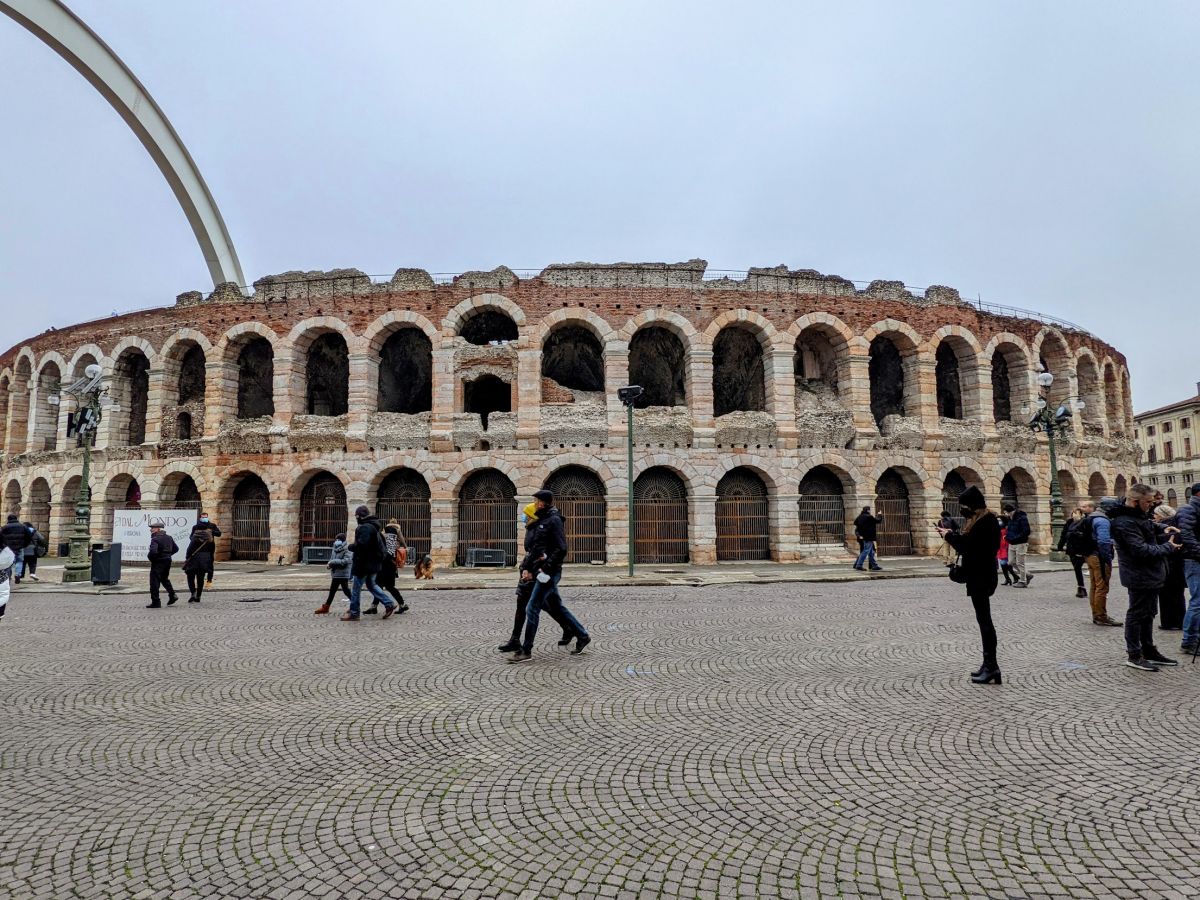
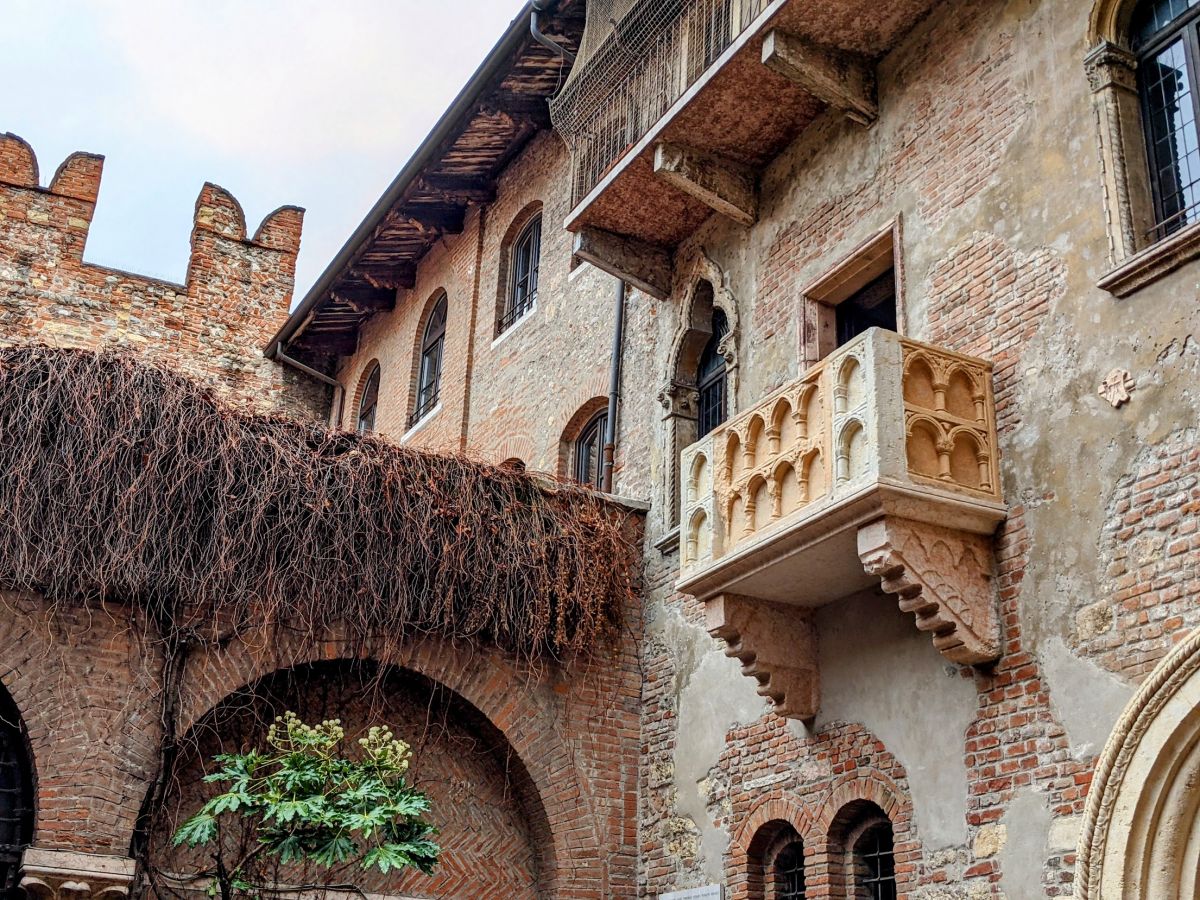
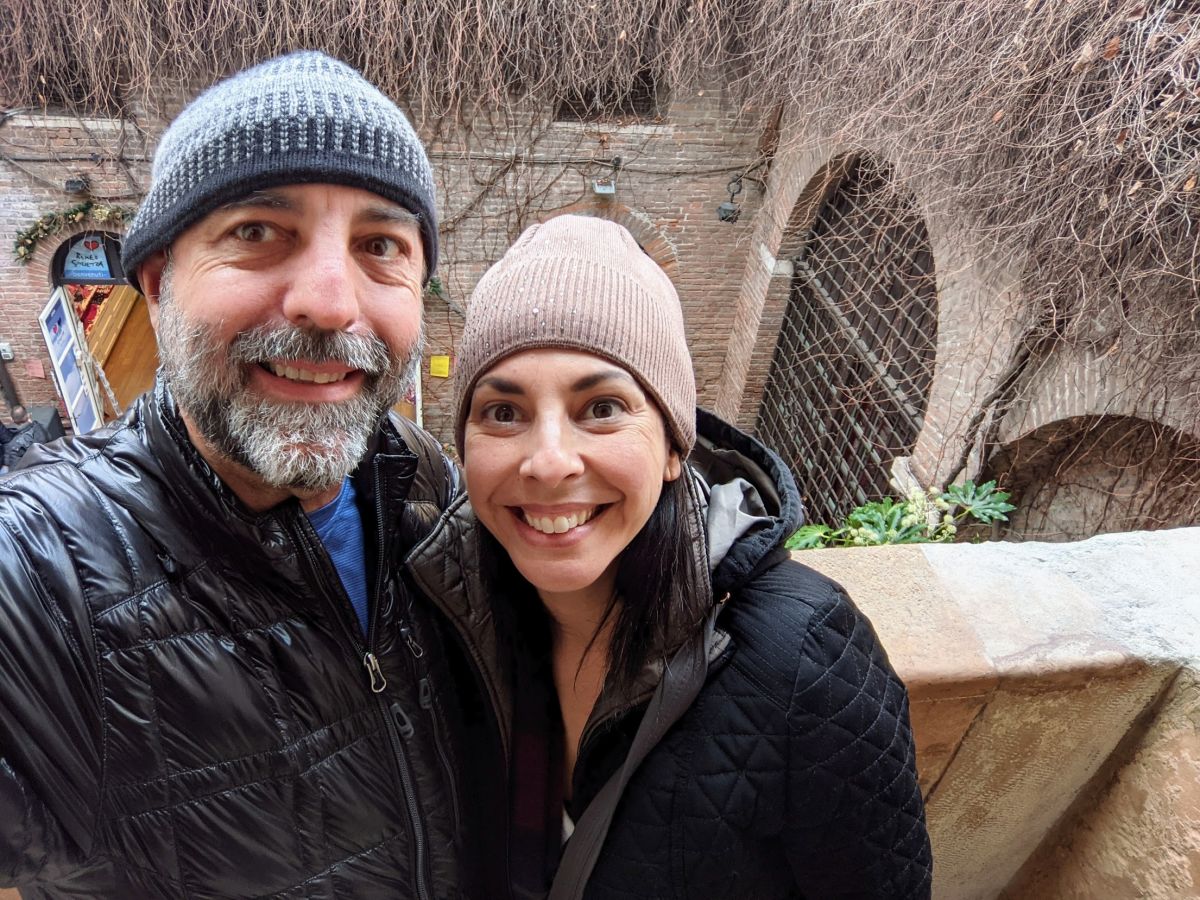
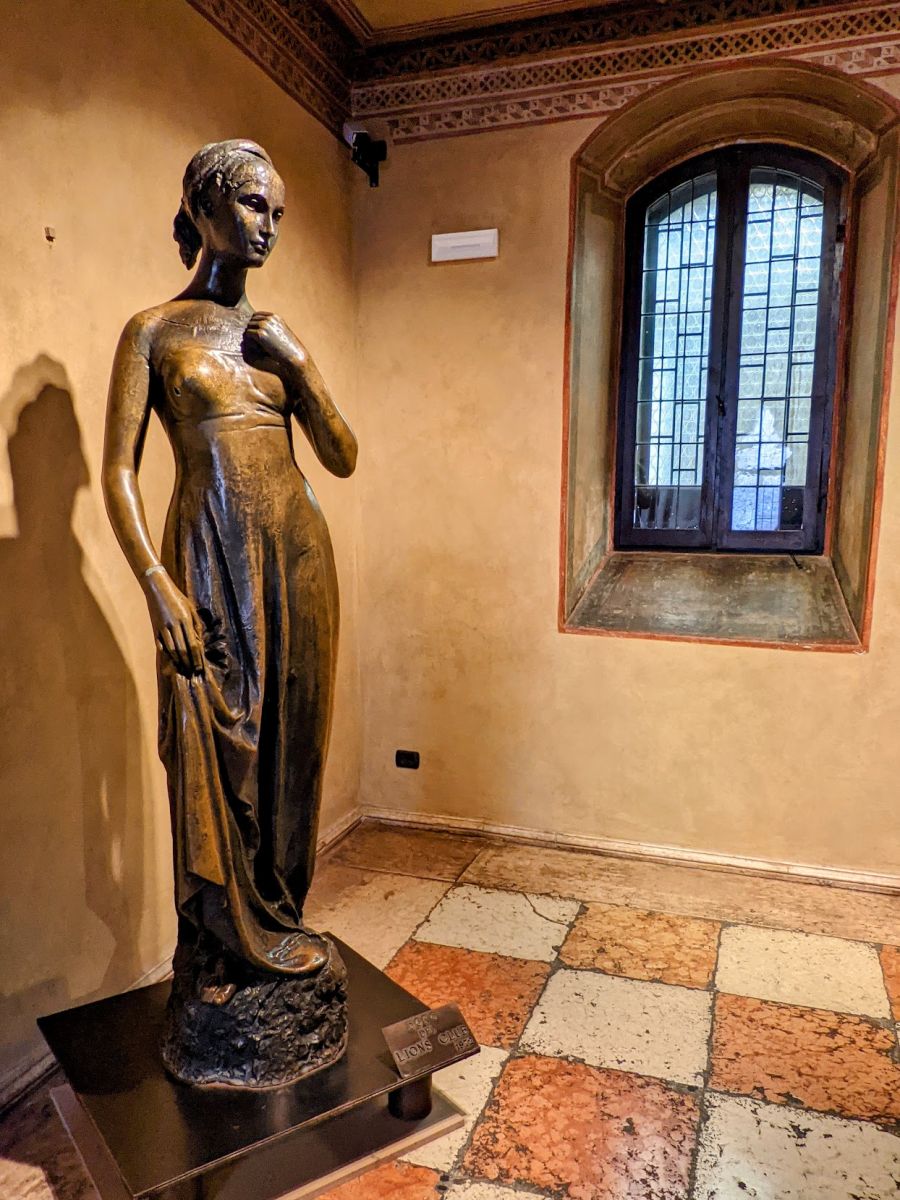
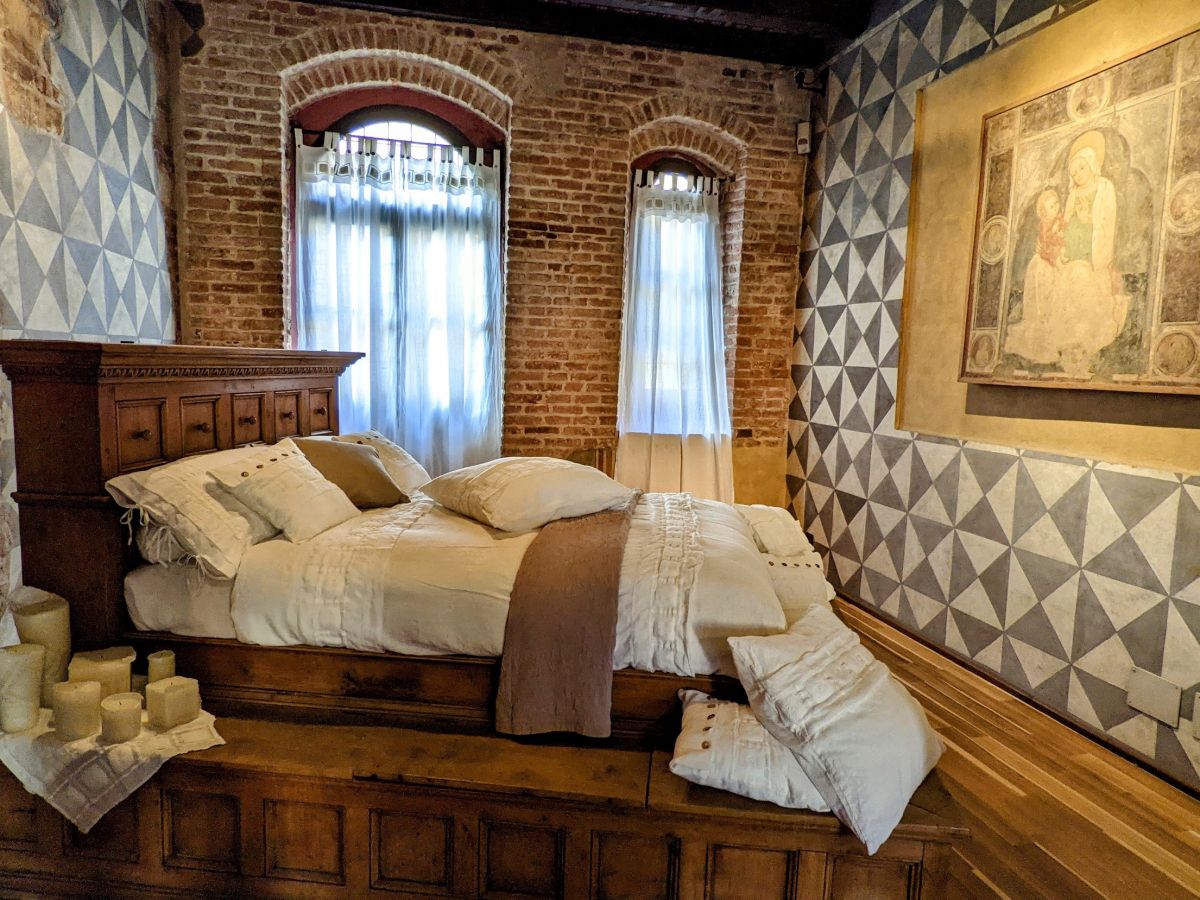
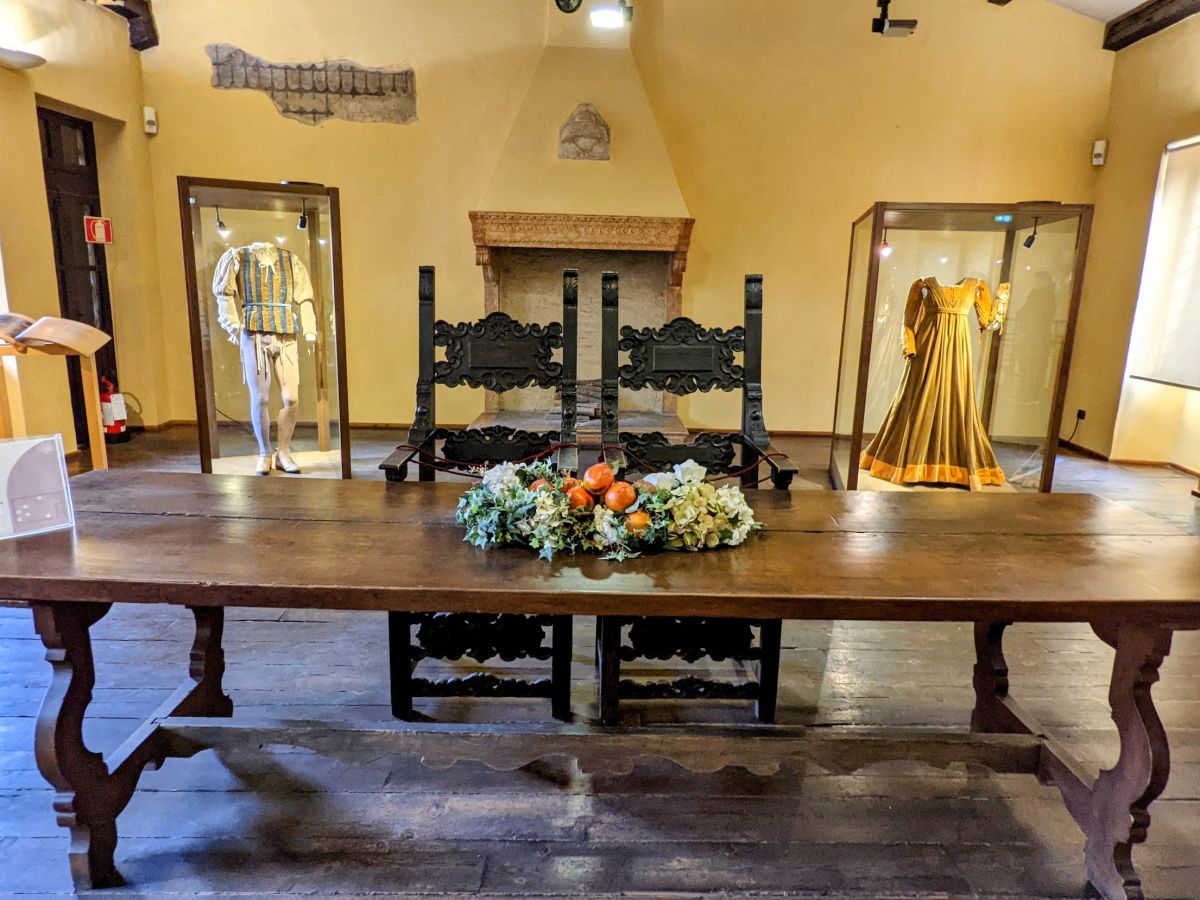
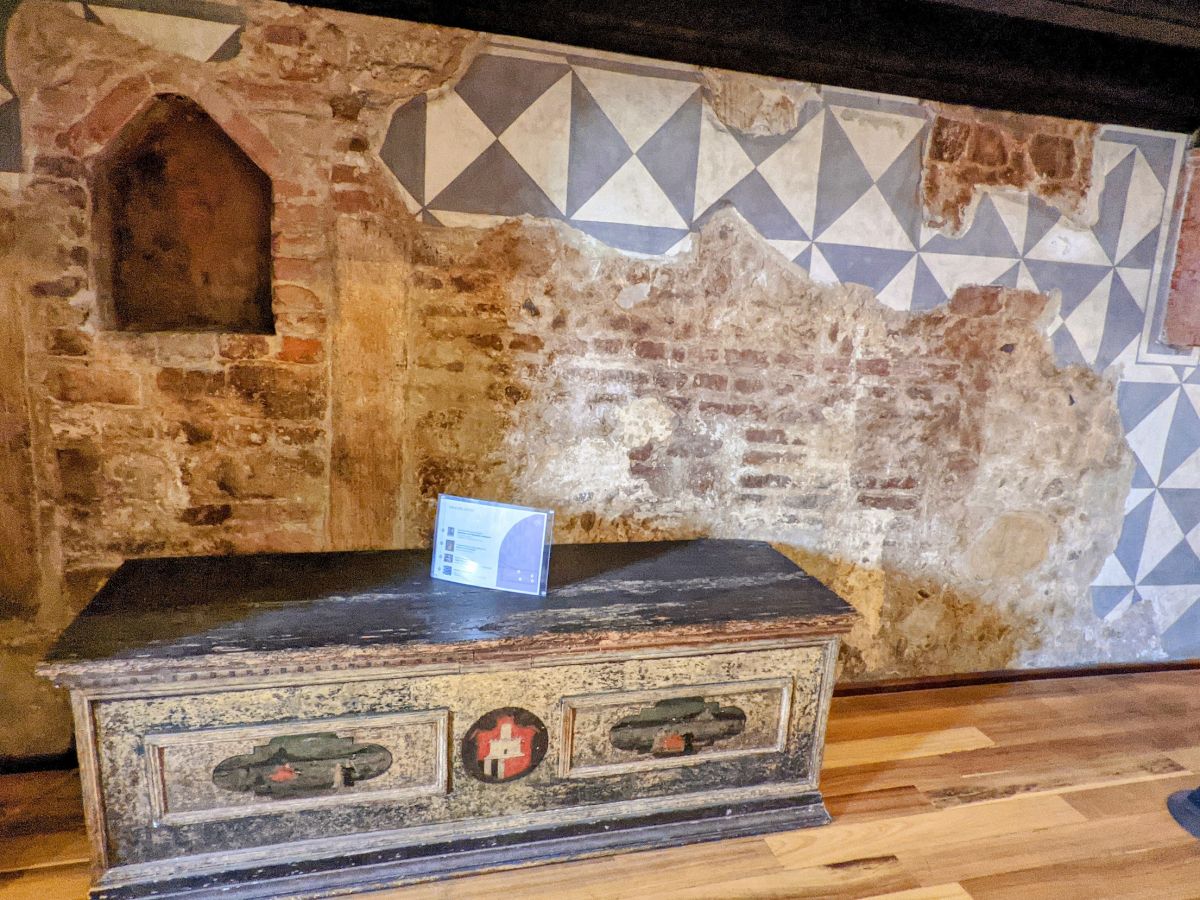
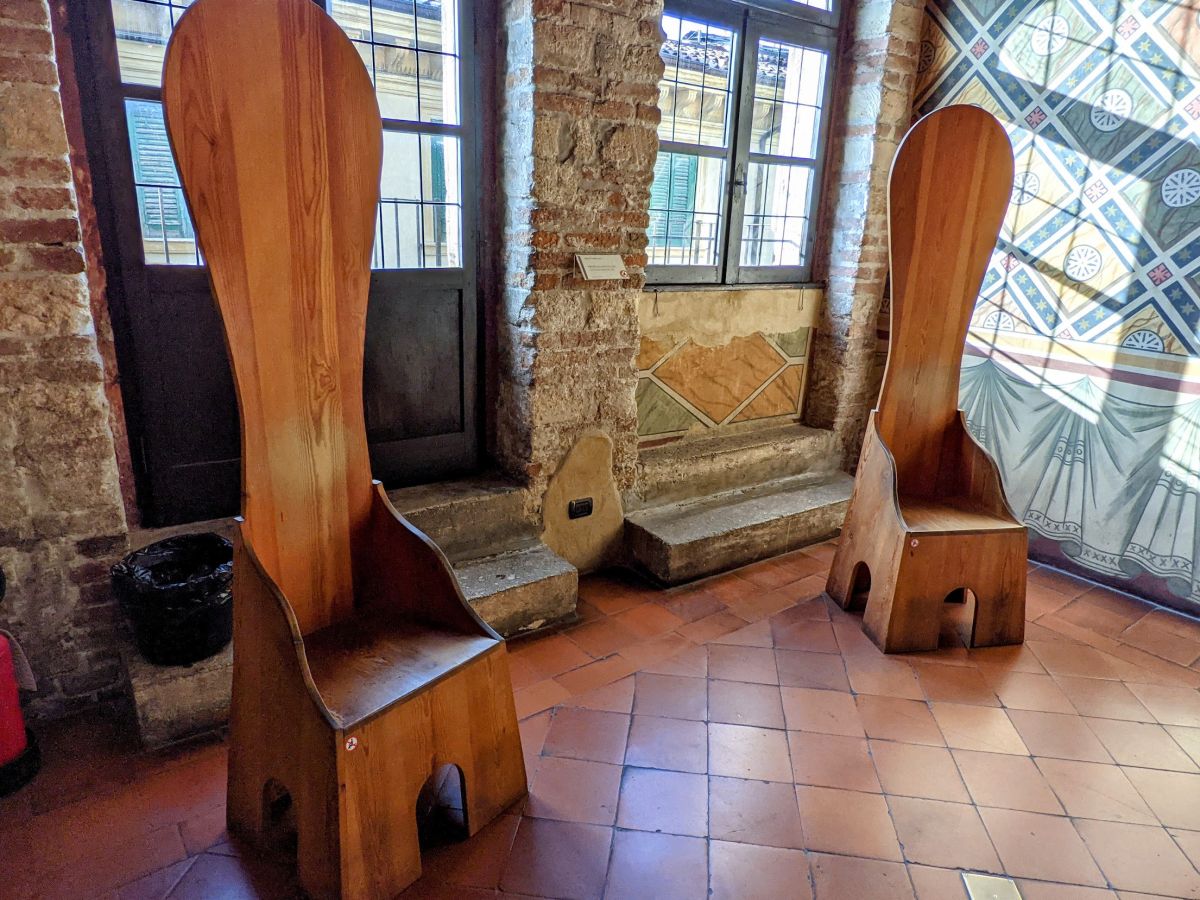
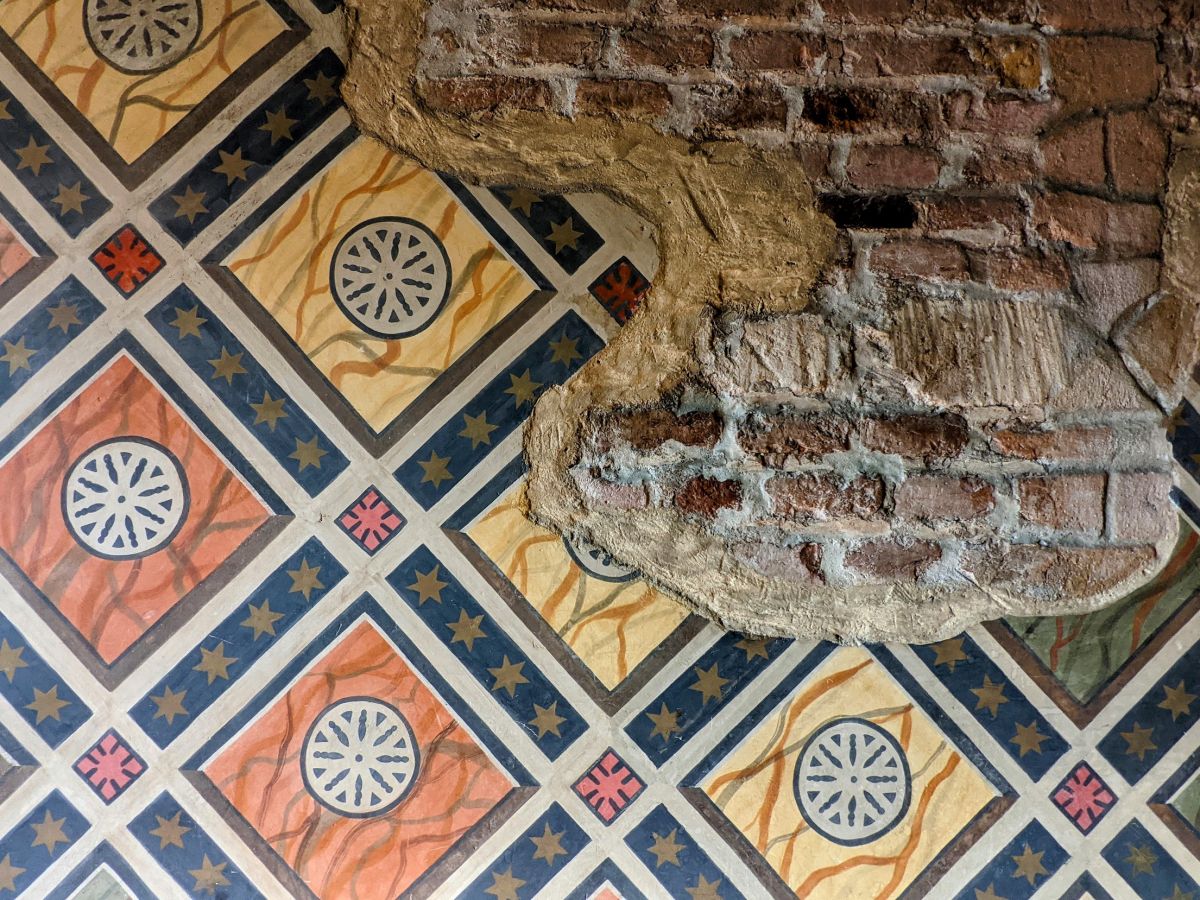
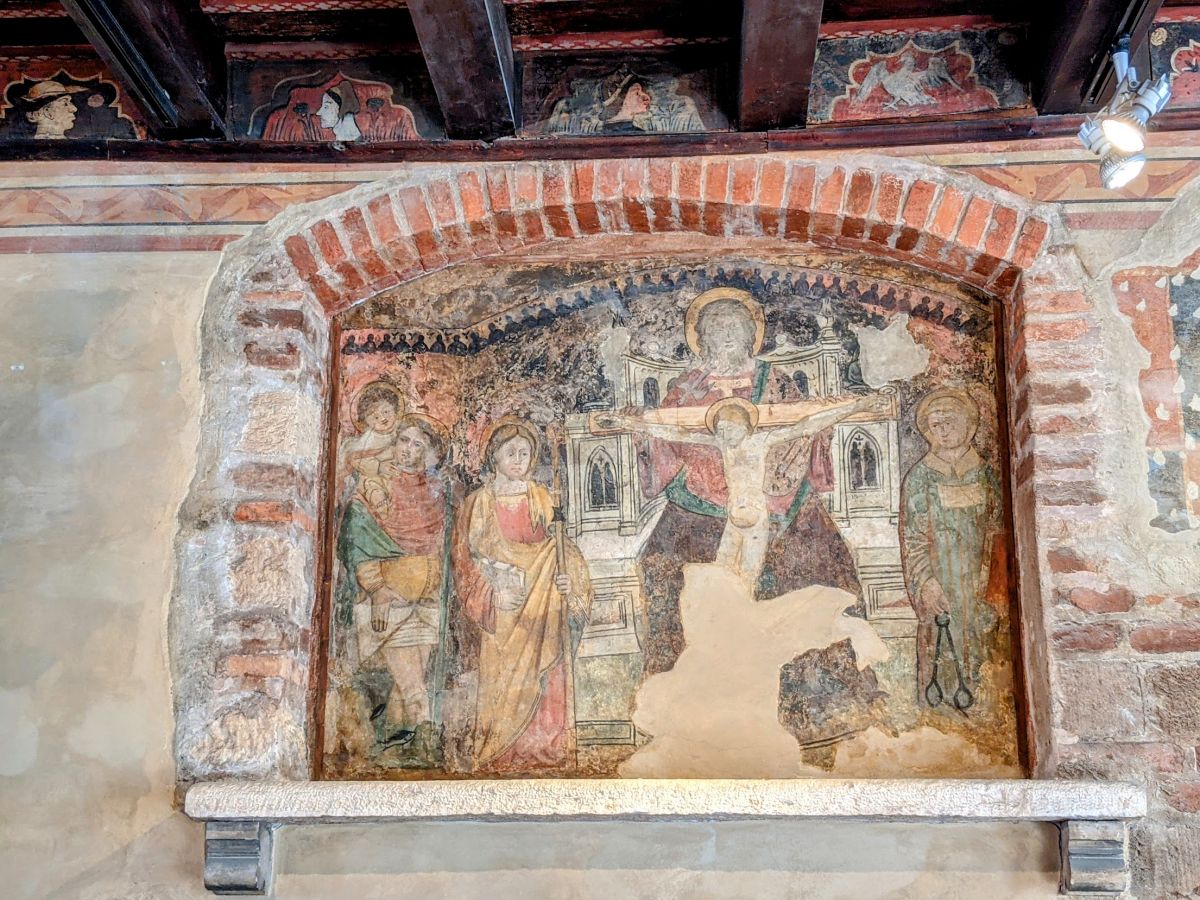
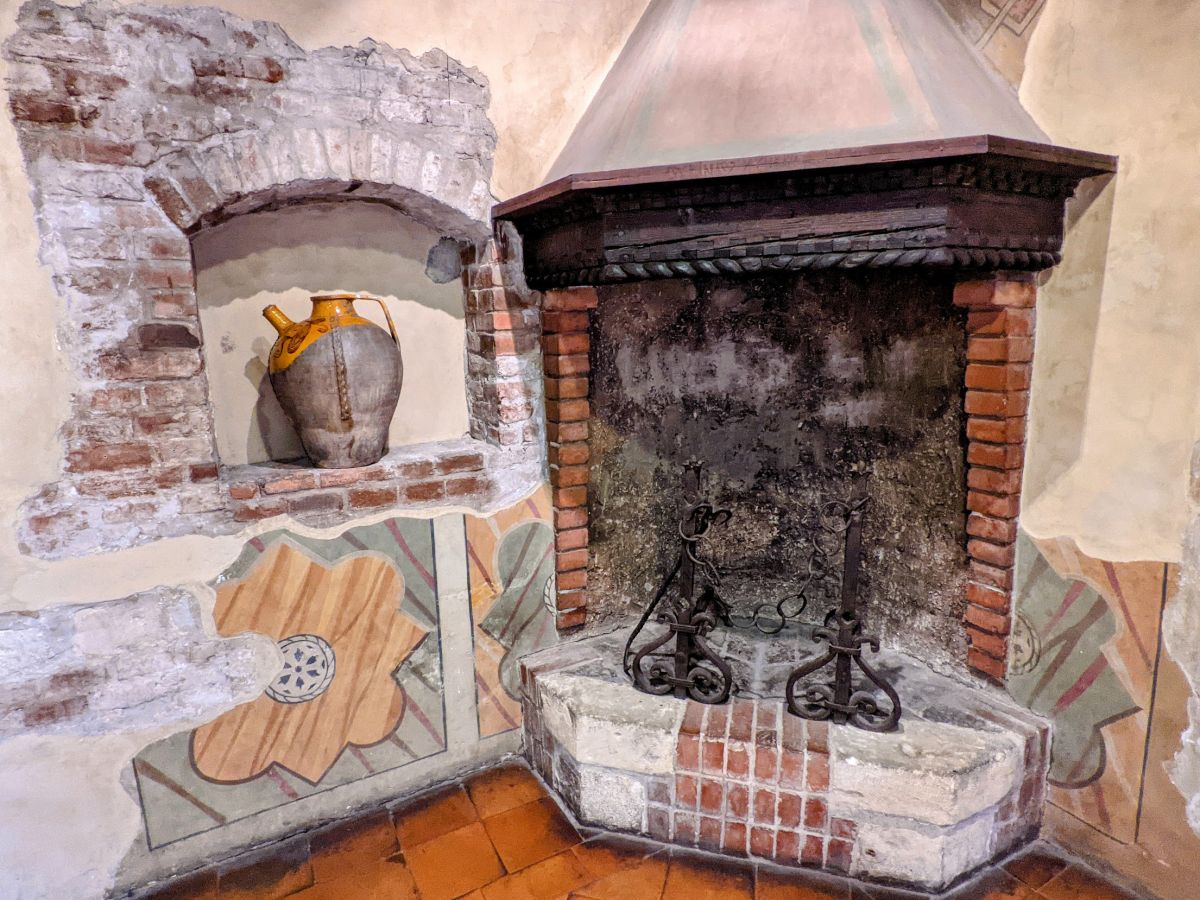
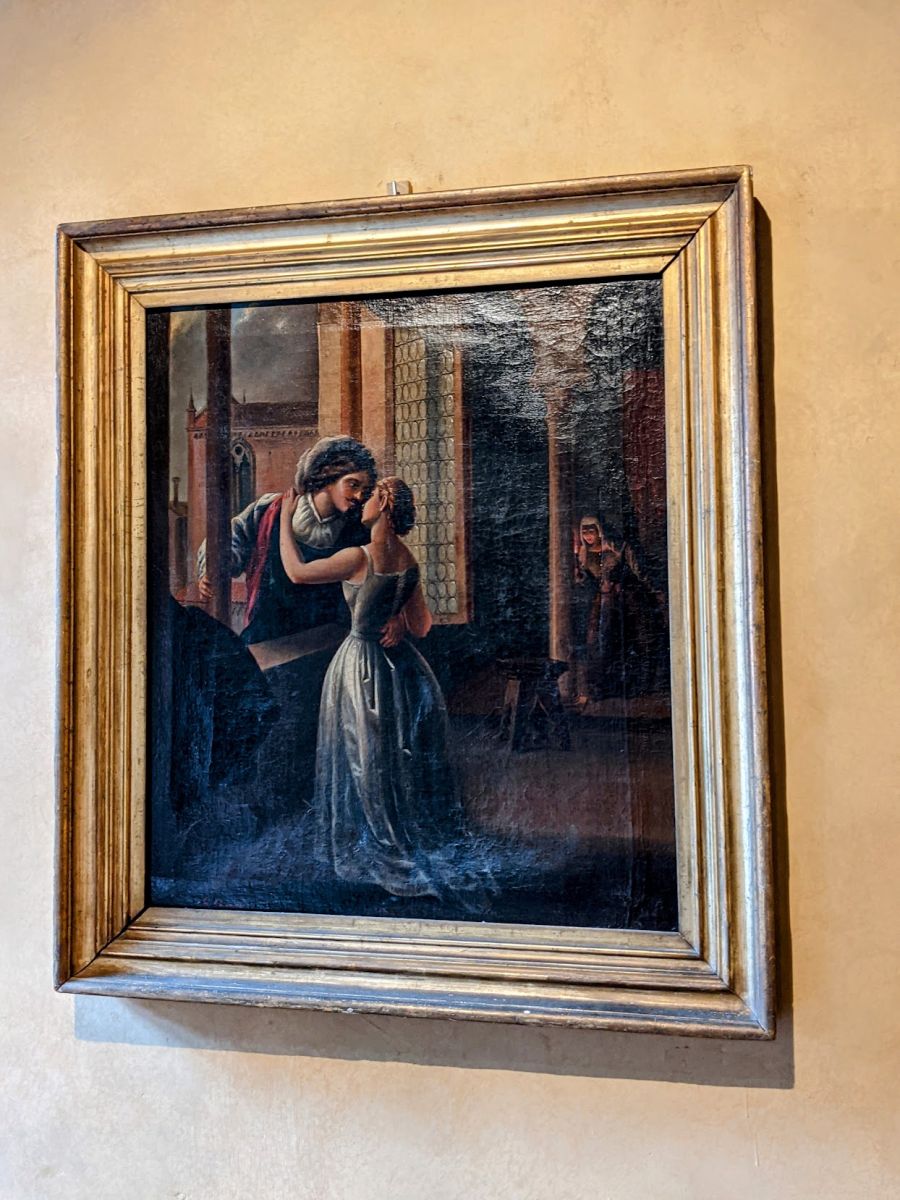
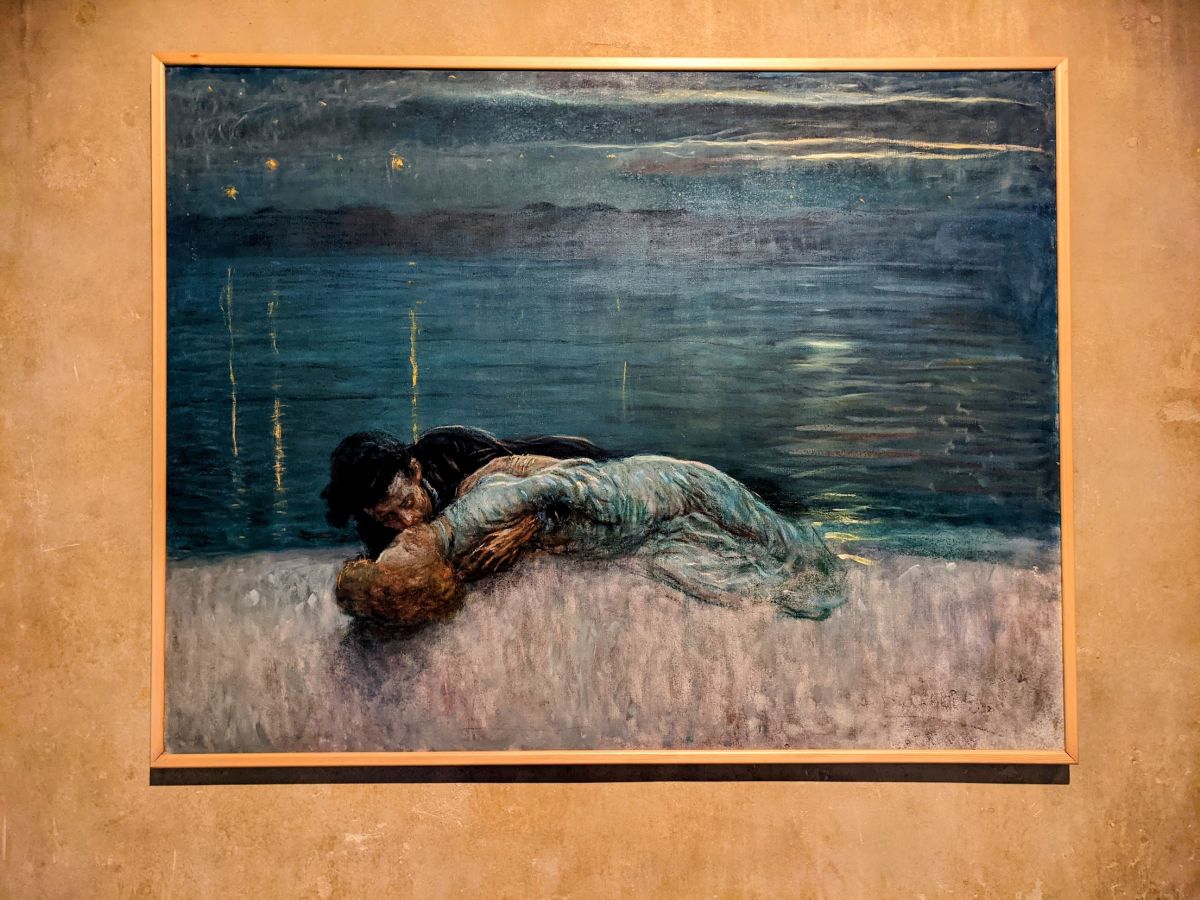
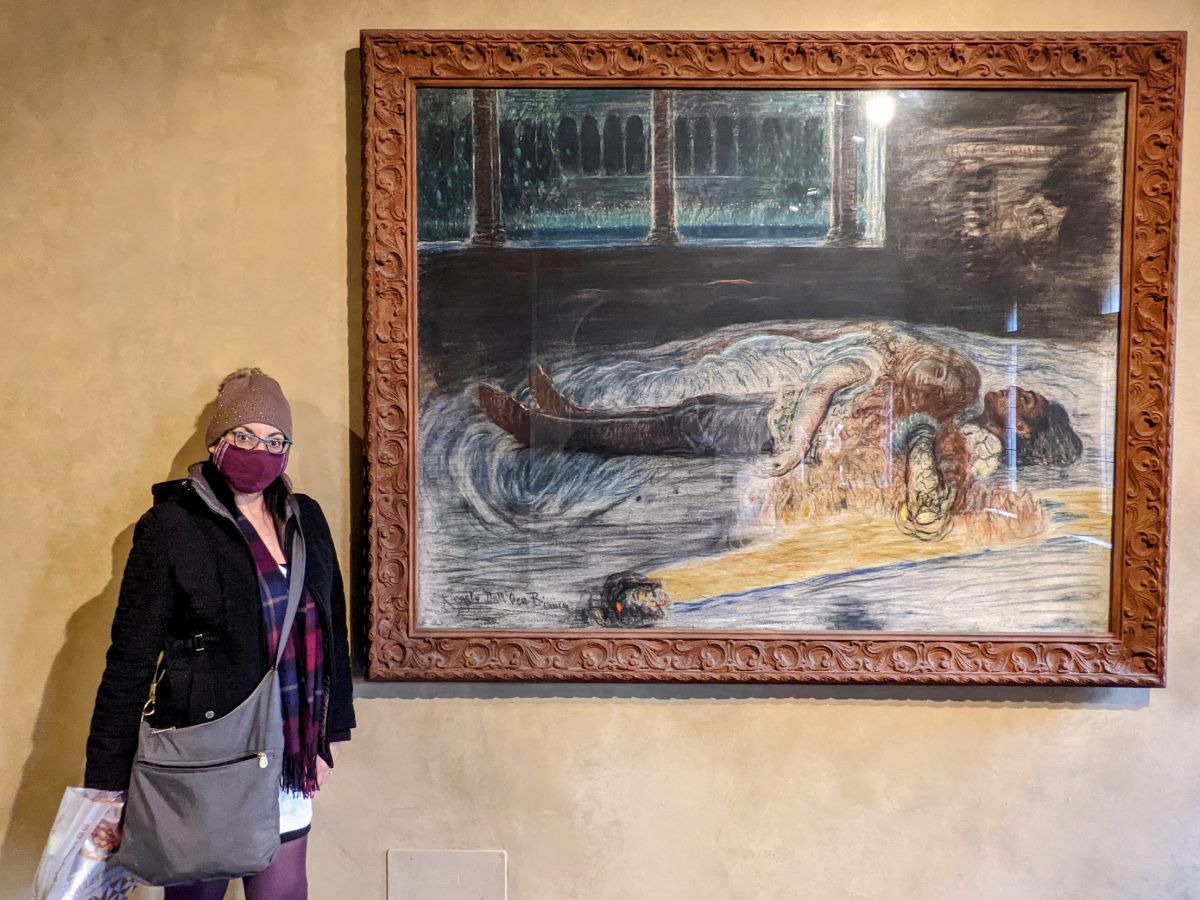
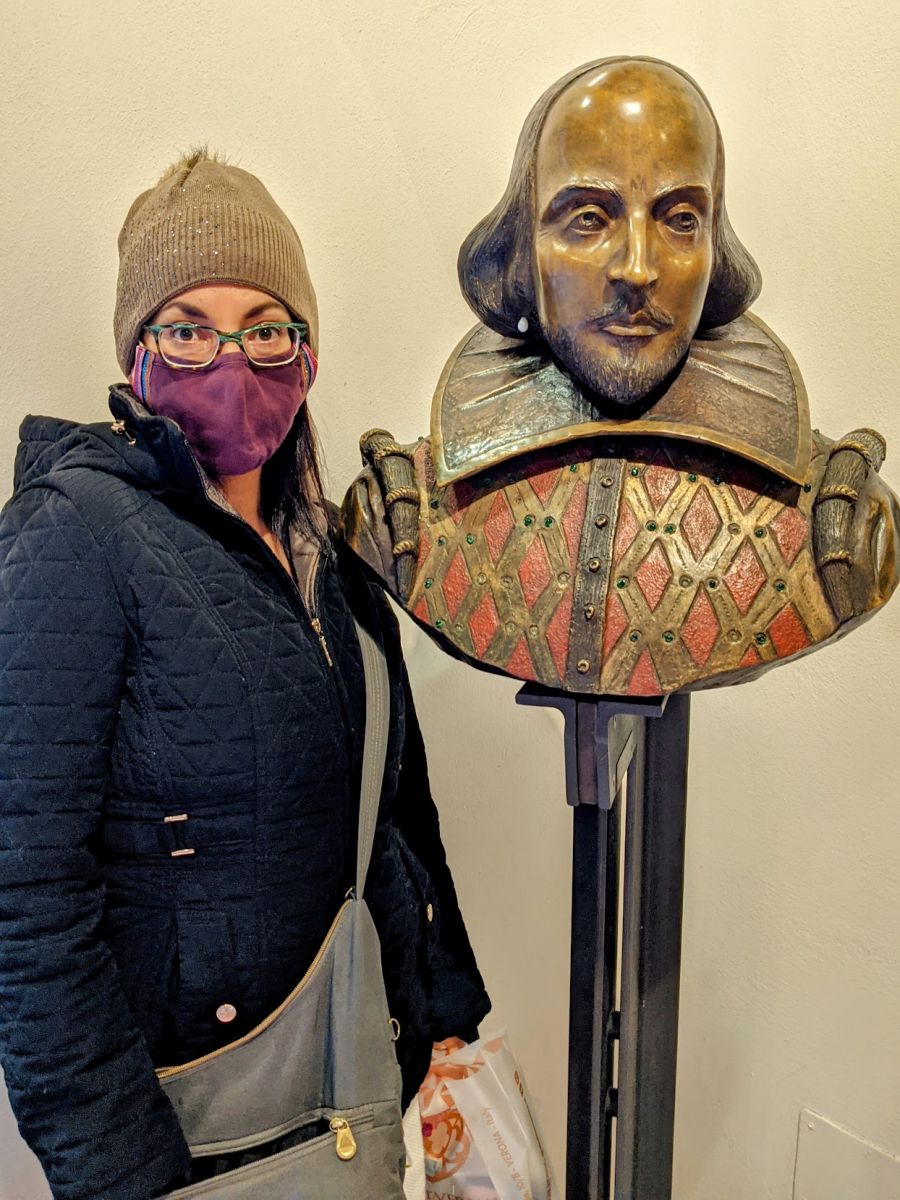
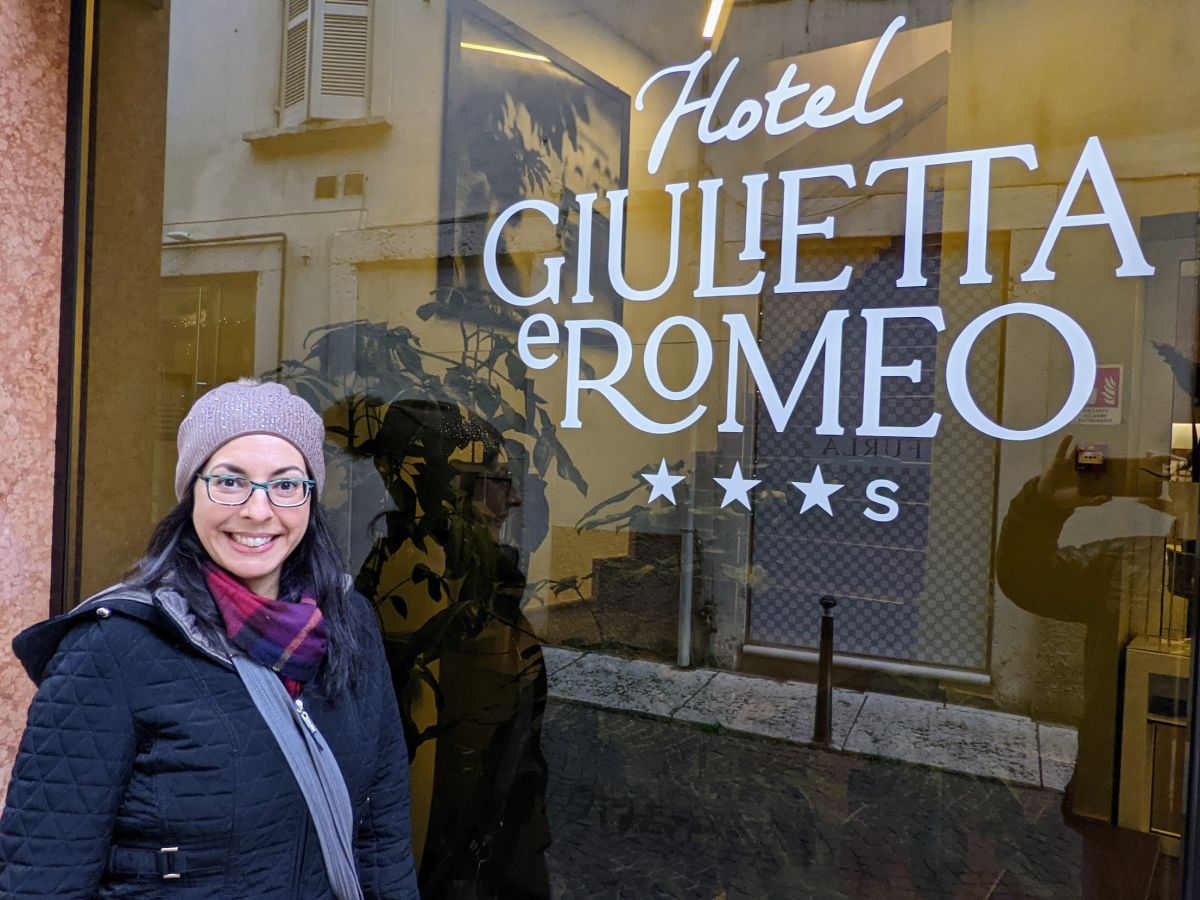
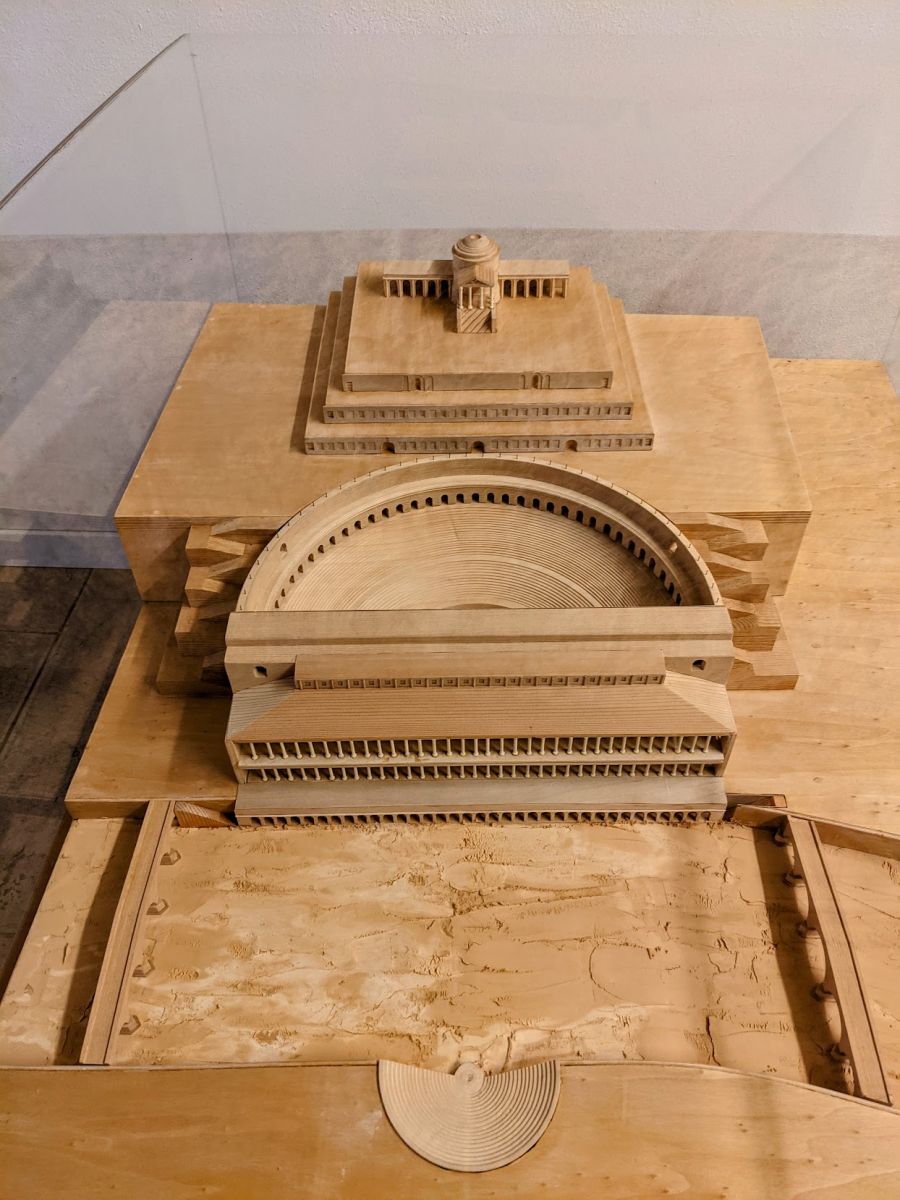
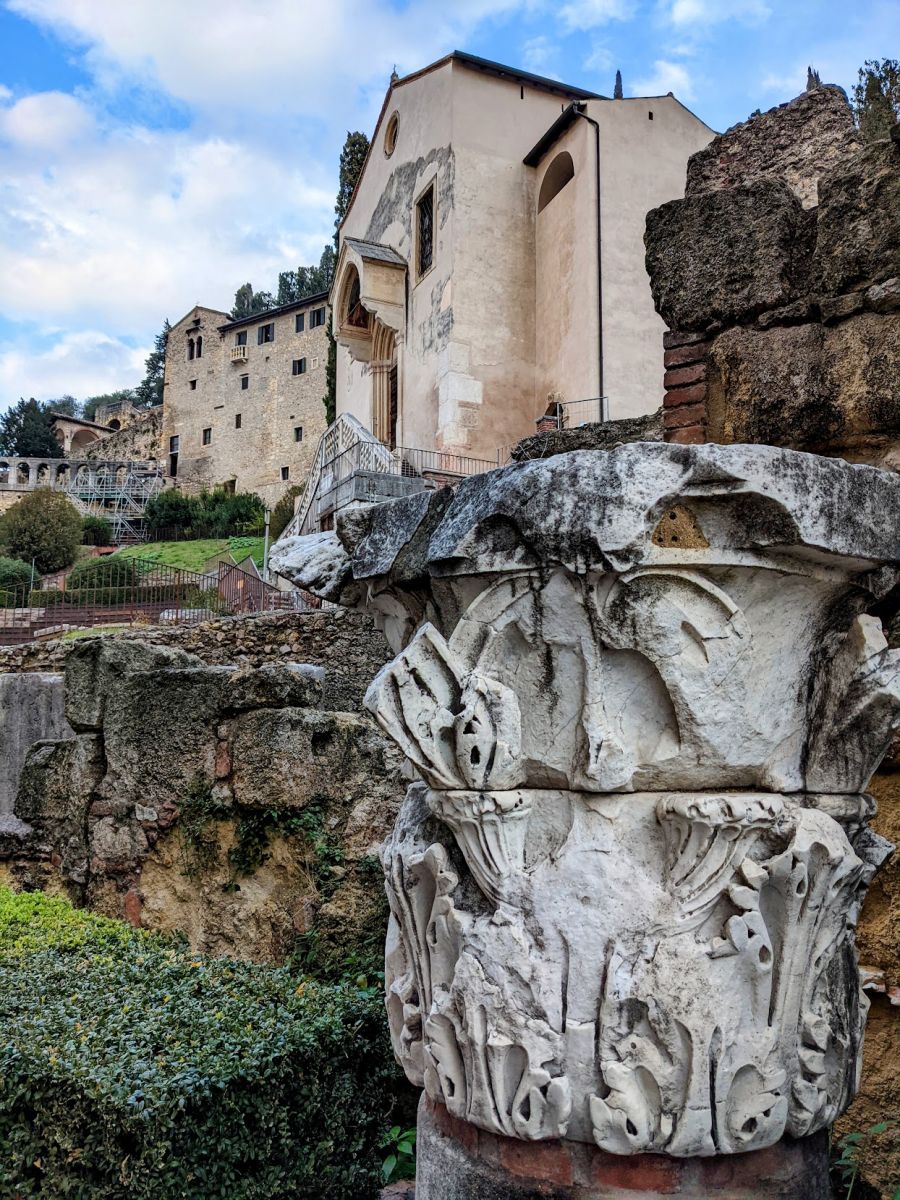
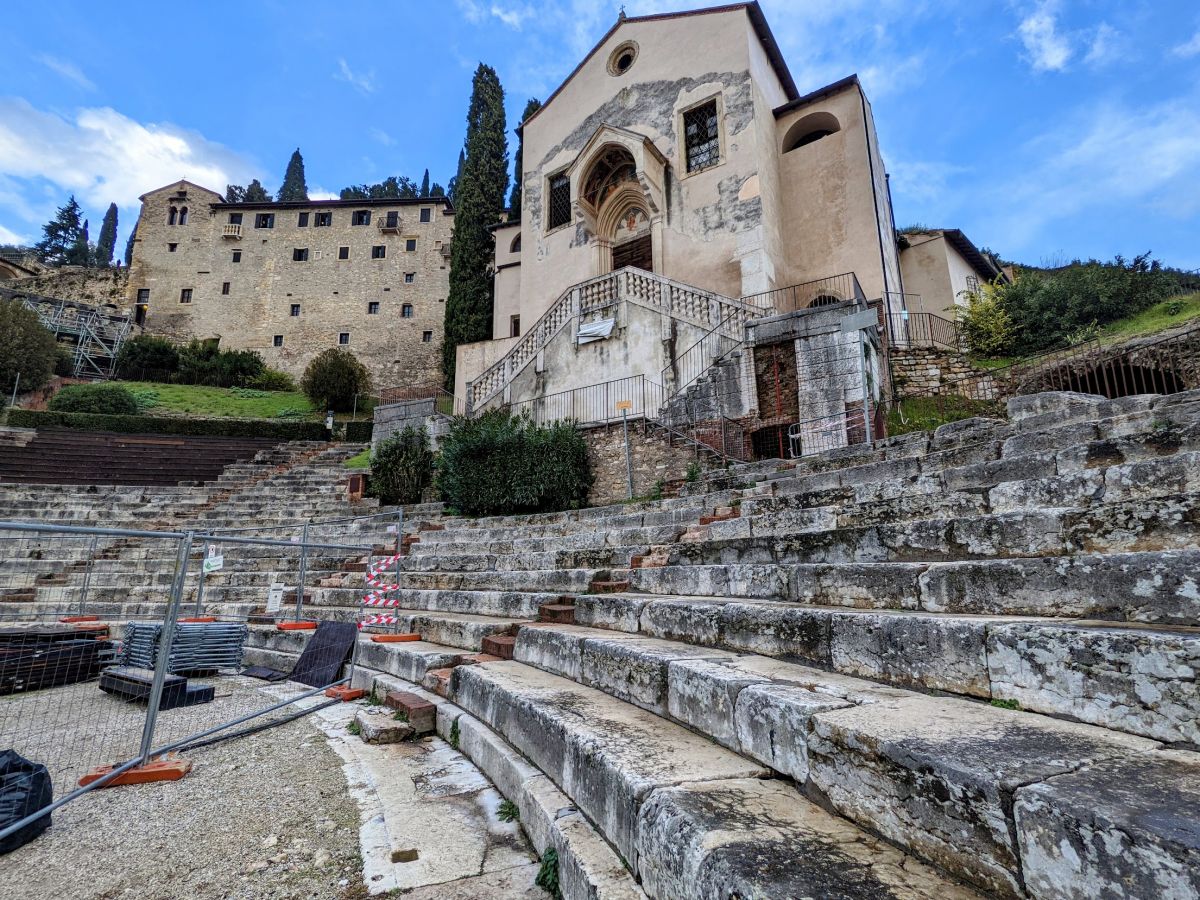
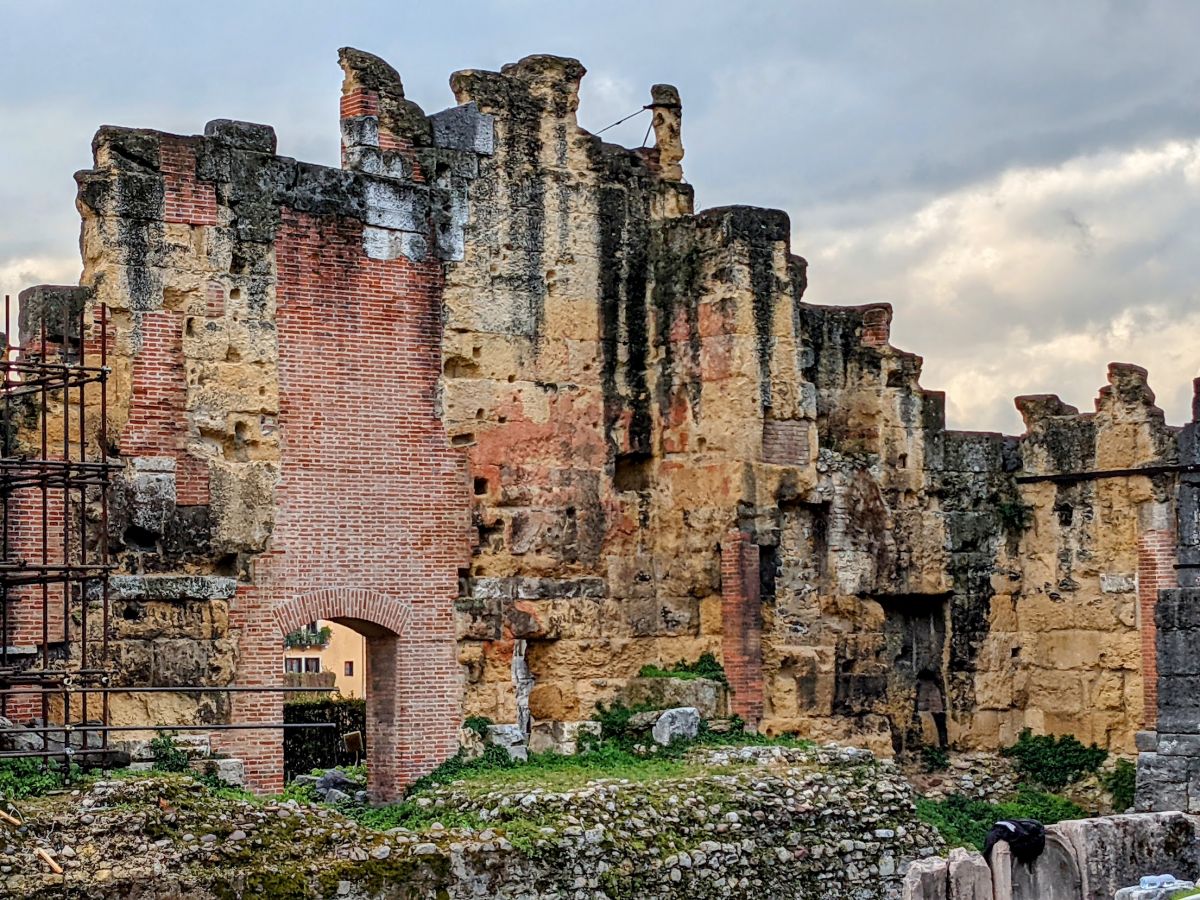
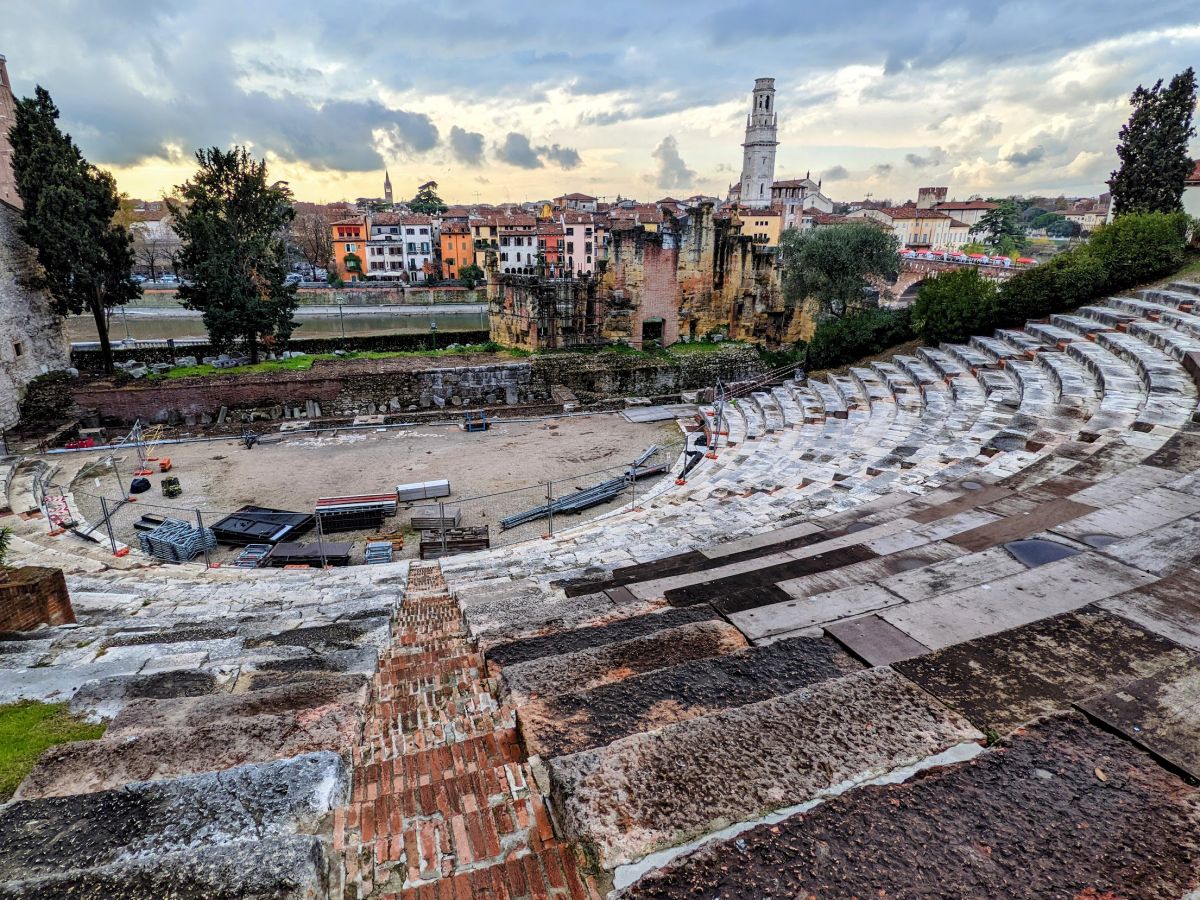
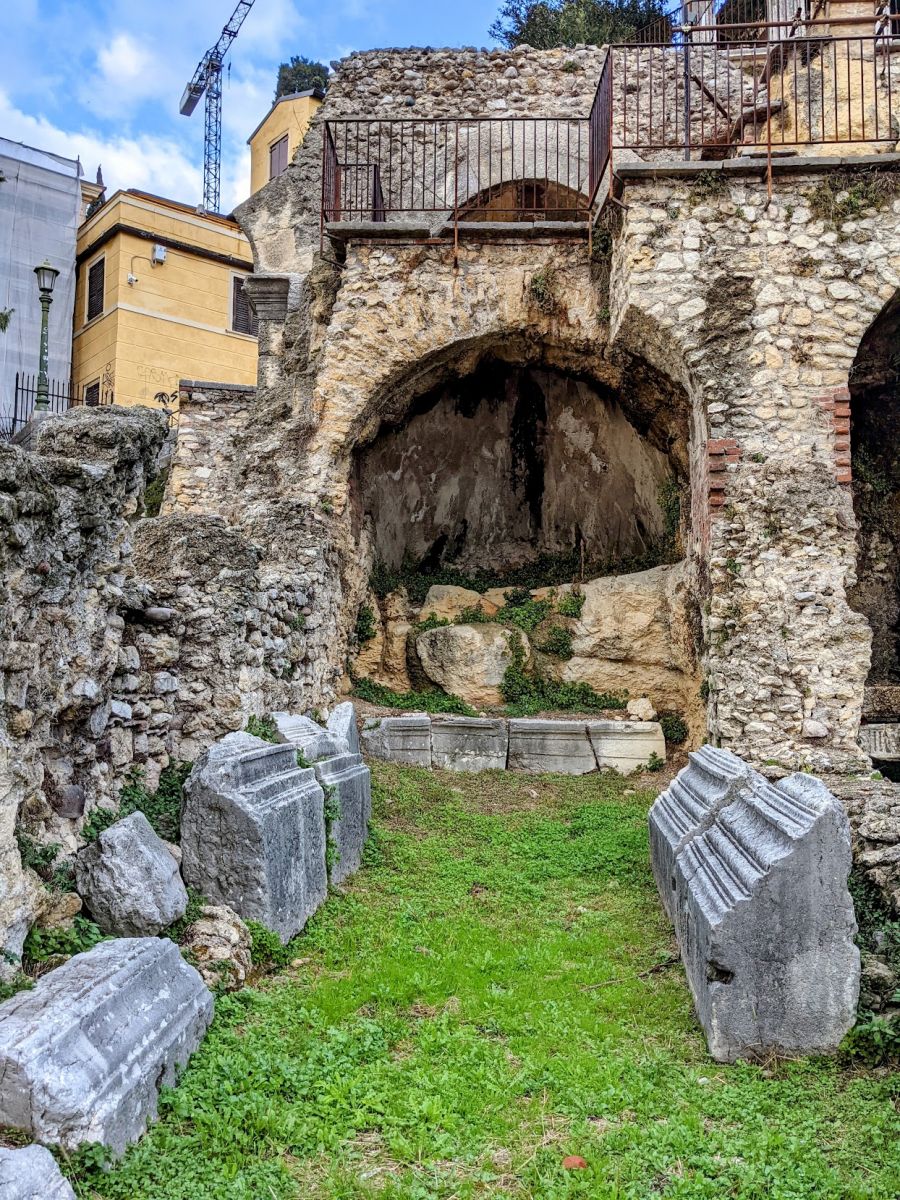
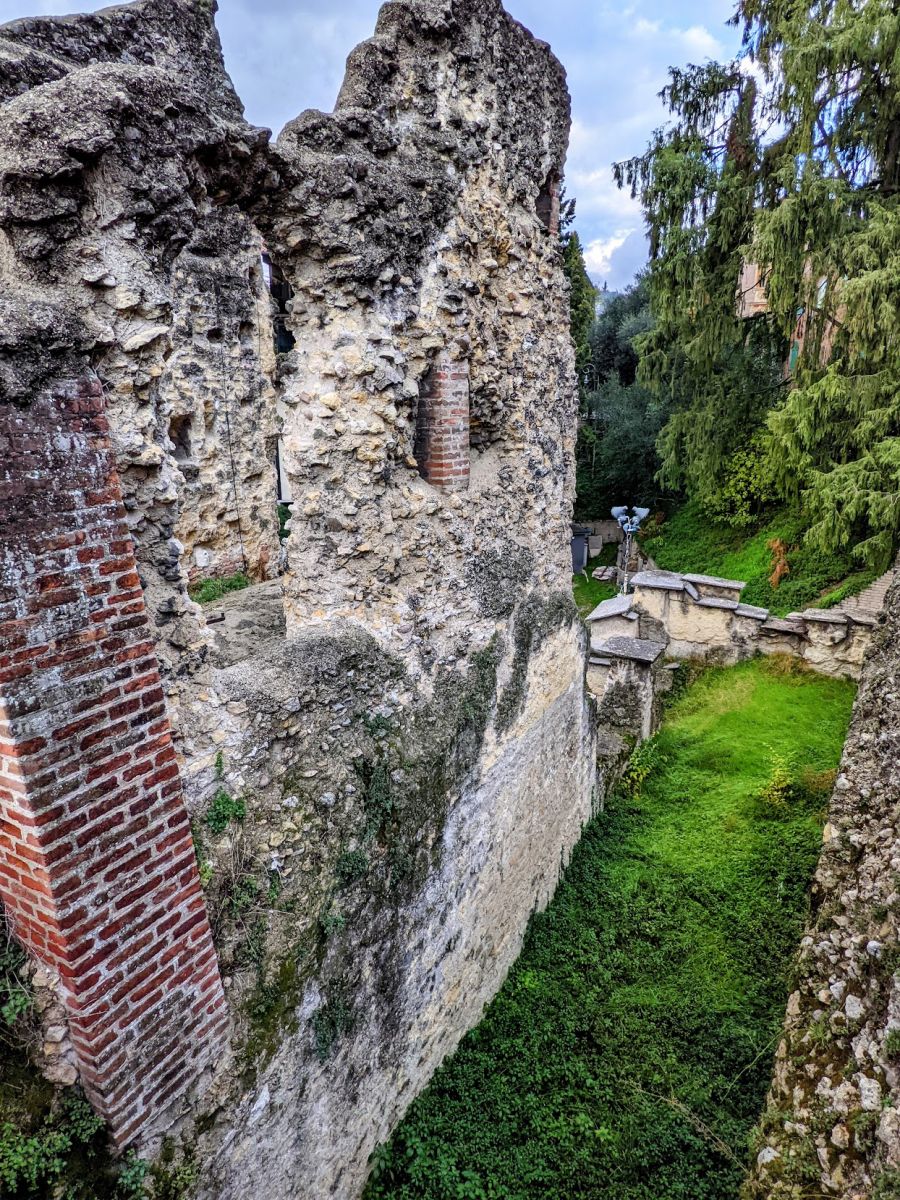
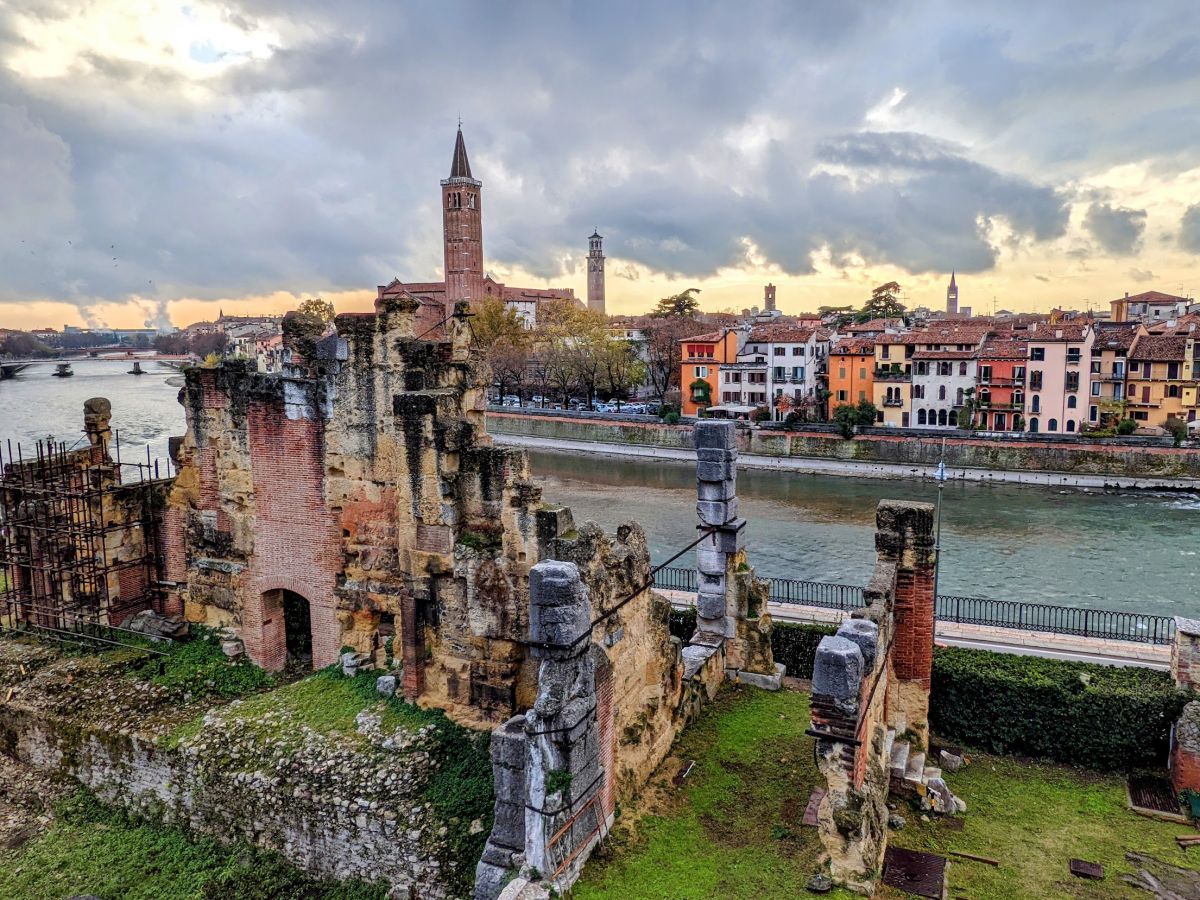
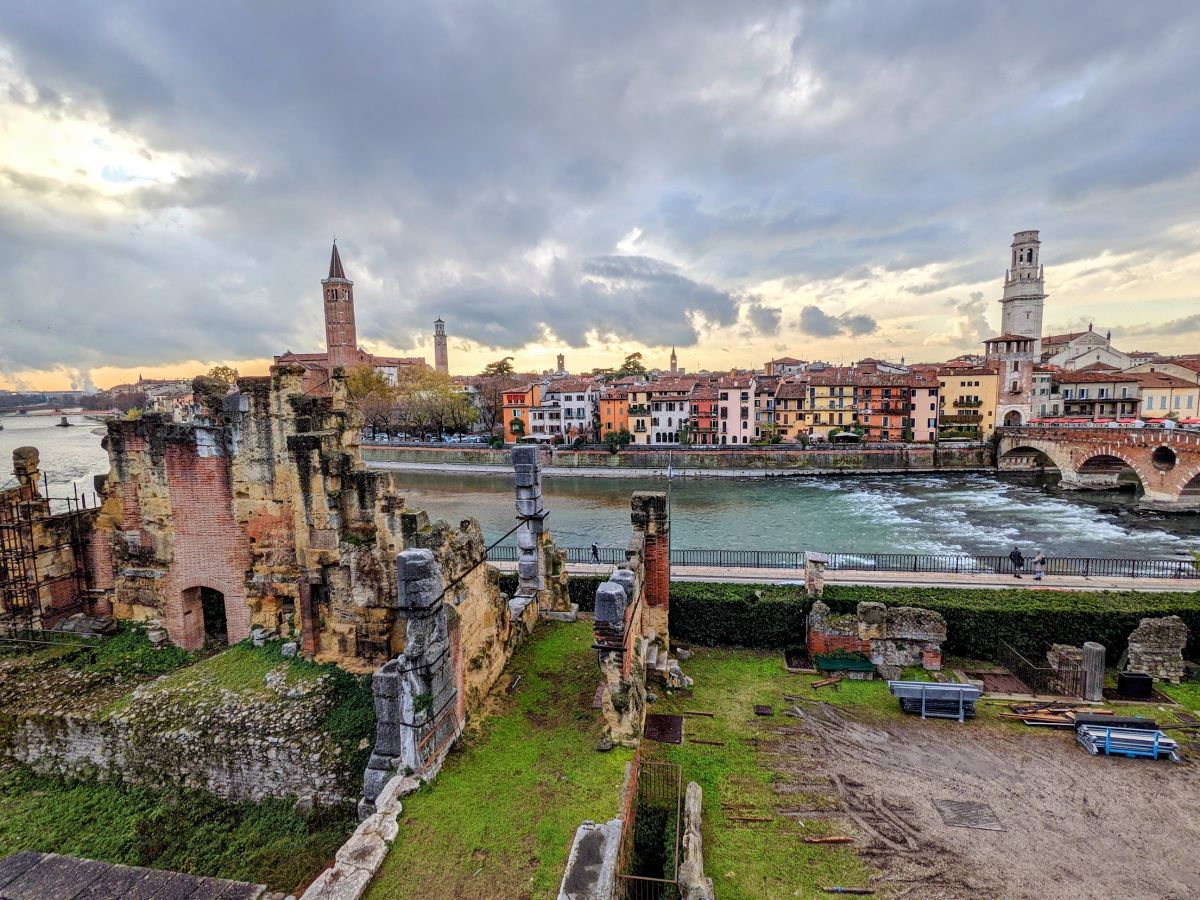
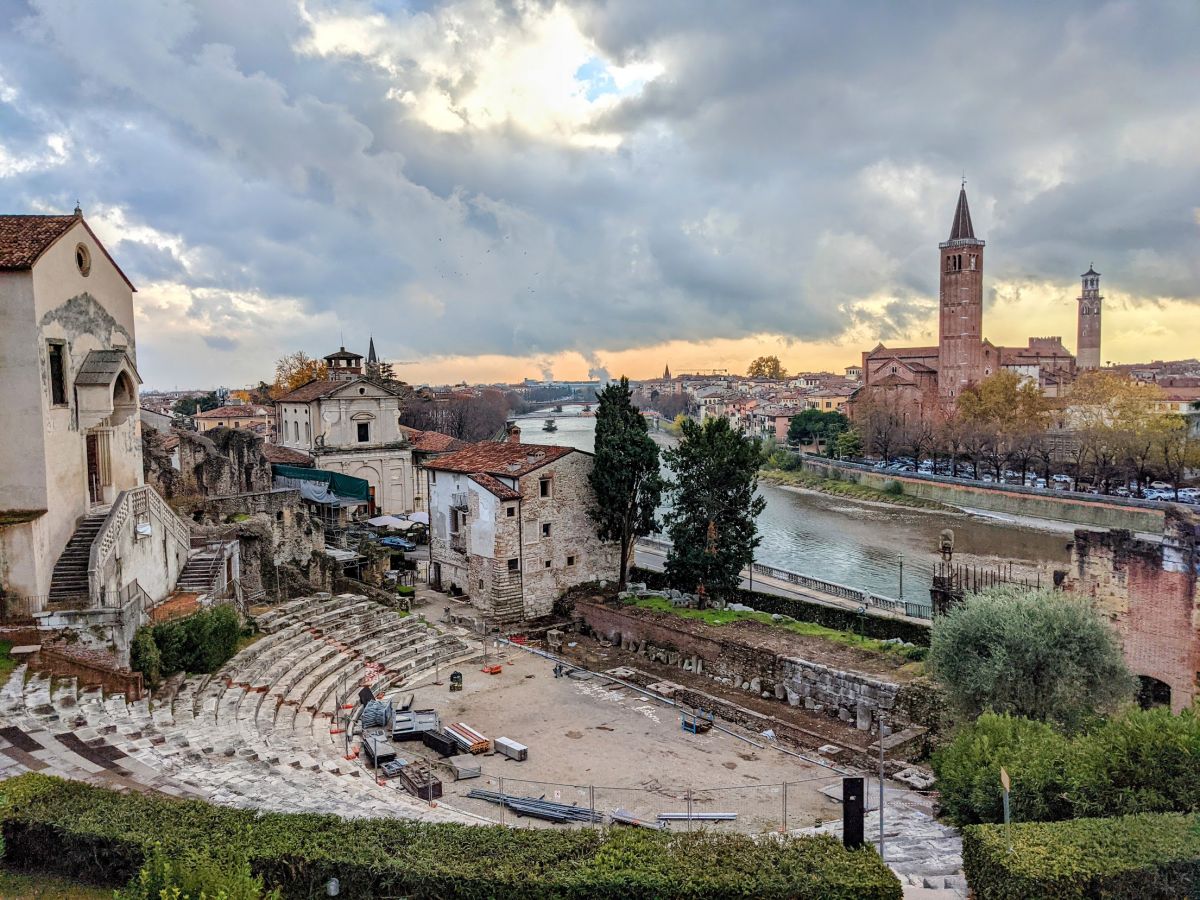
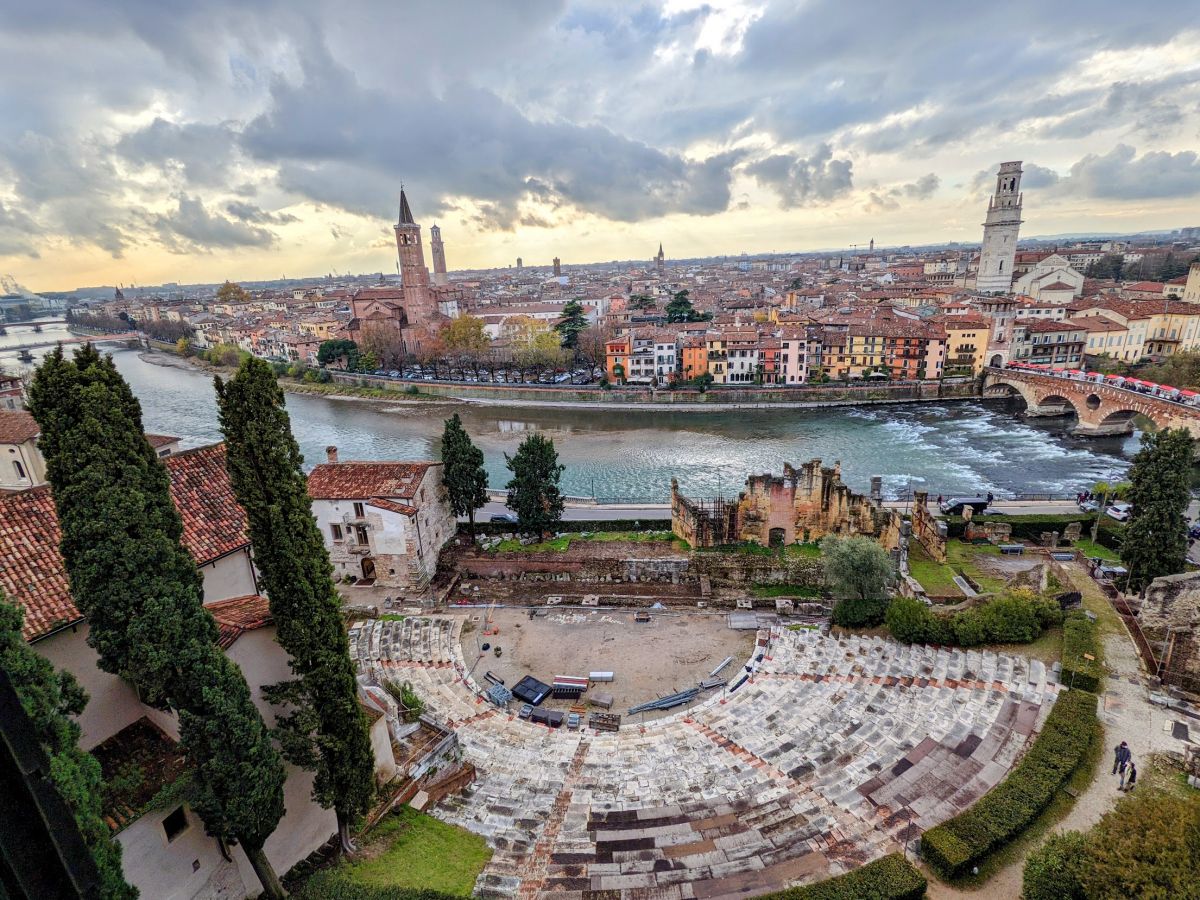
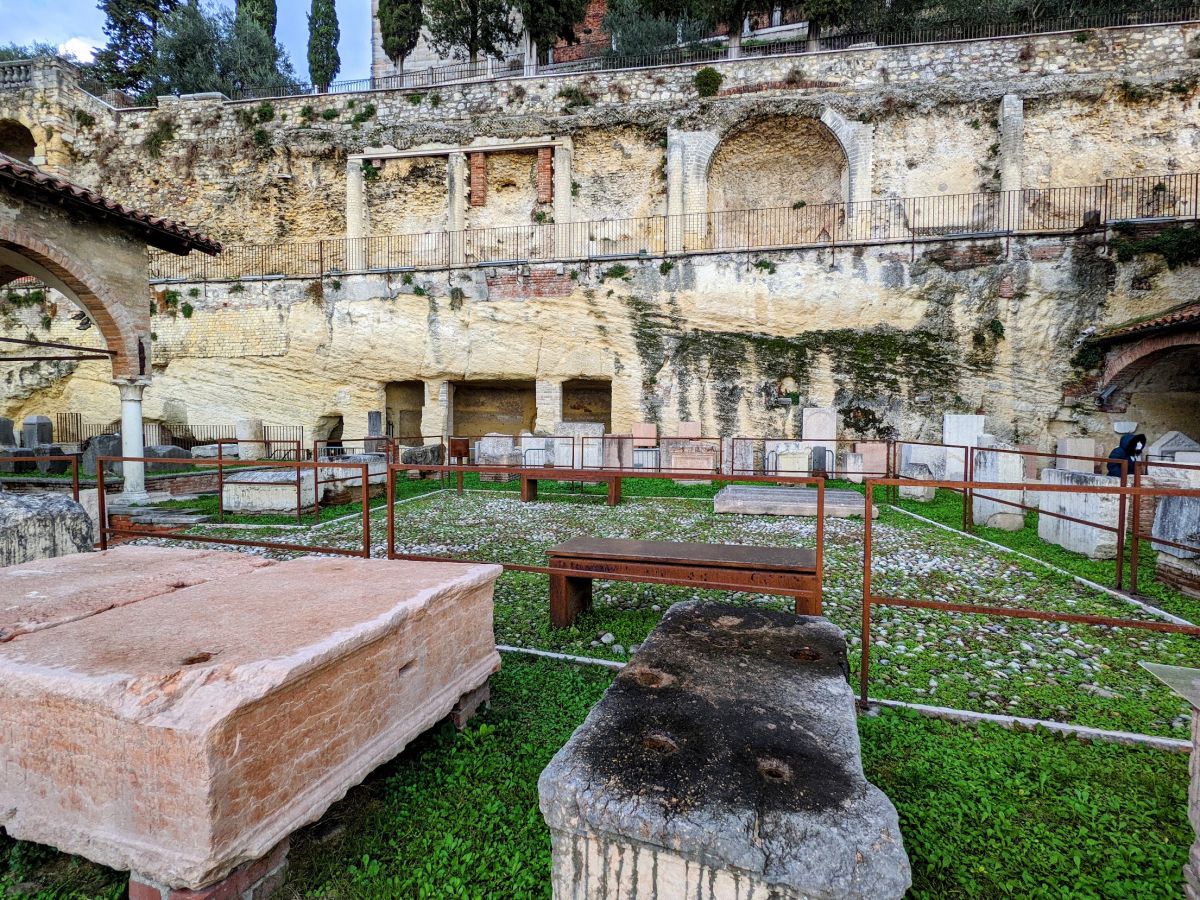
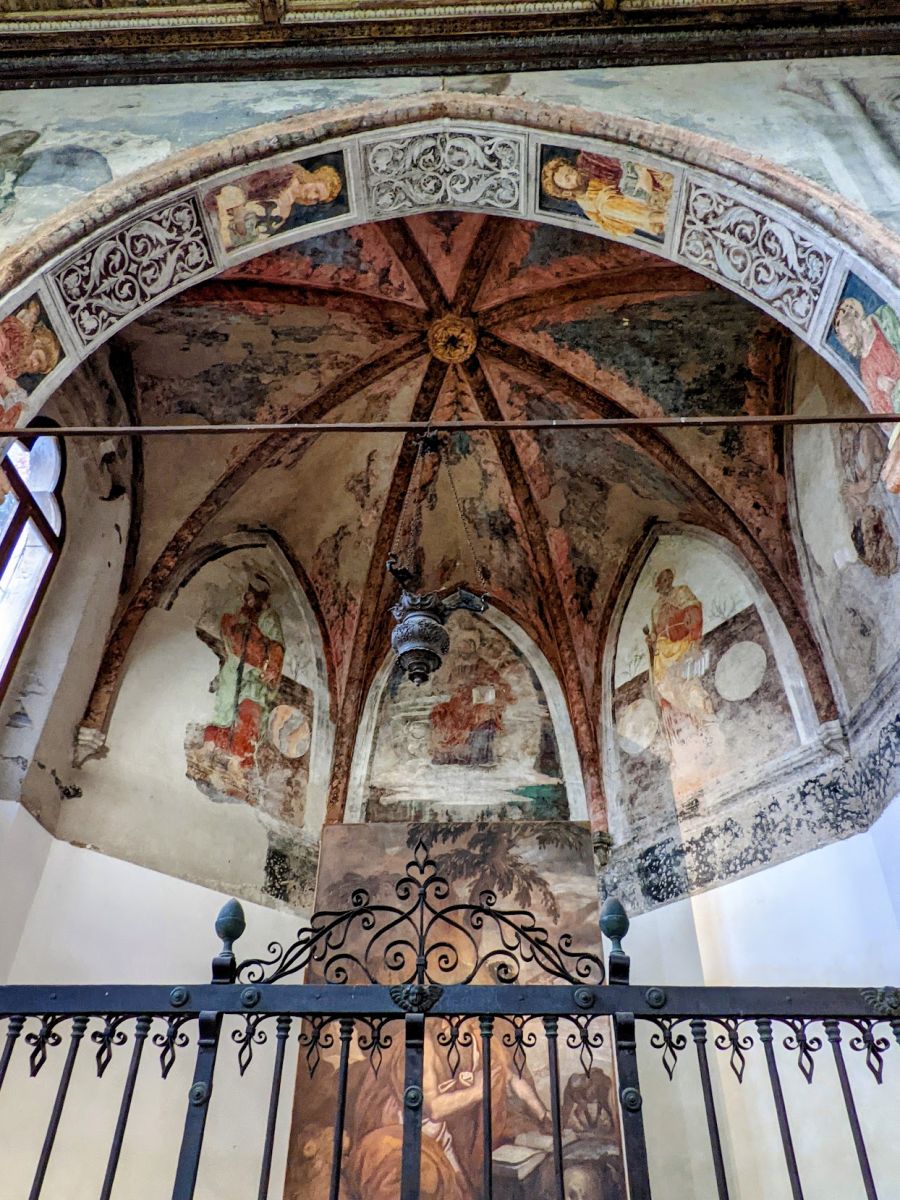
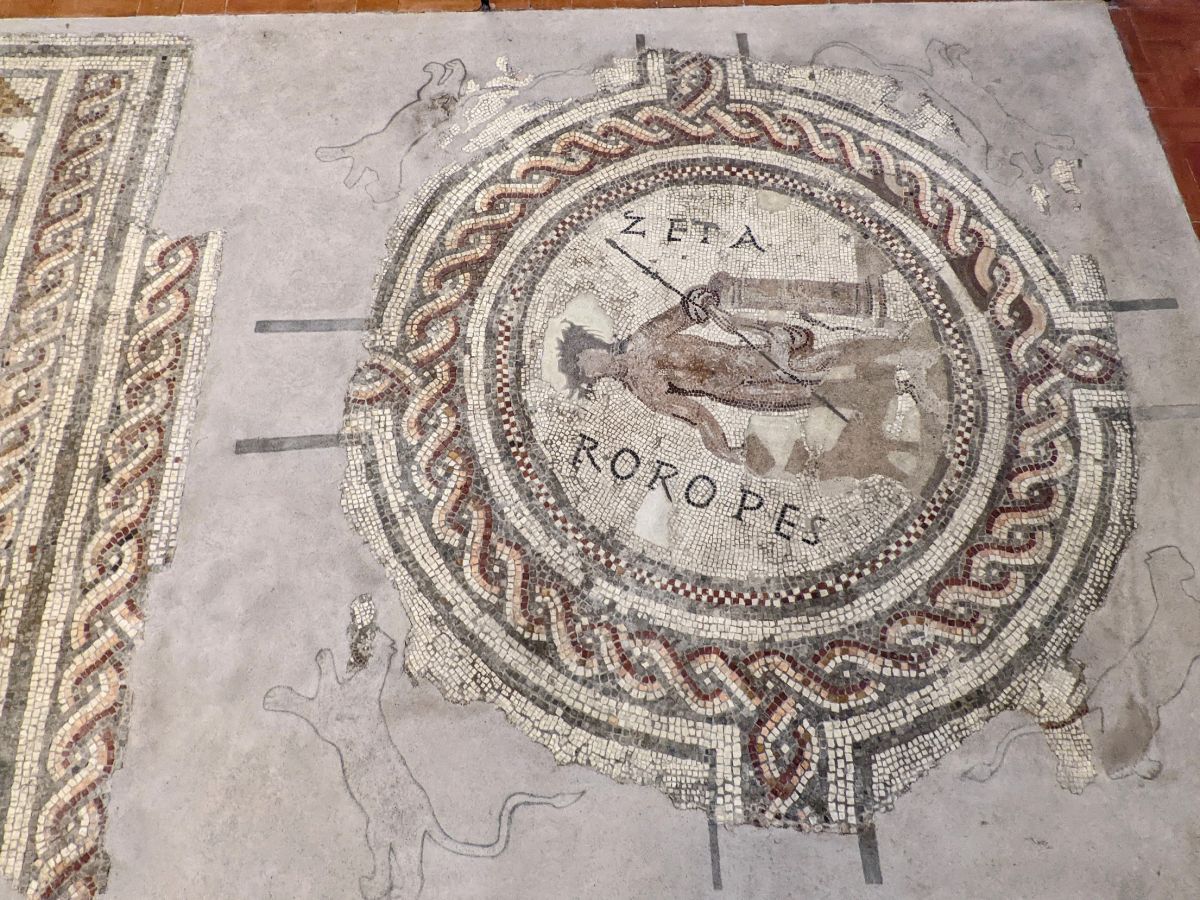
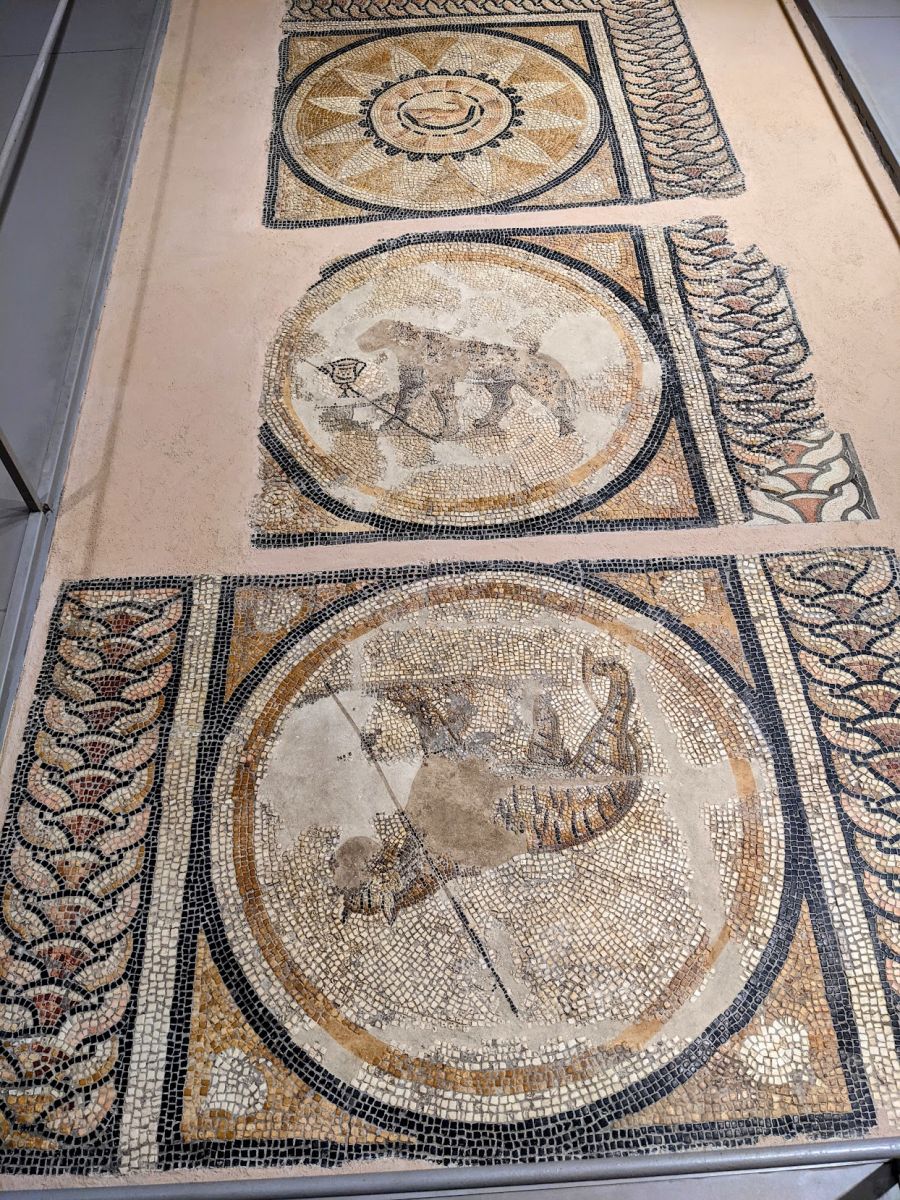
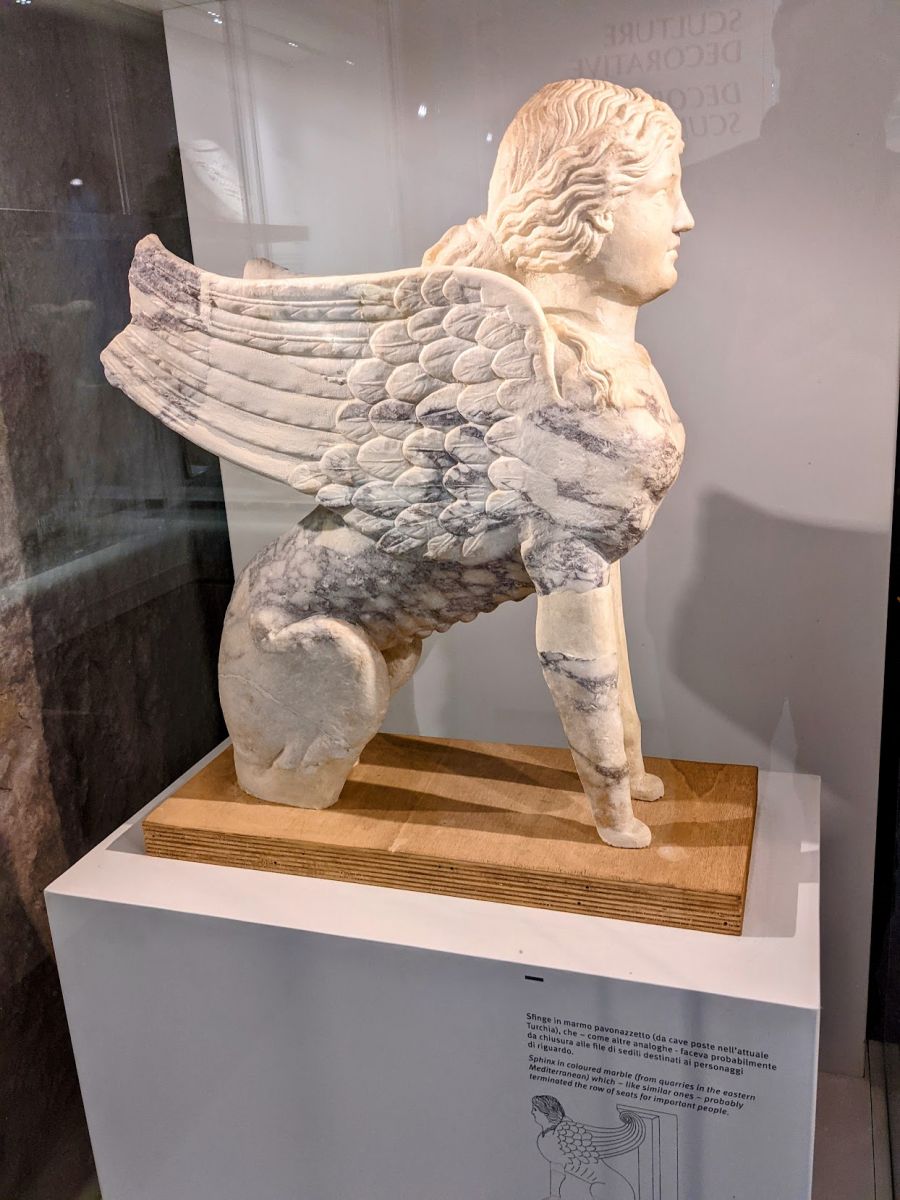
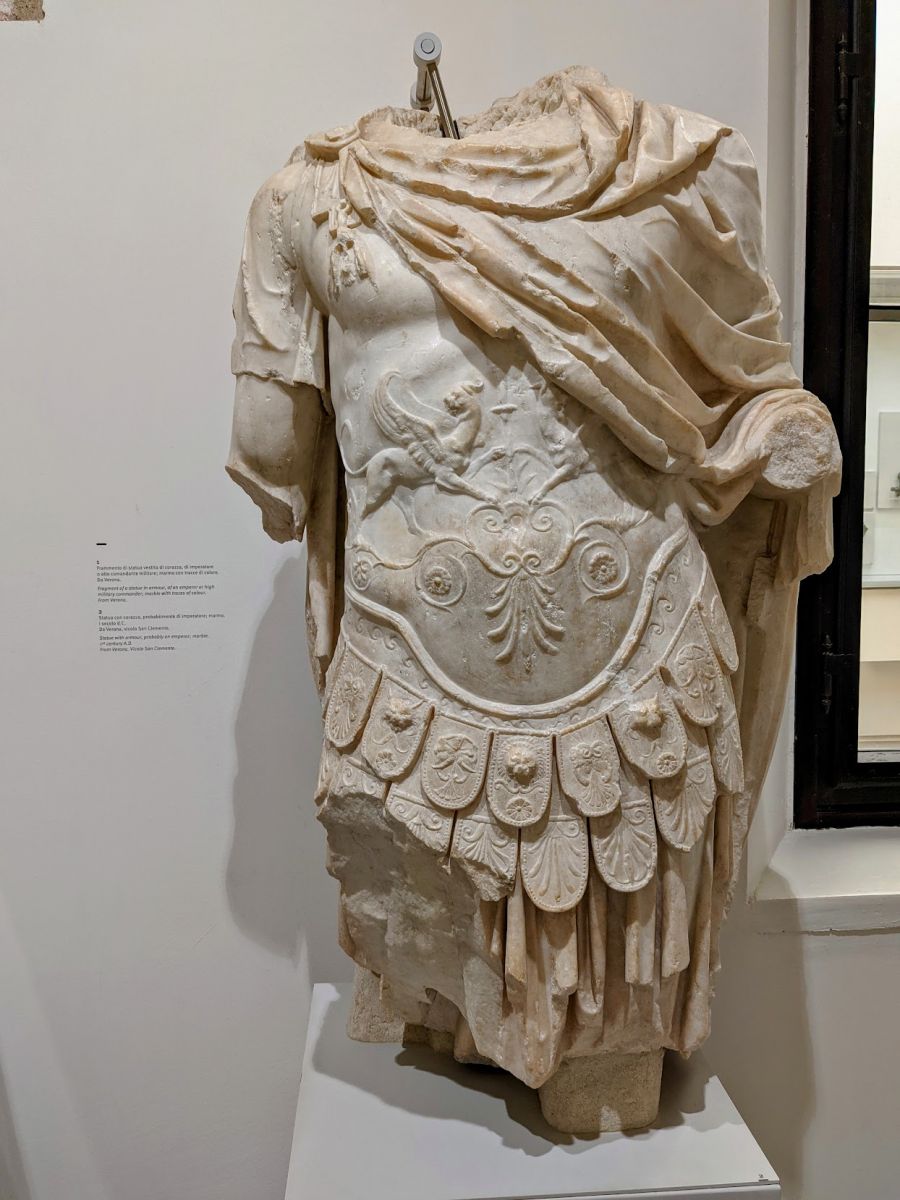
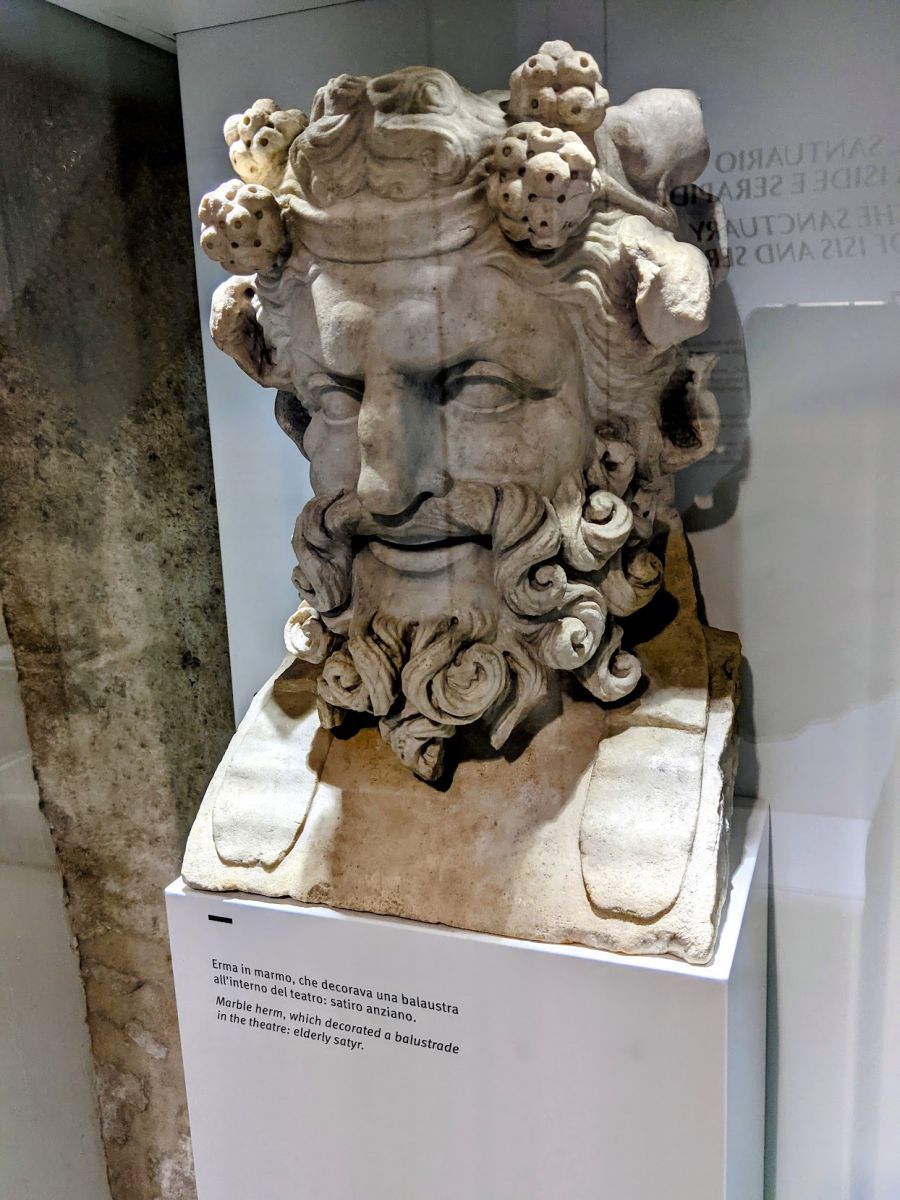
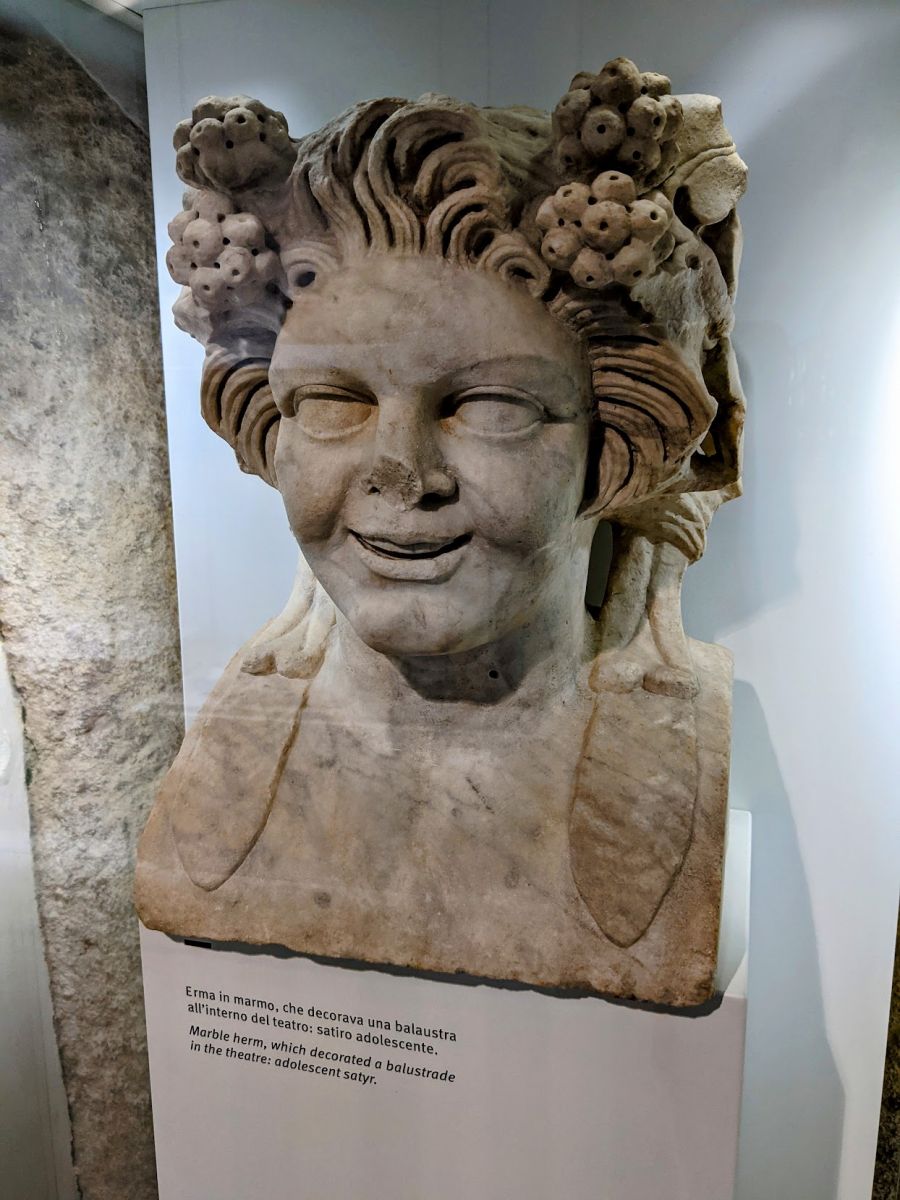
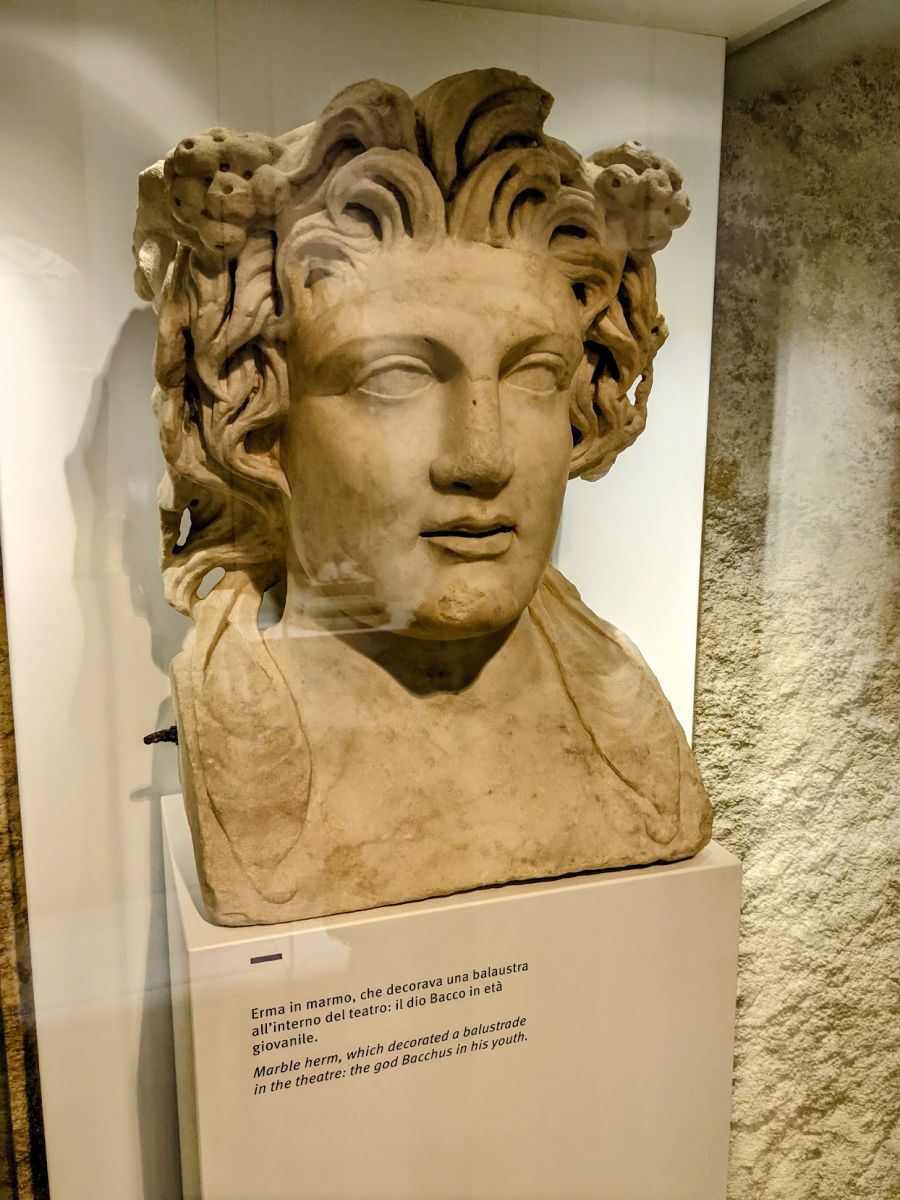
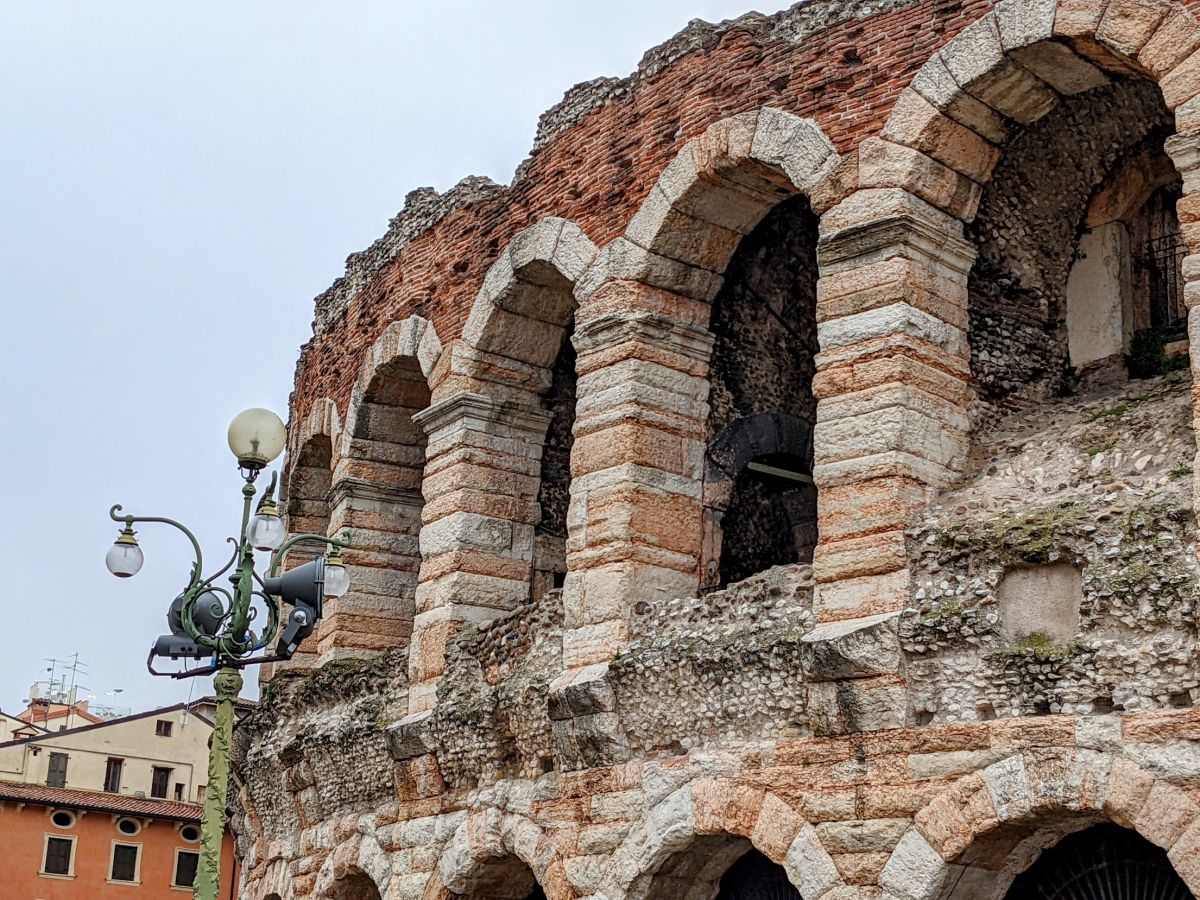
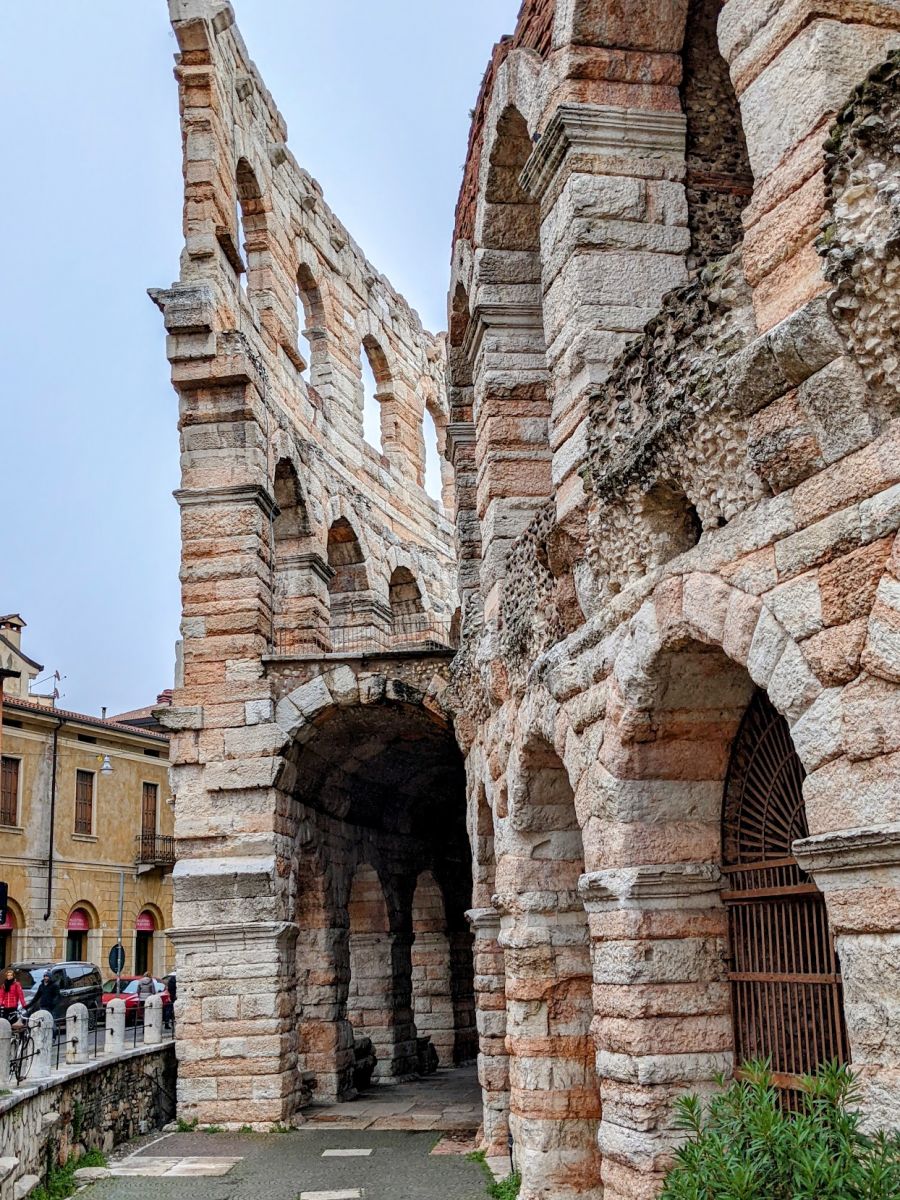
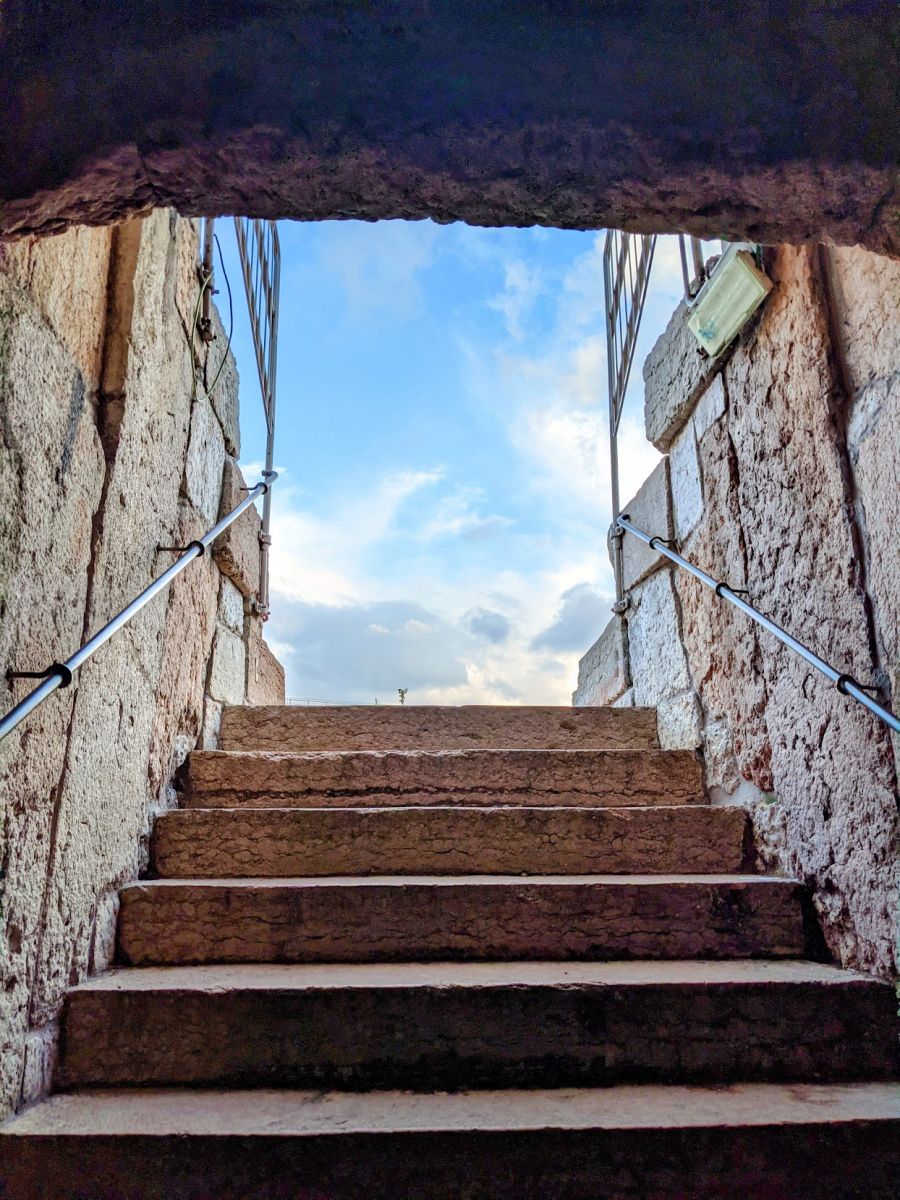
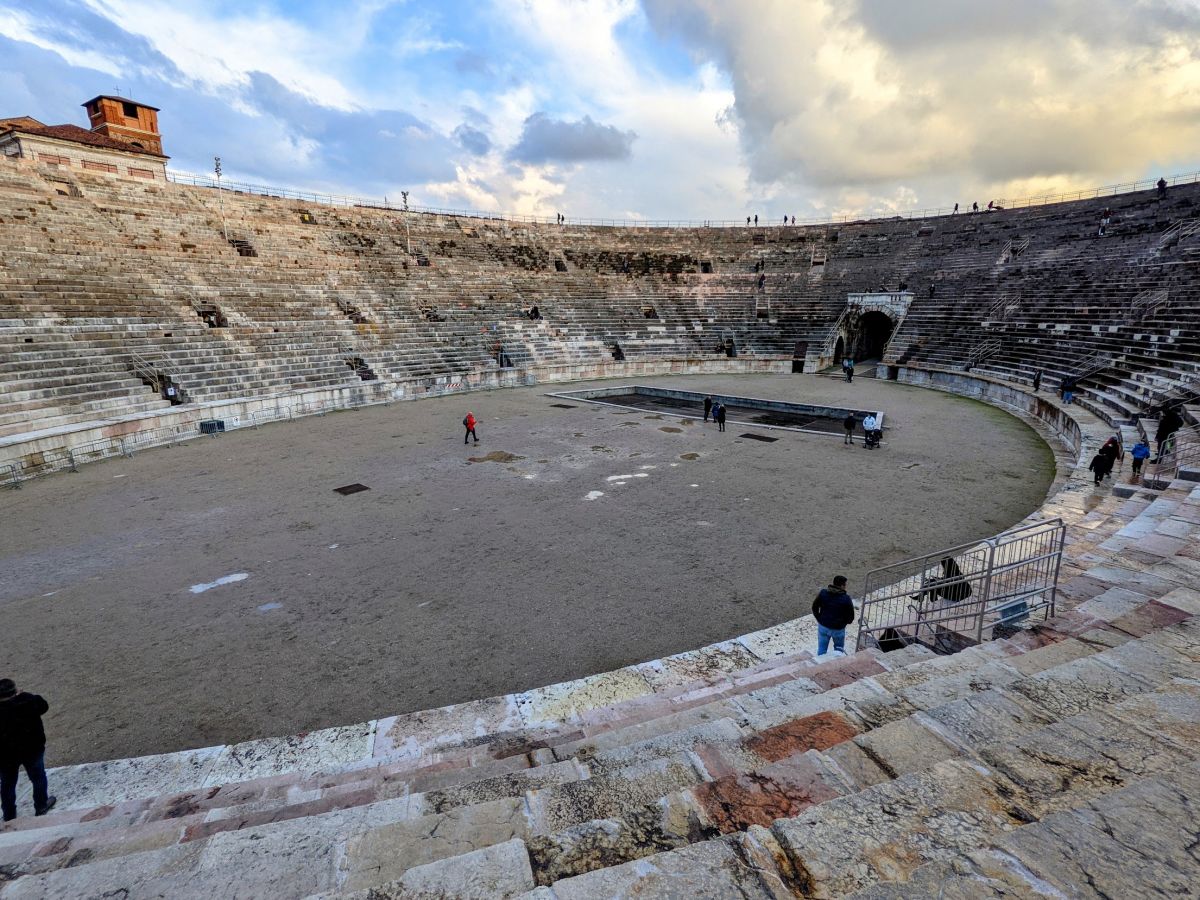
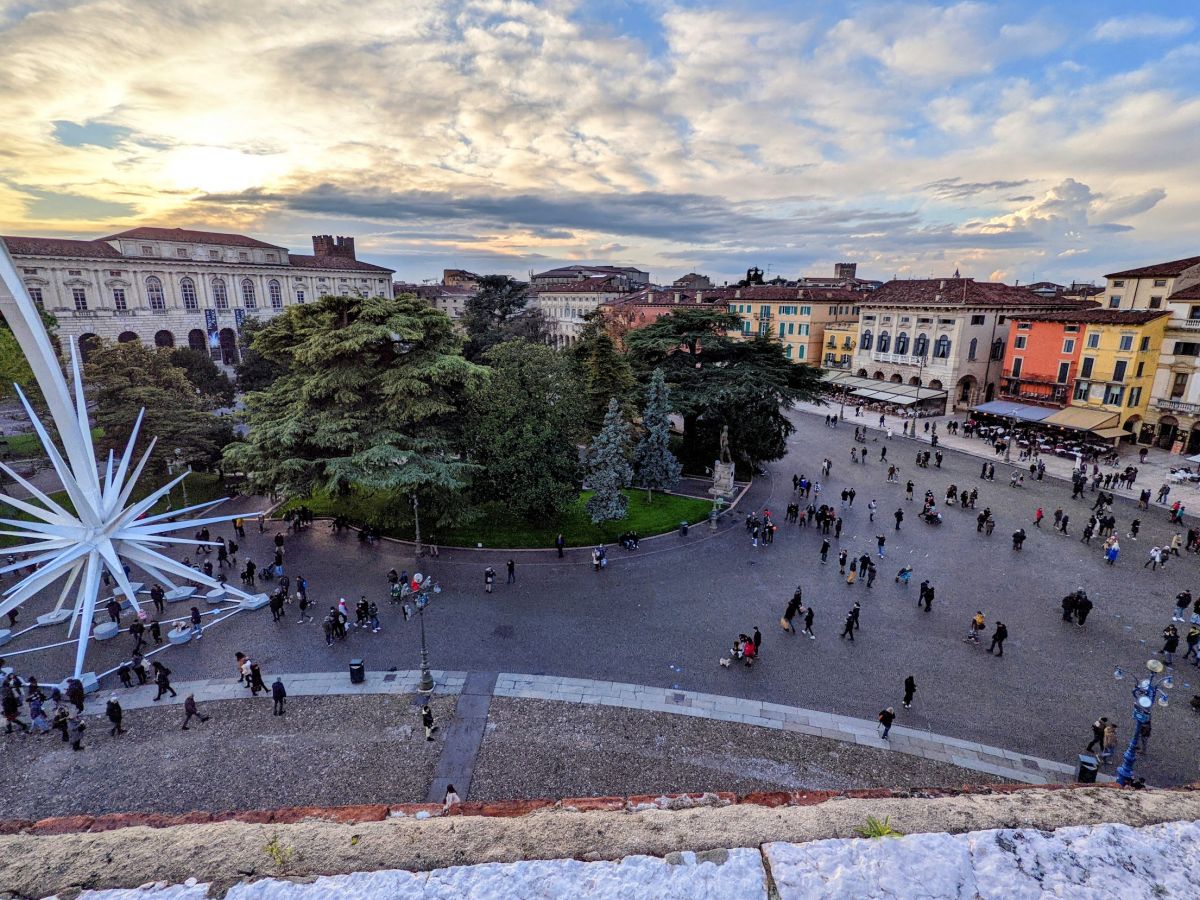
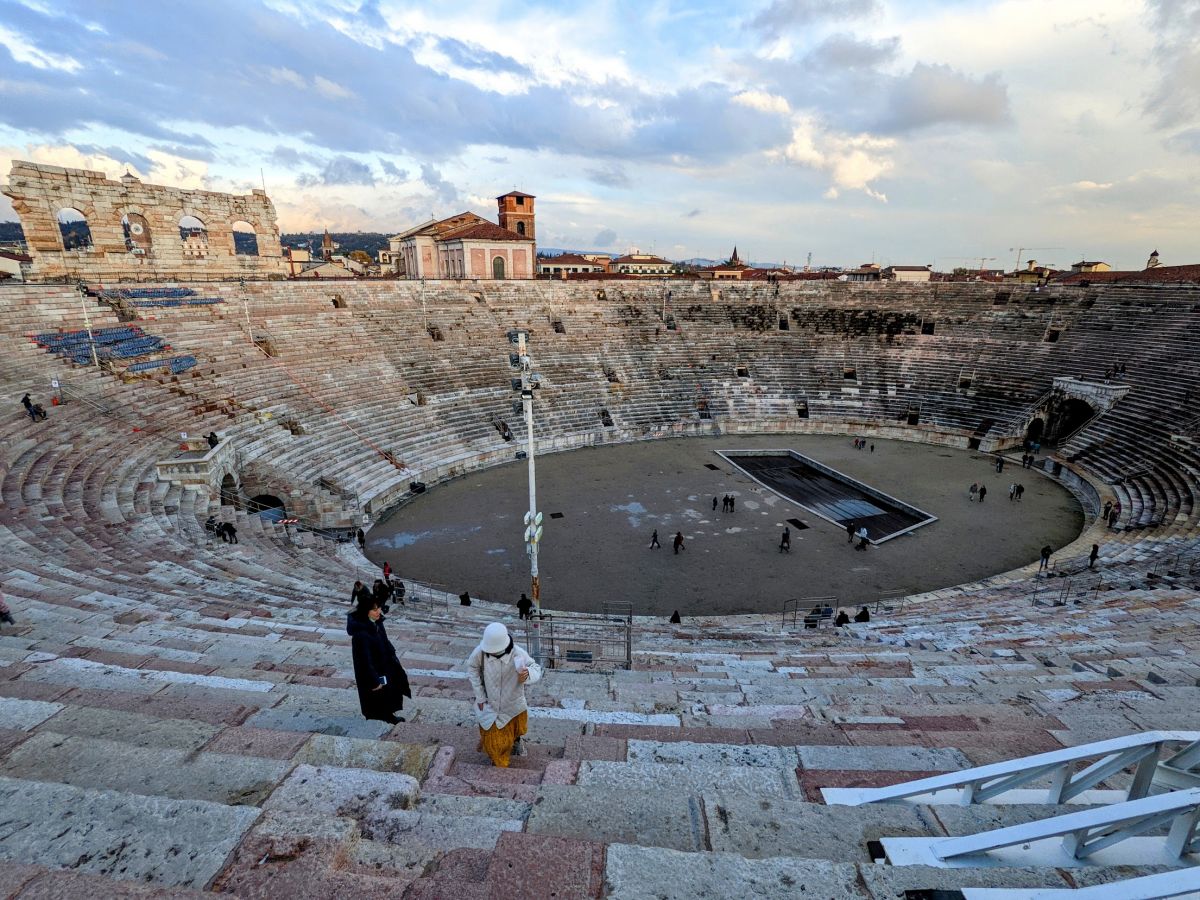
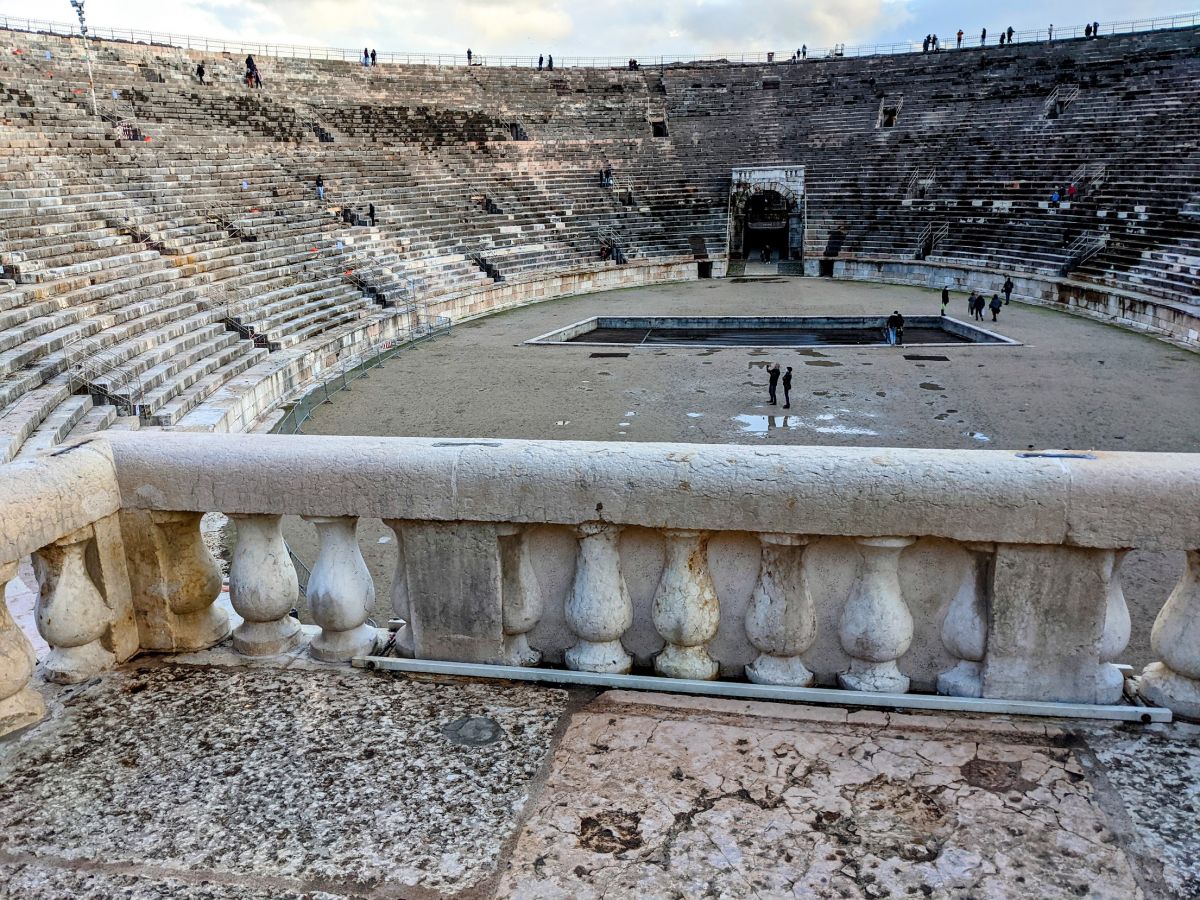
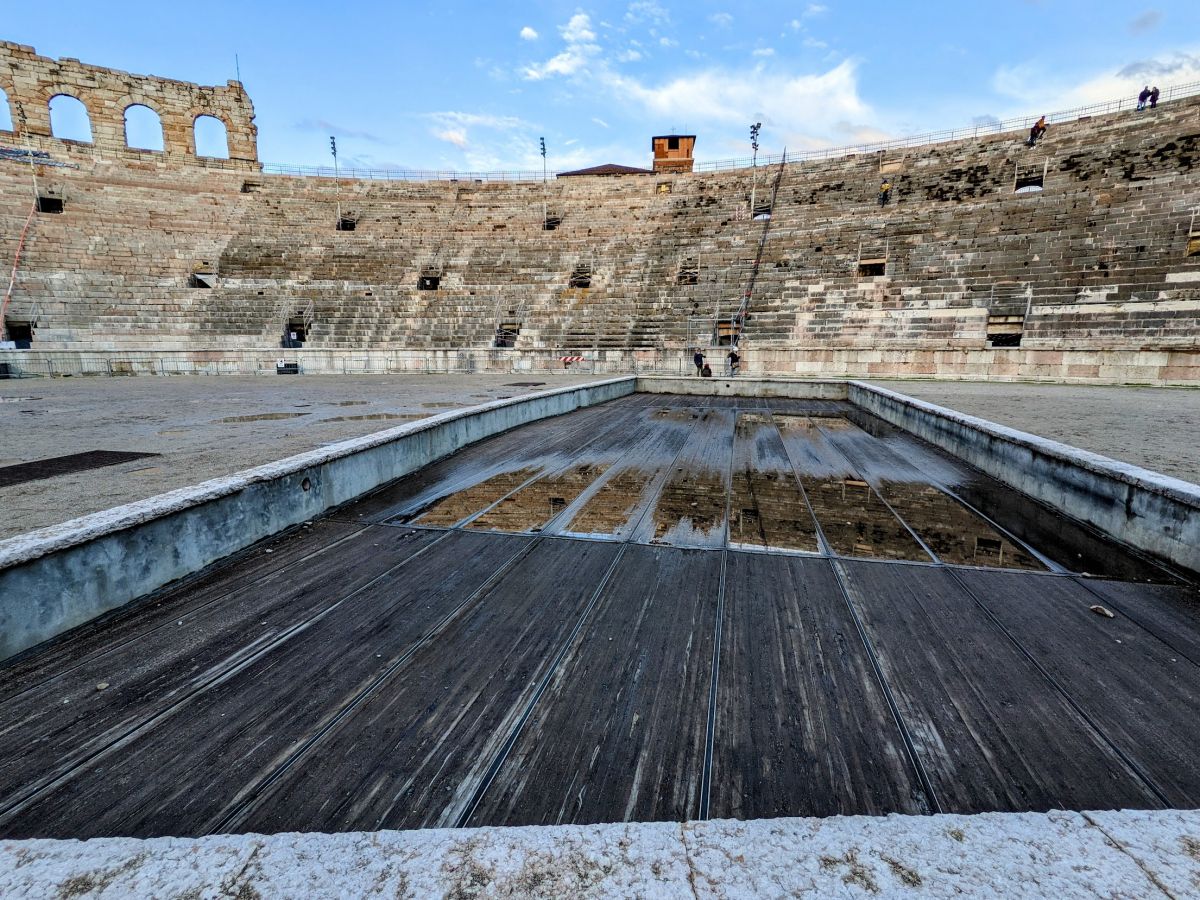
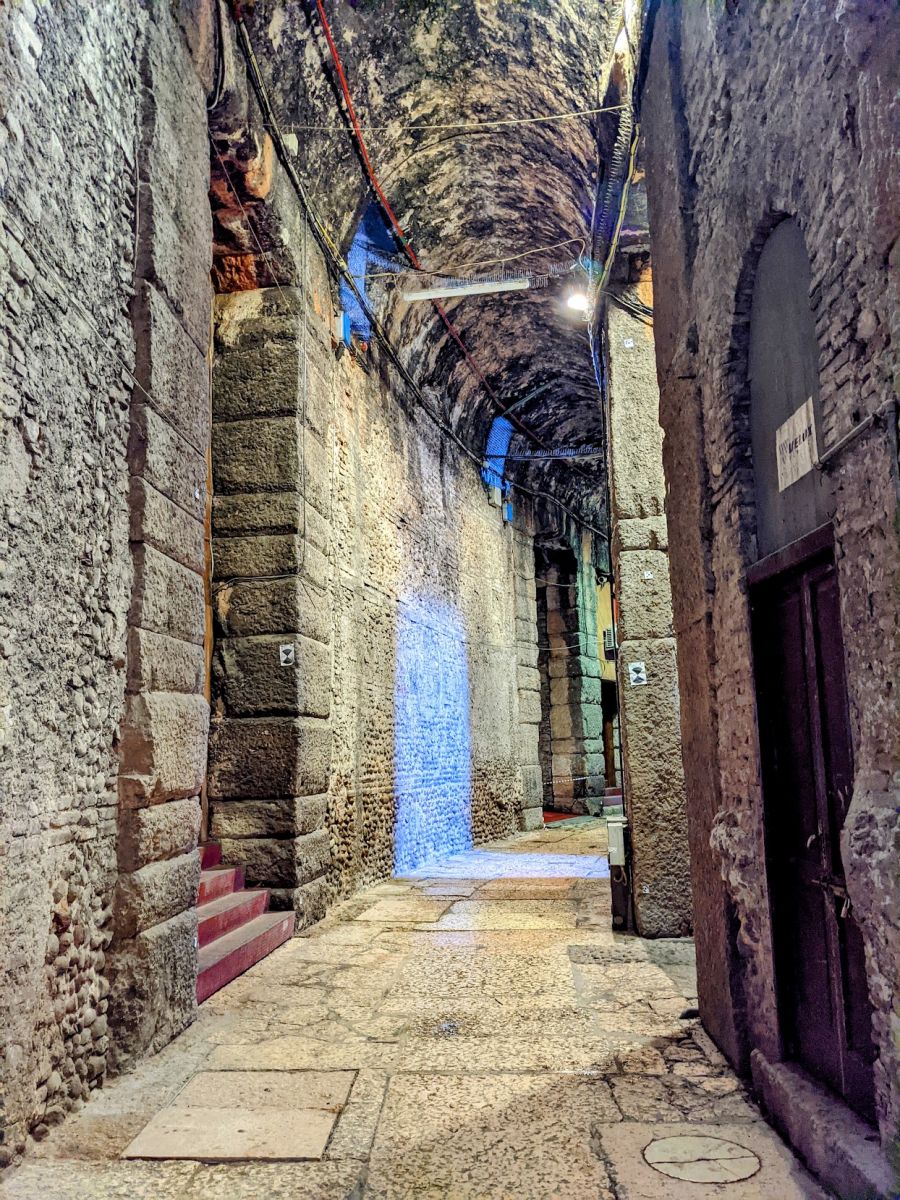
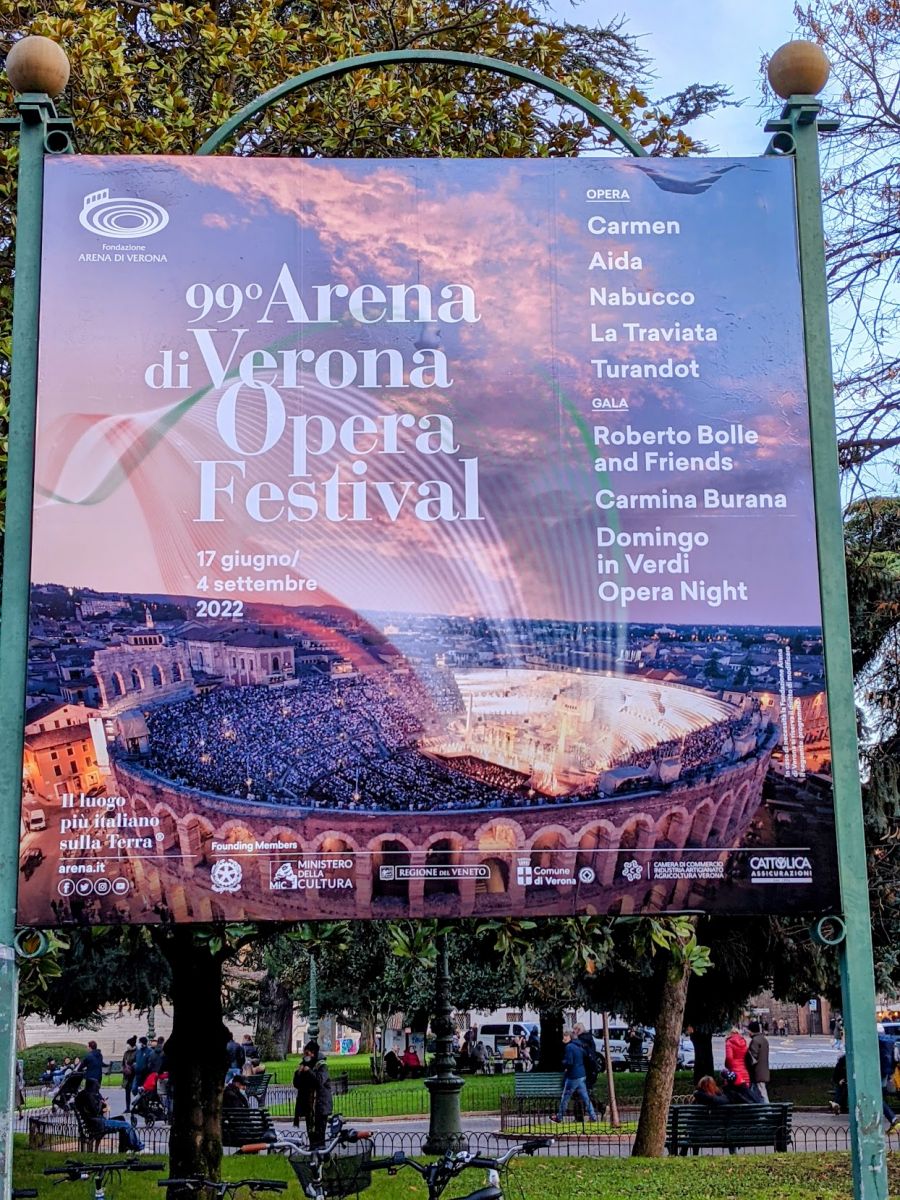
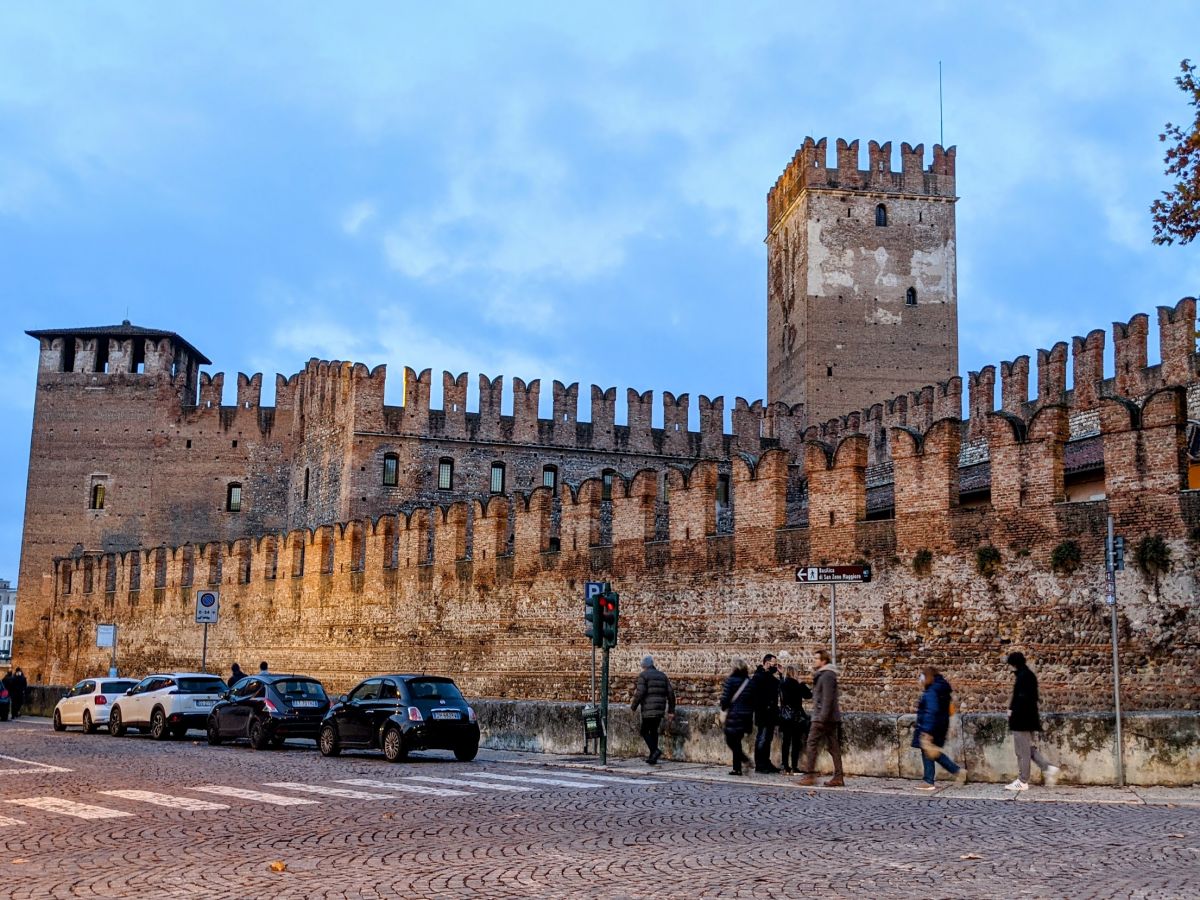
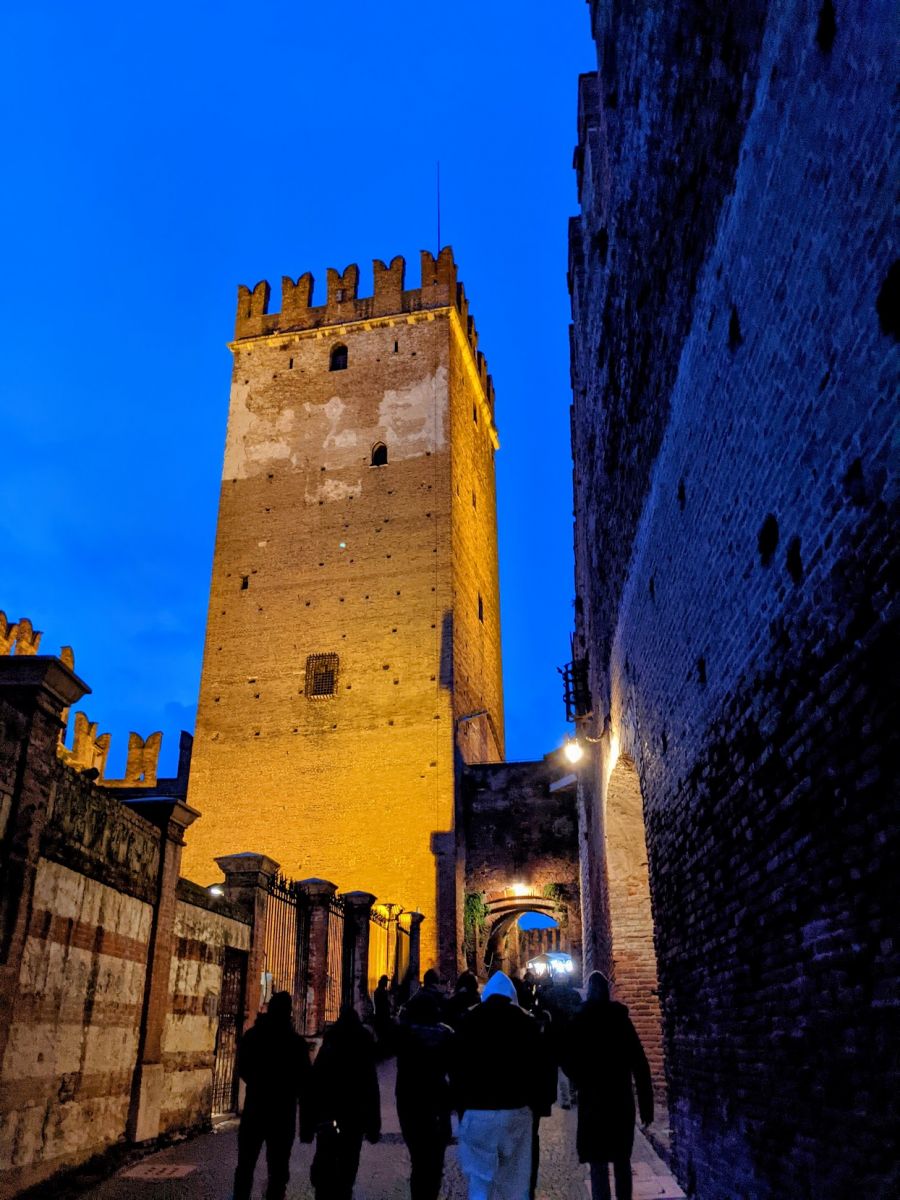
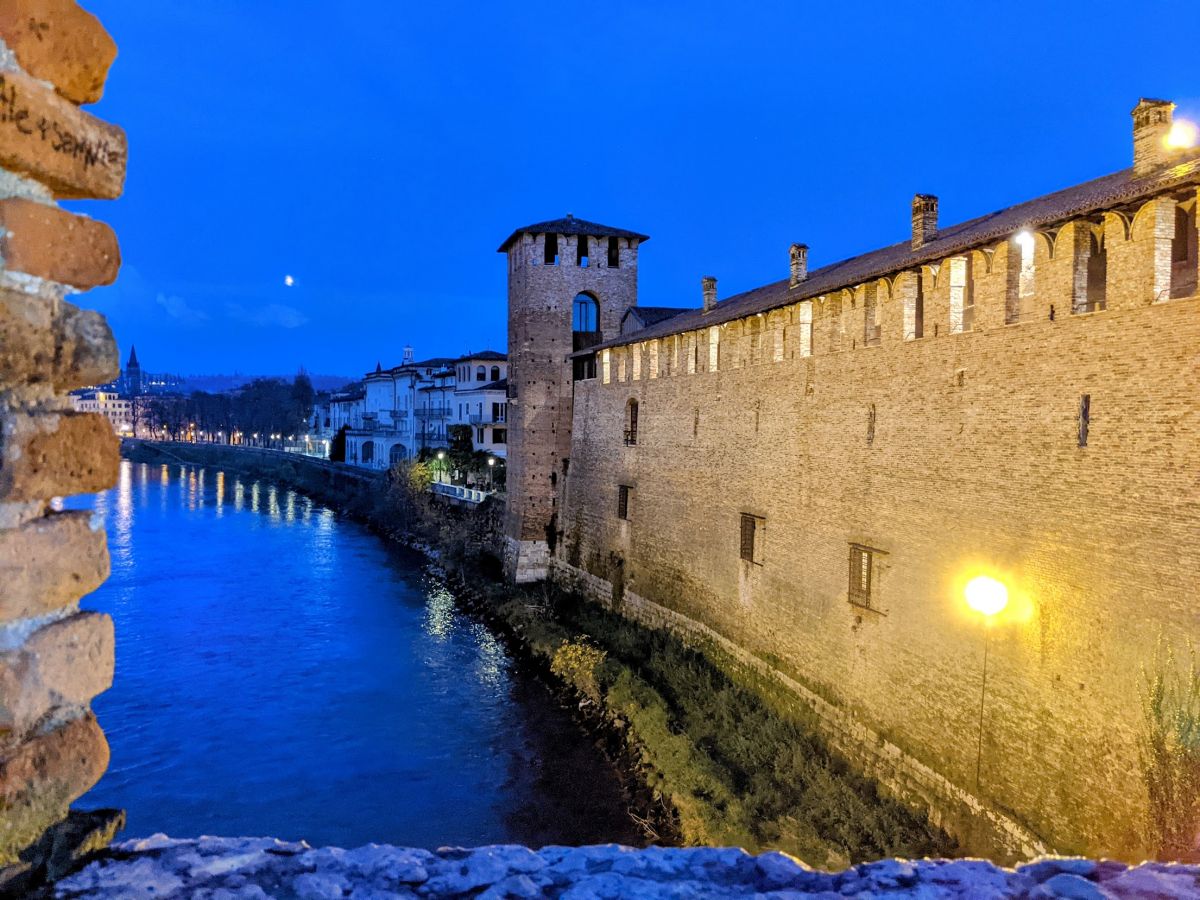
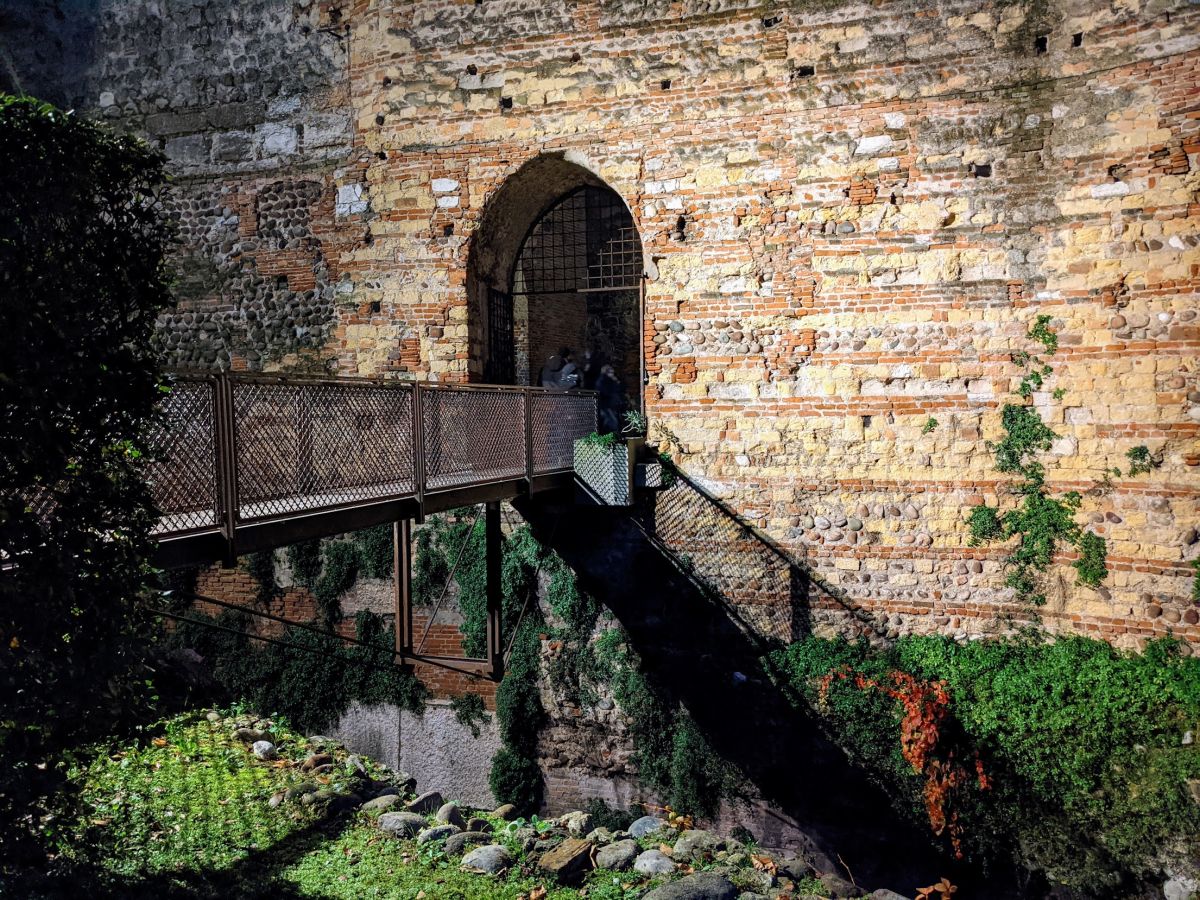
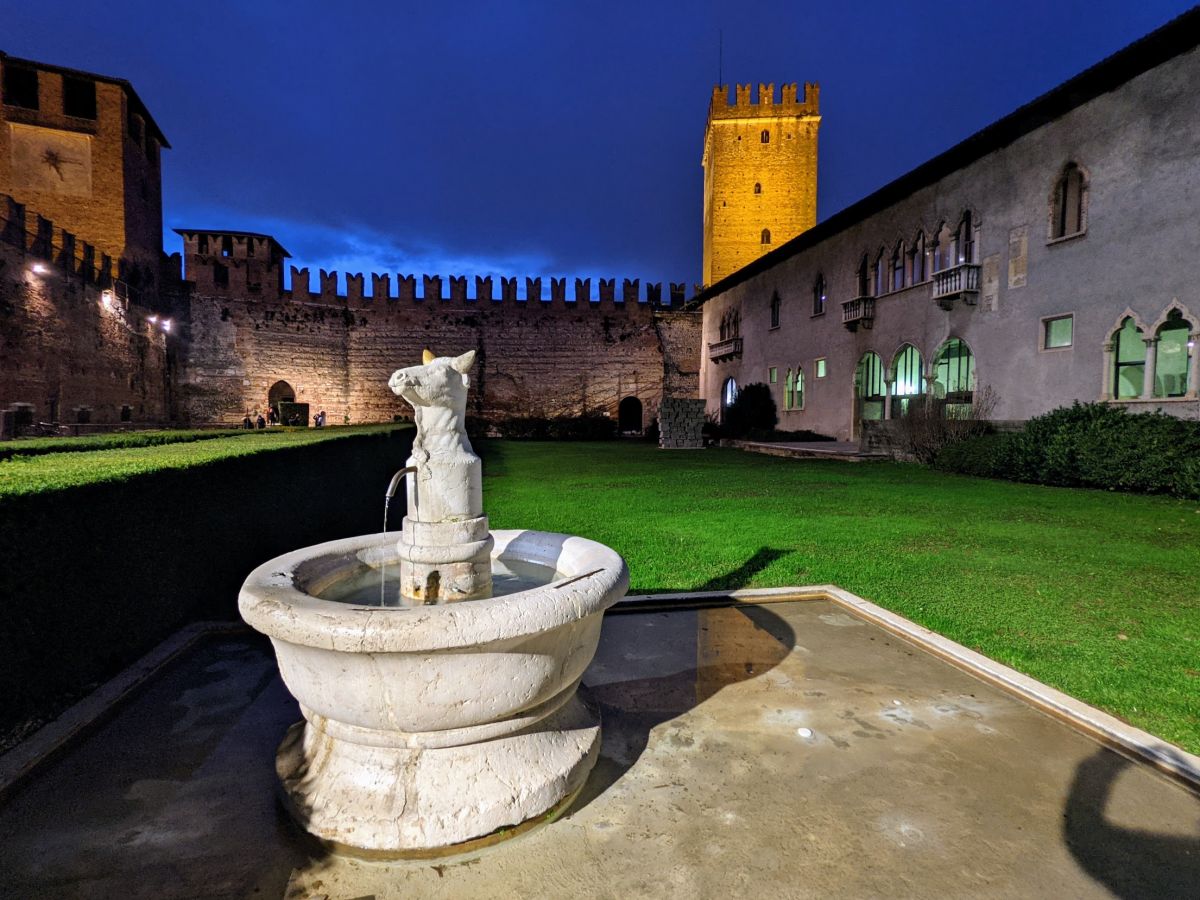
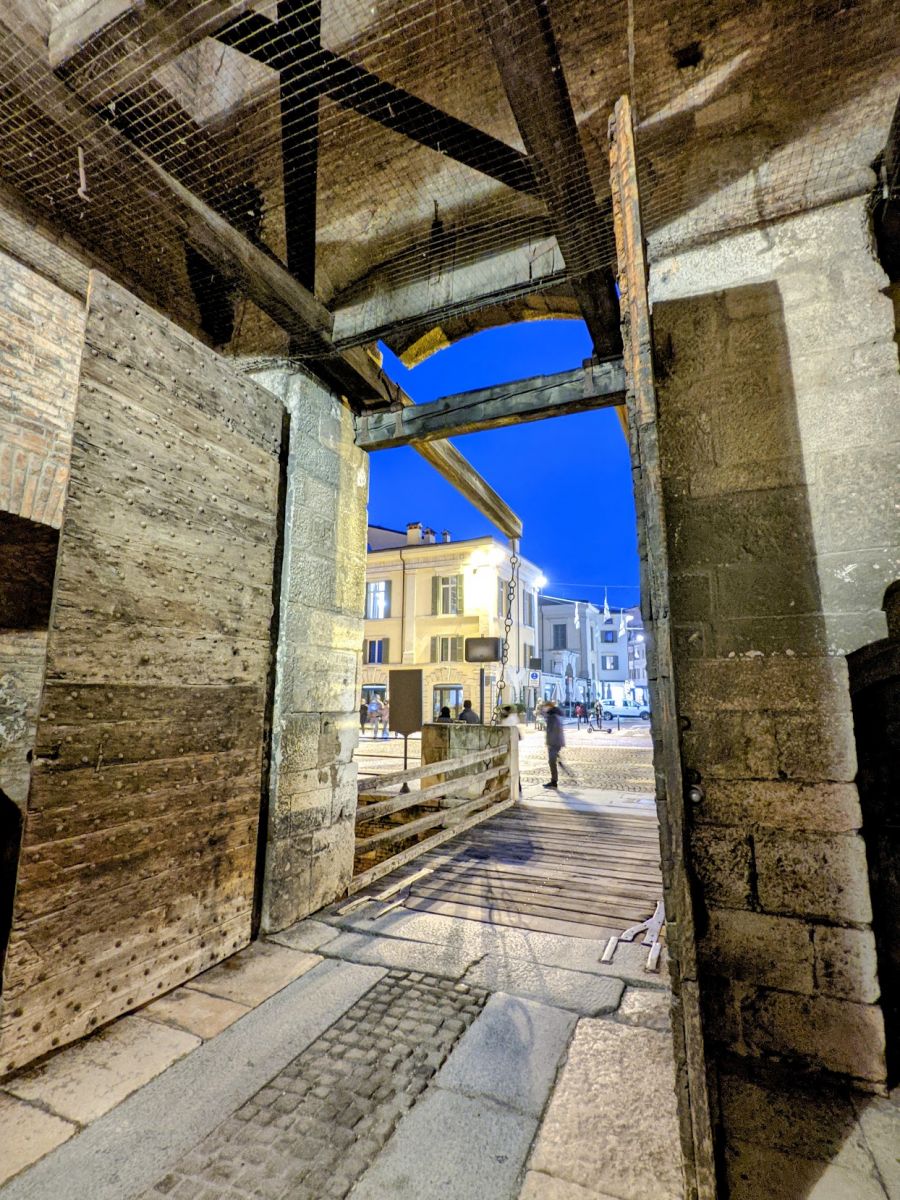
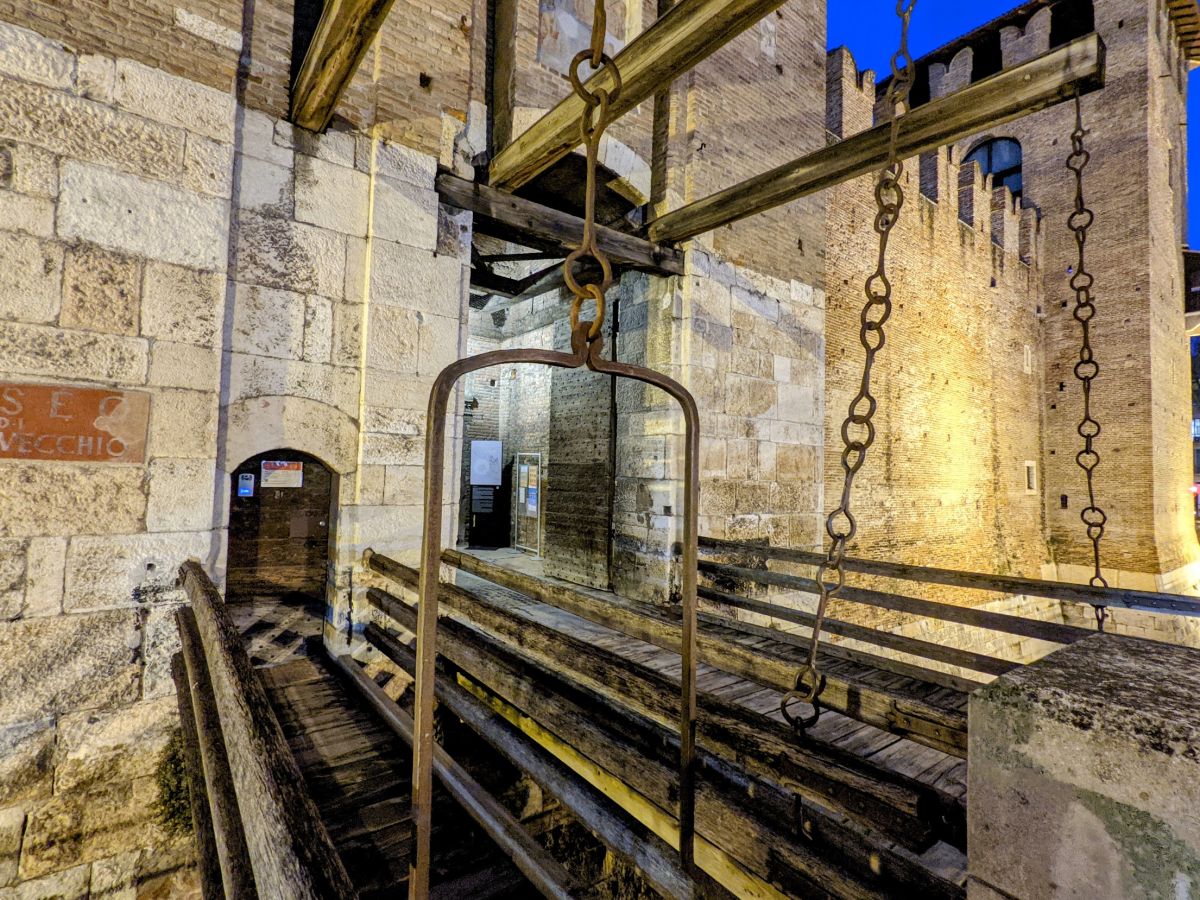
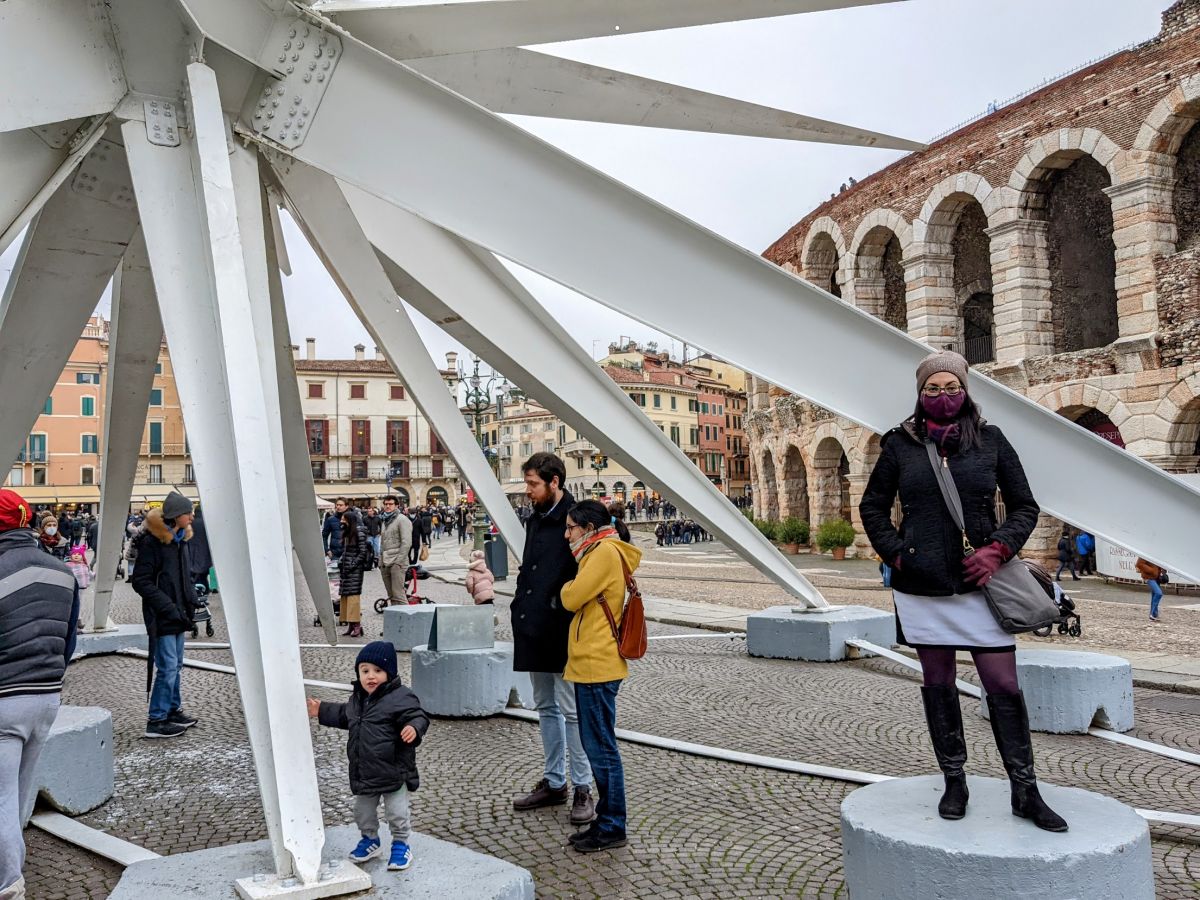
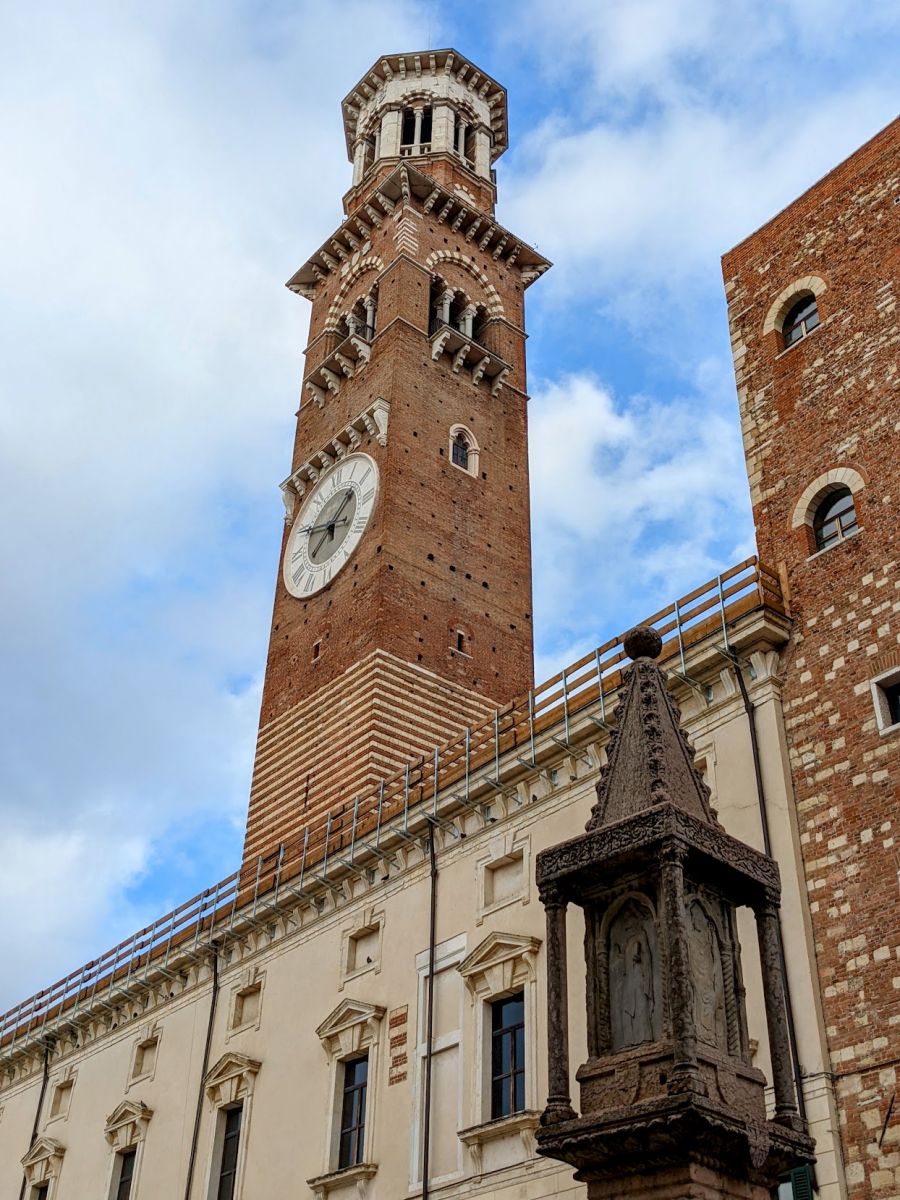
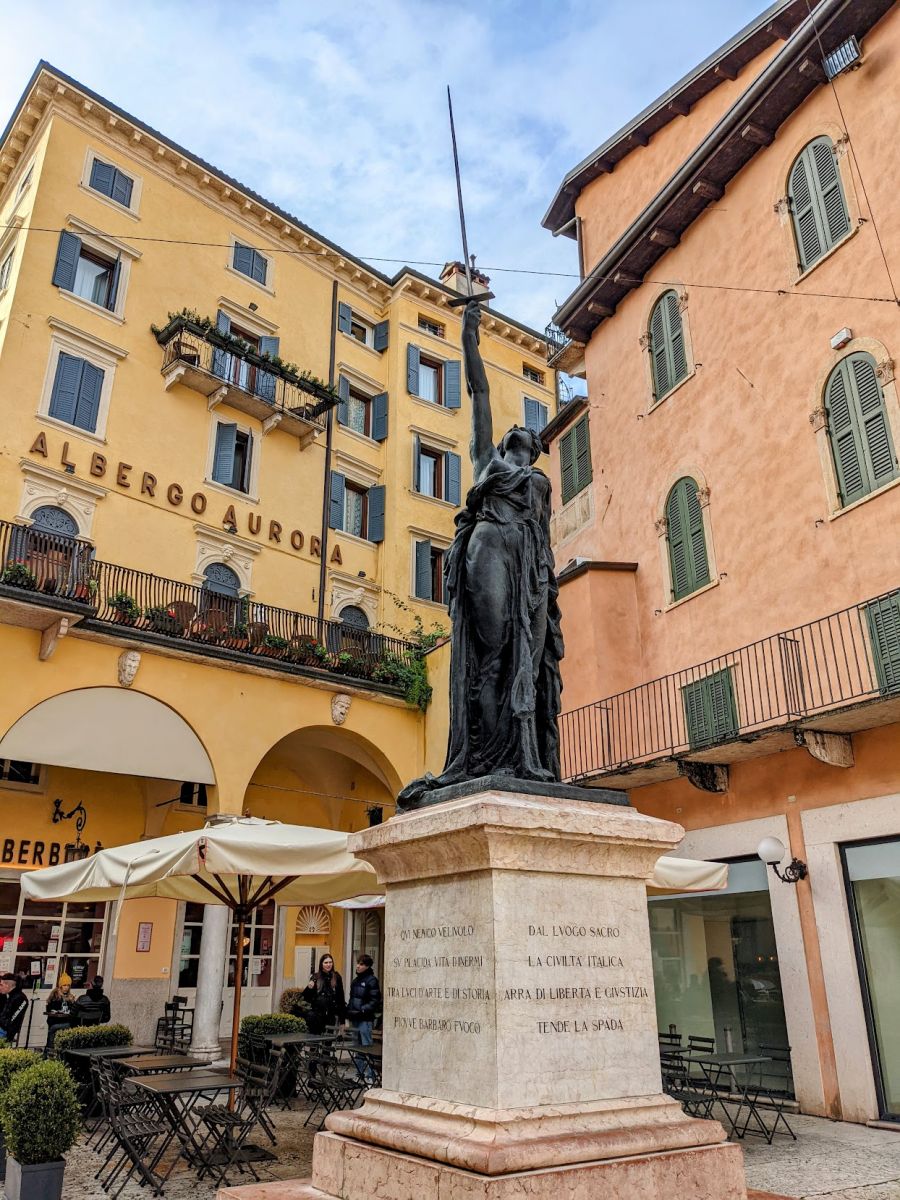
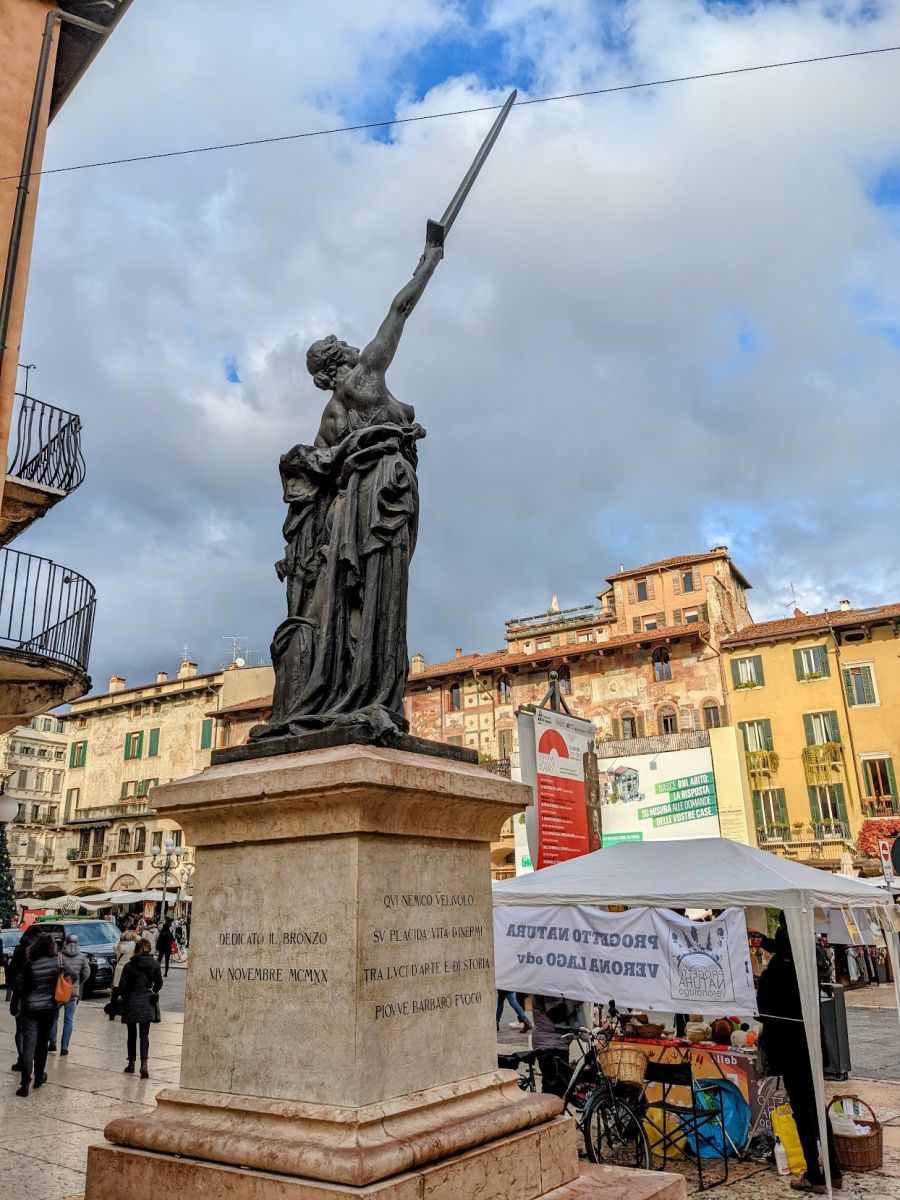
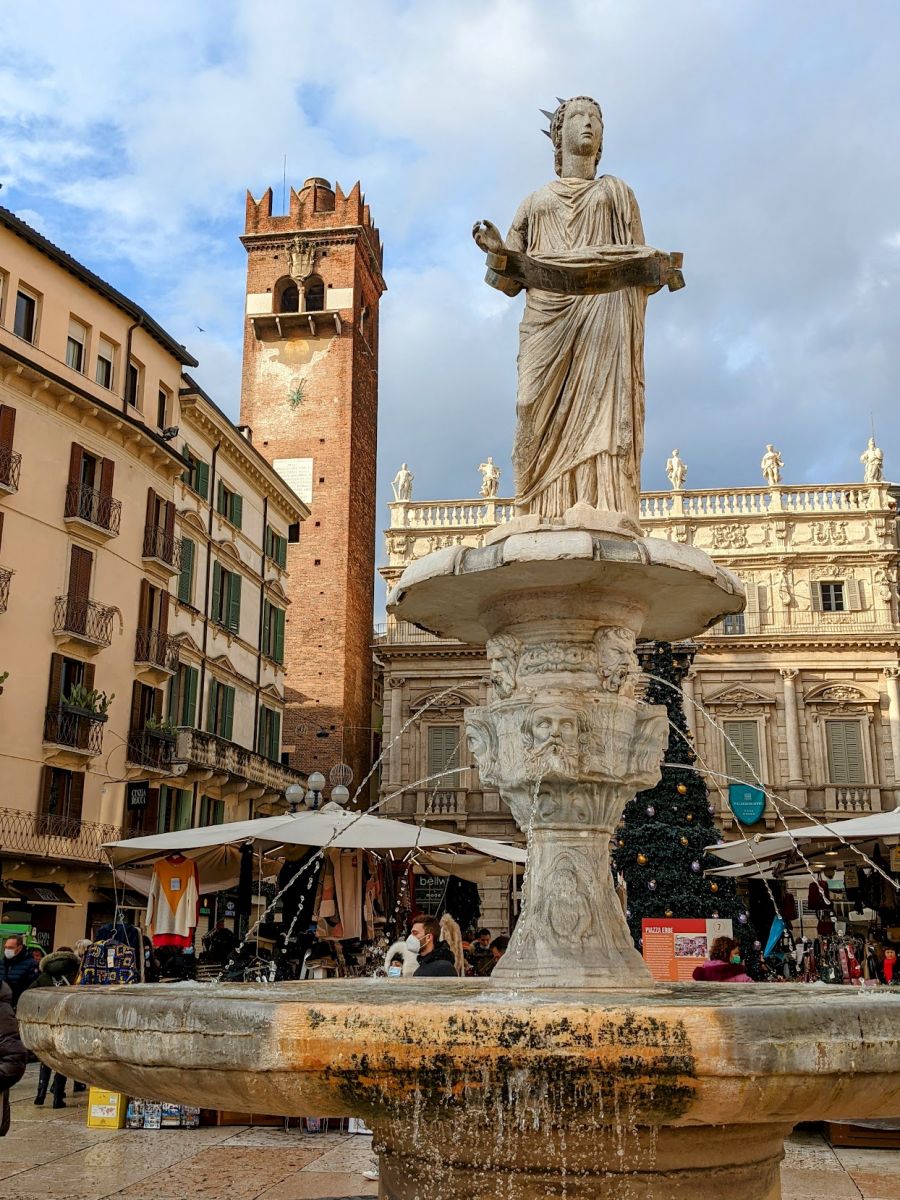
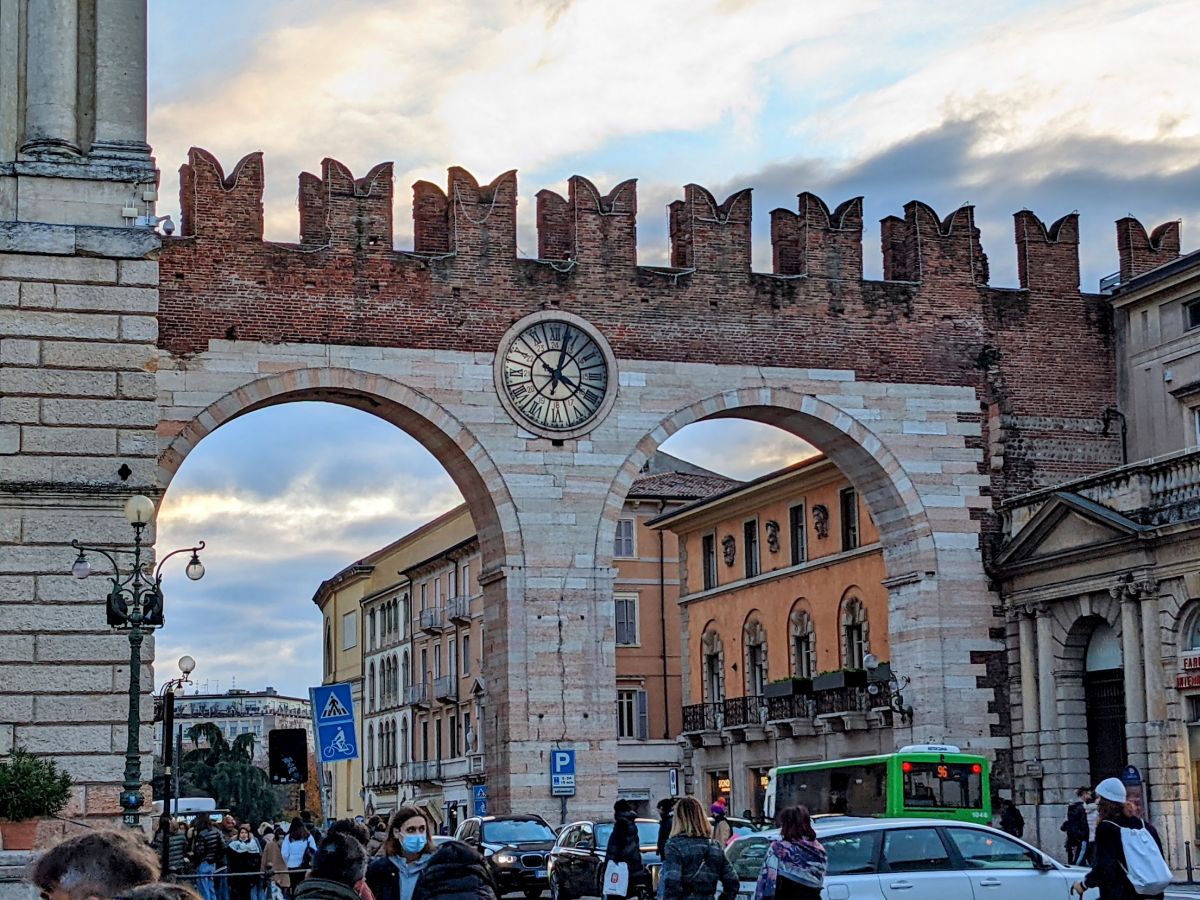
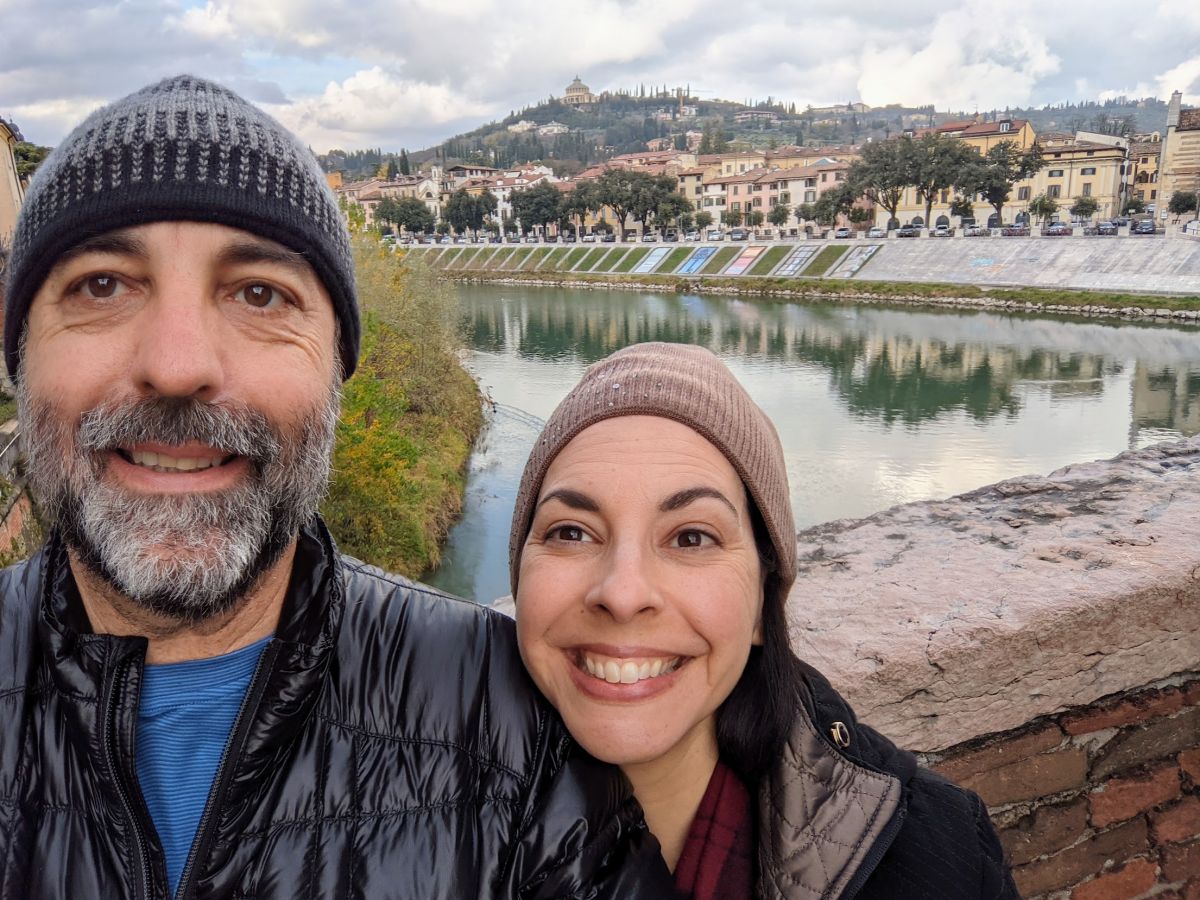
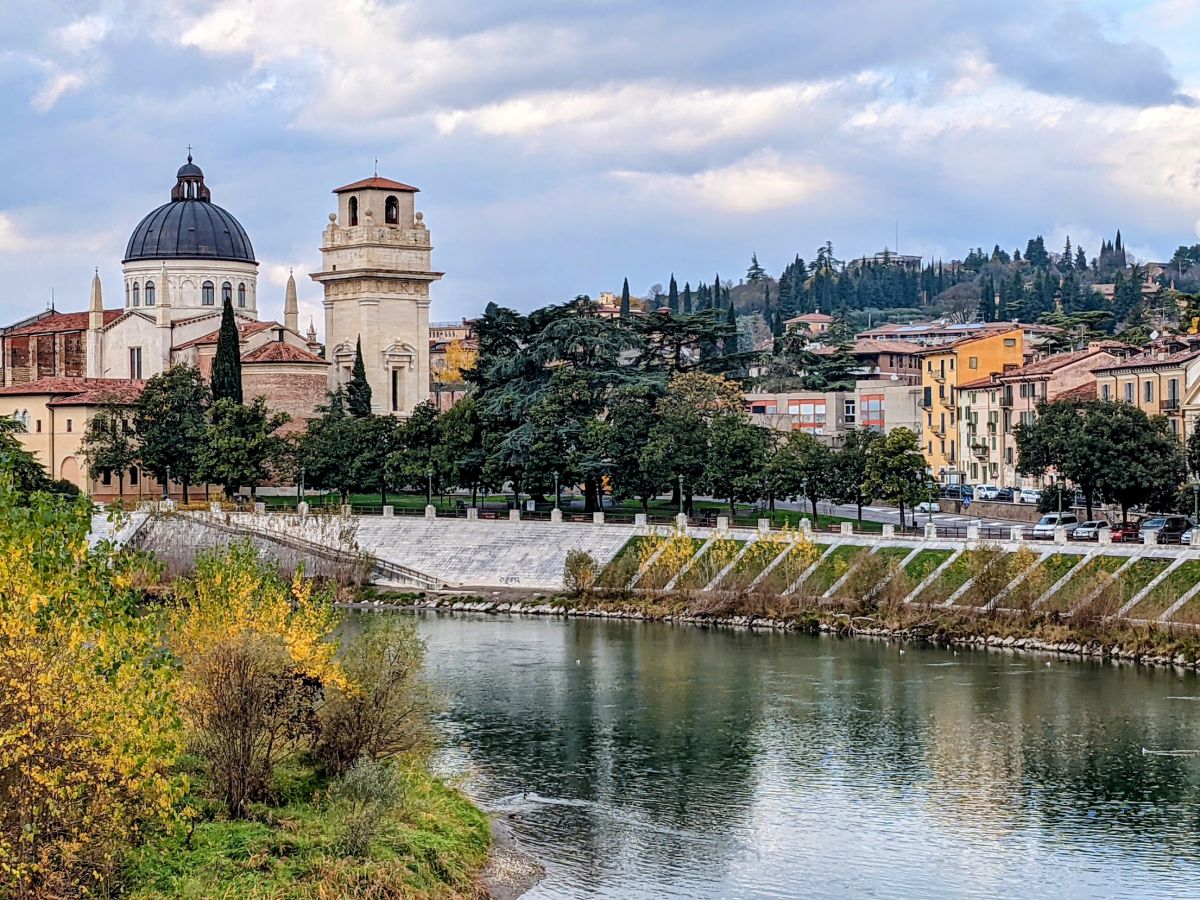
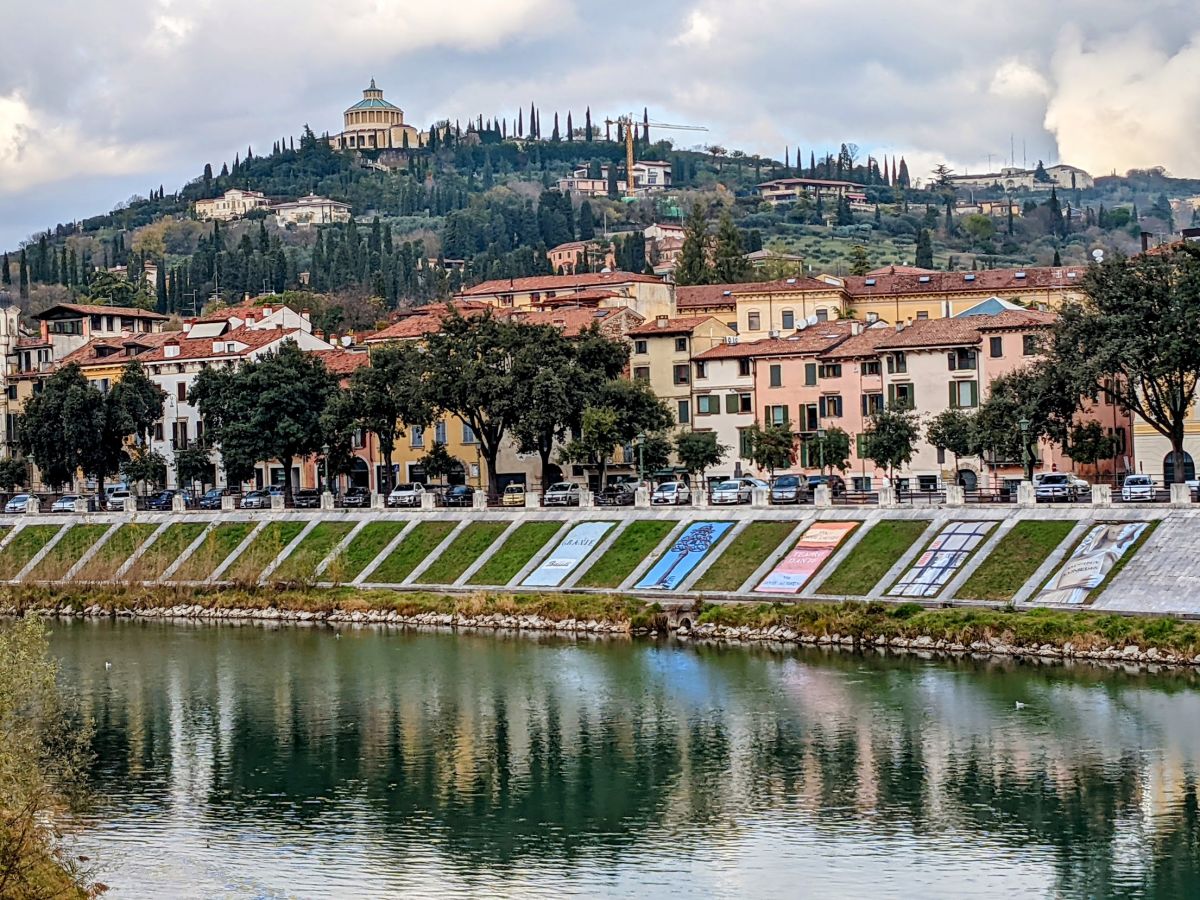
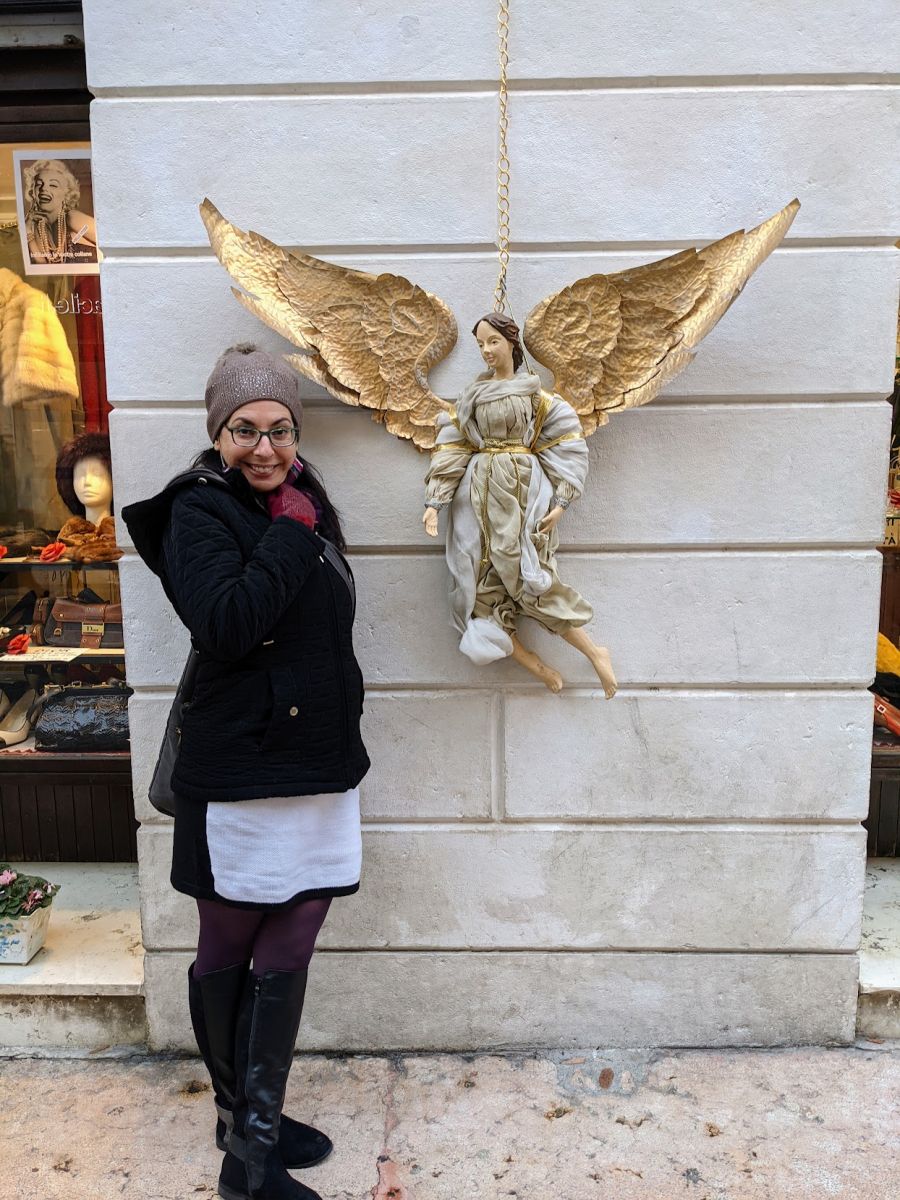
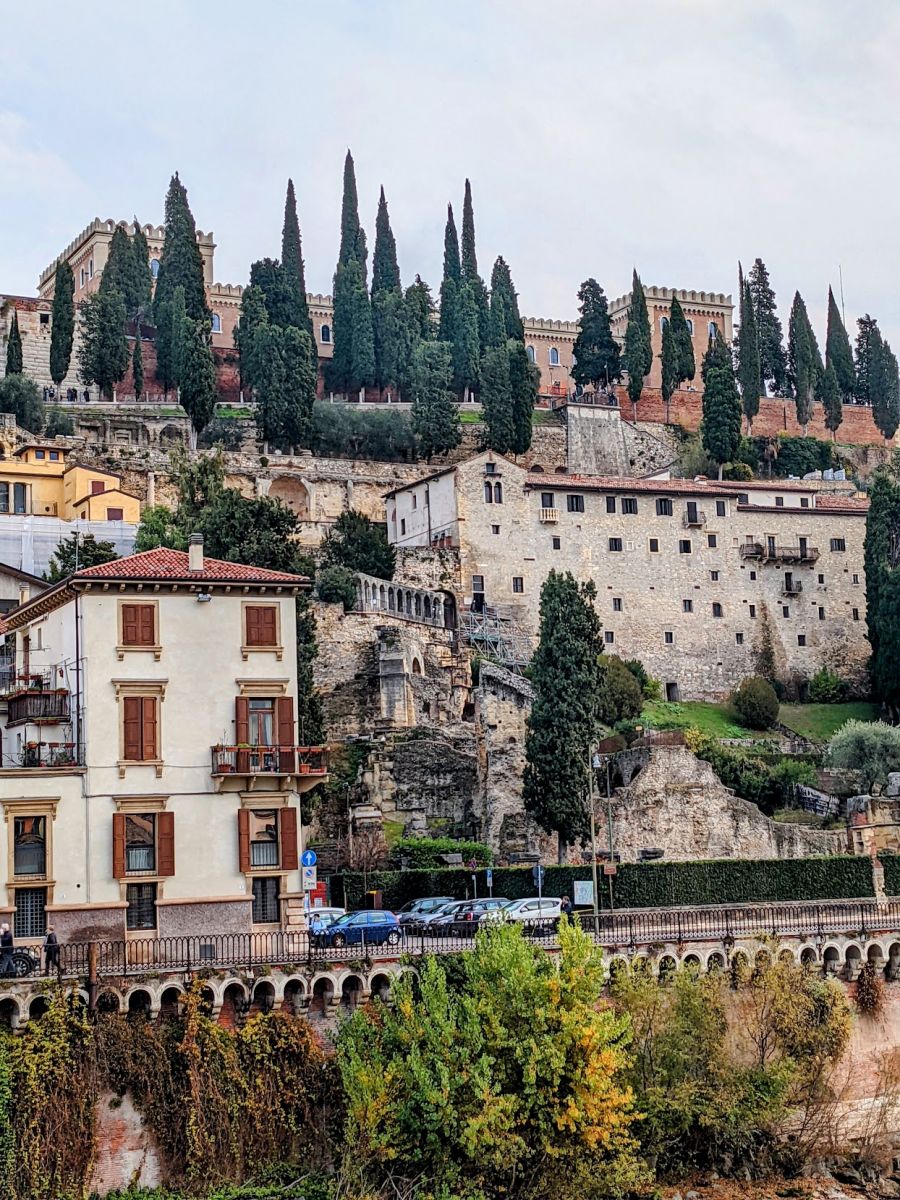
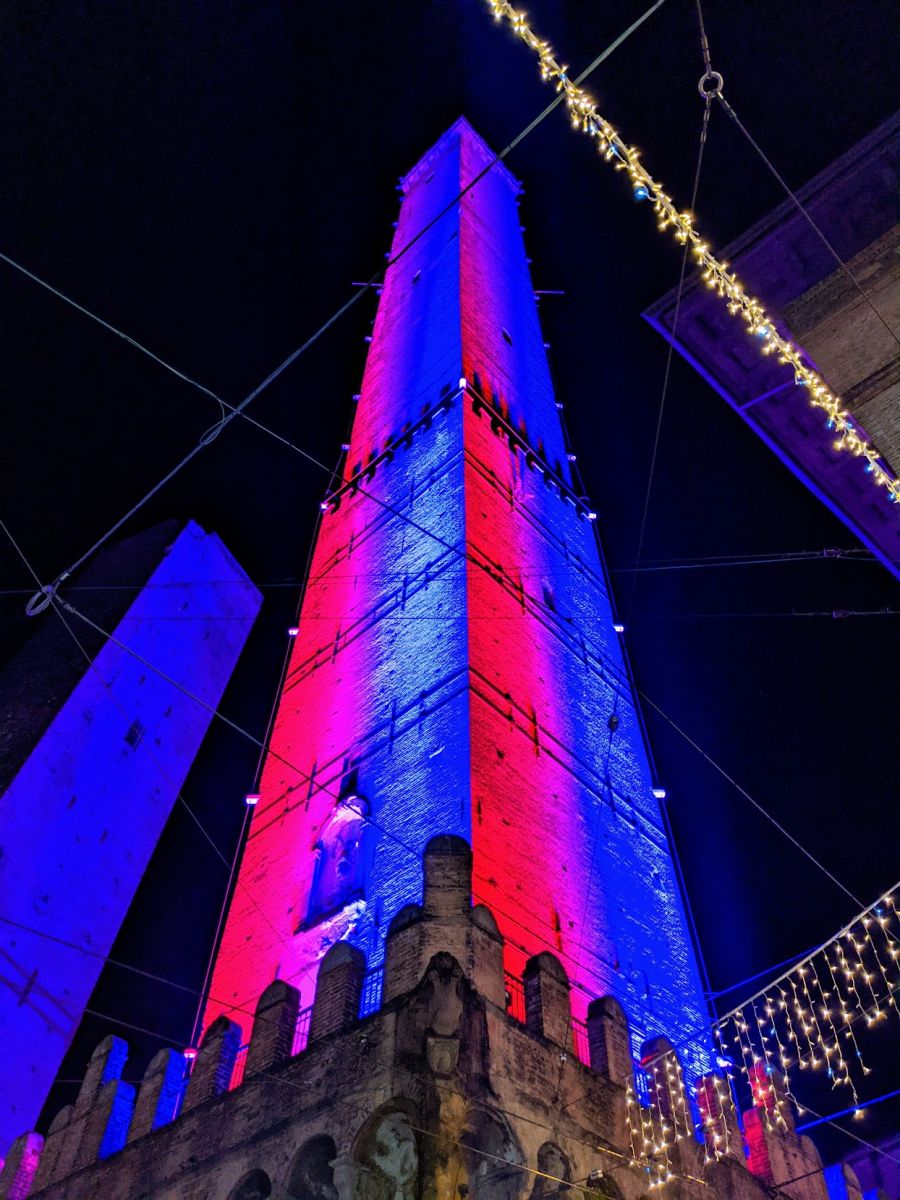
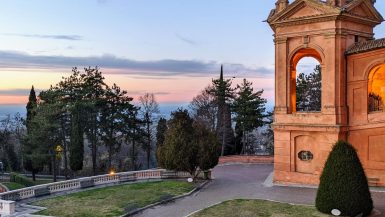
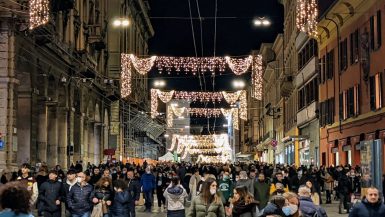
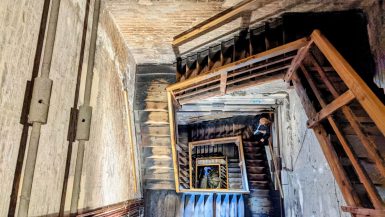
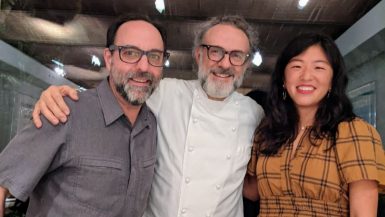
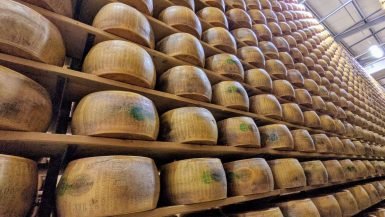
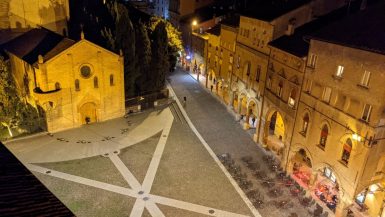
Leave a reply